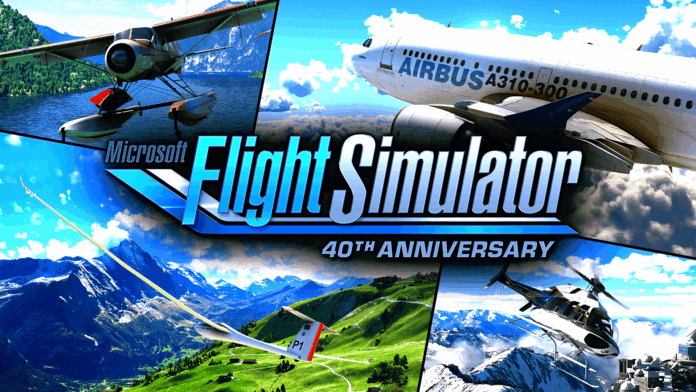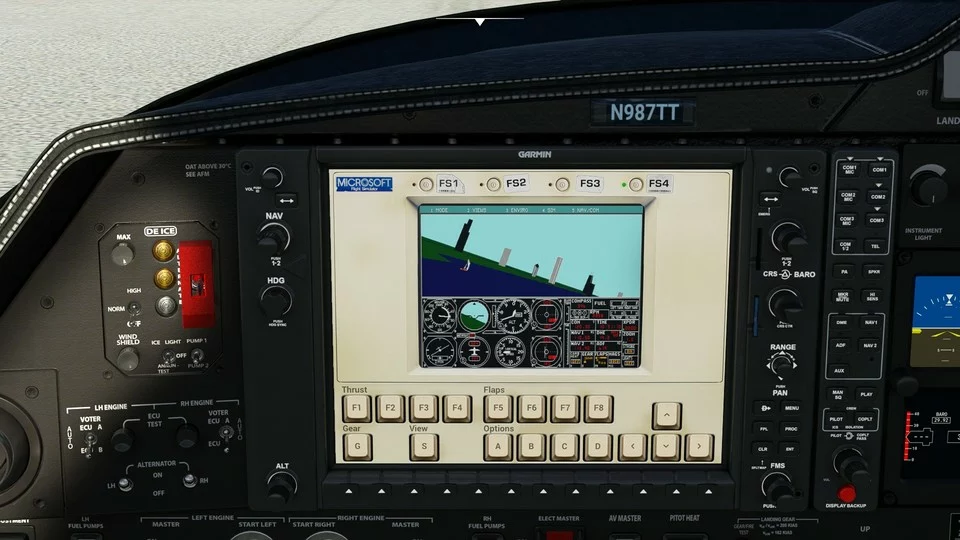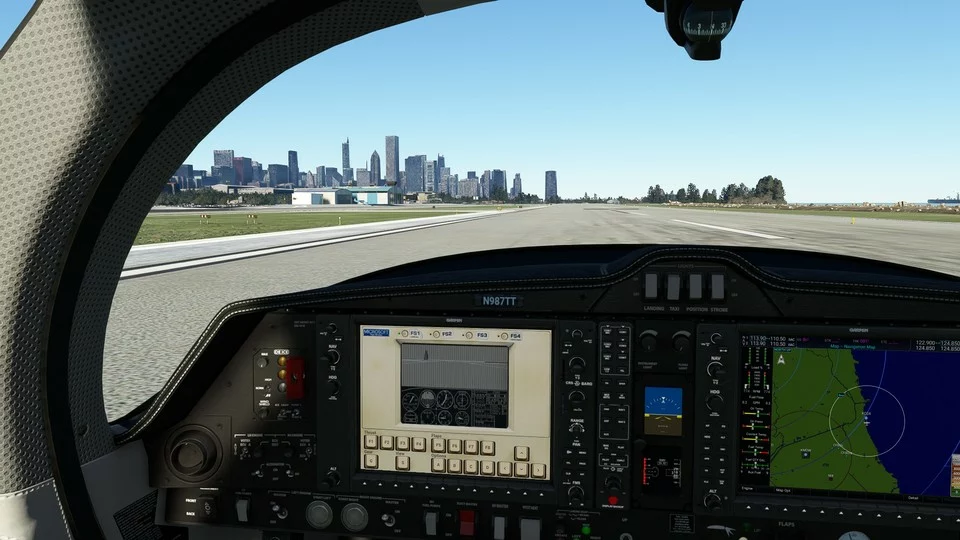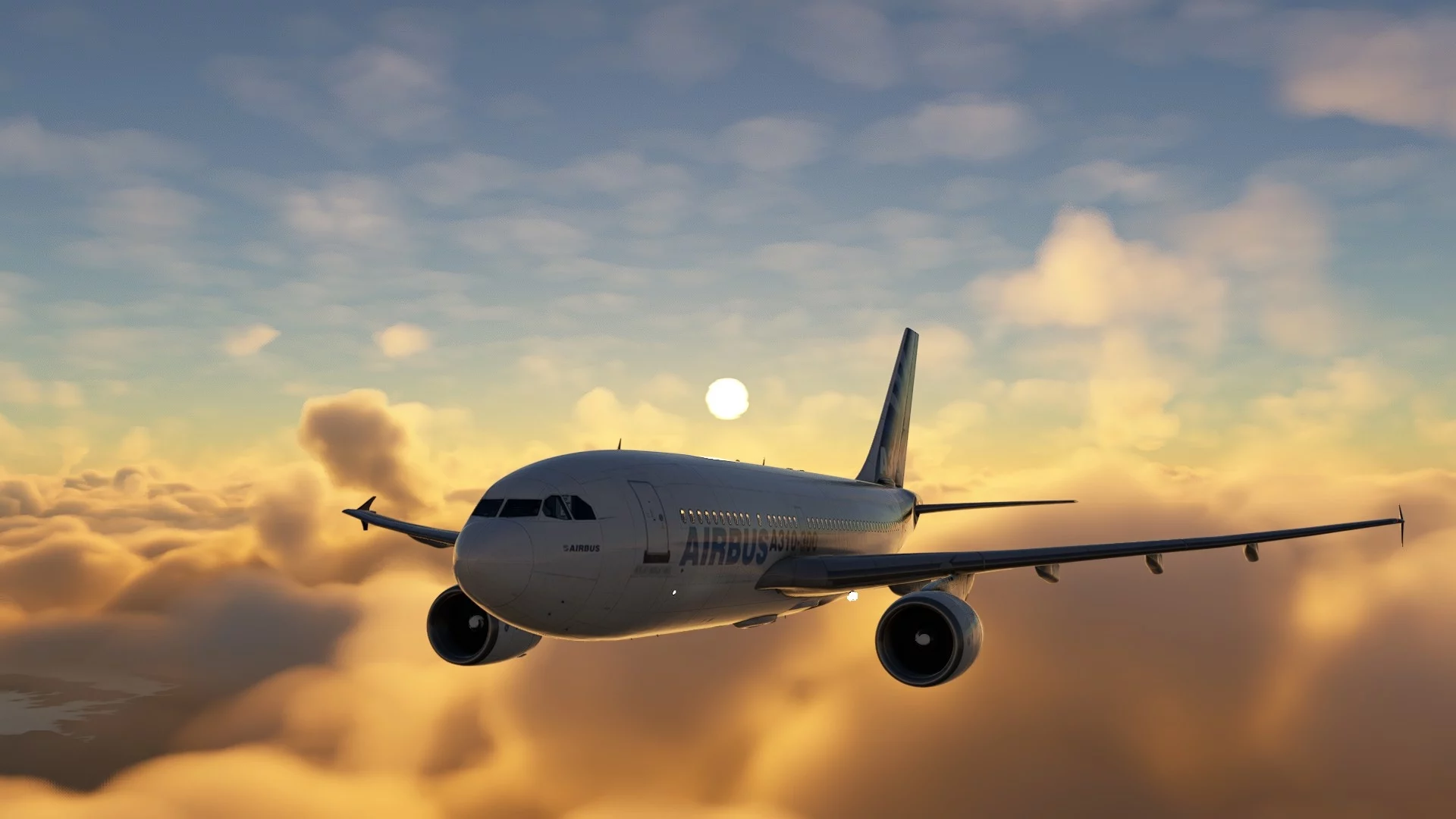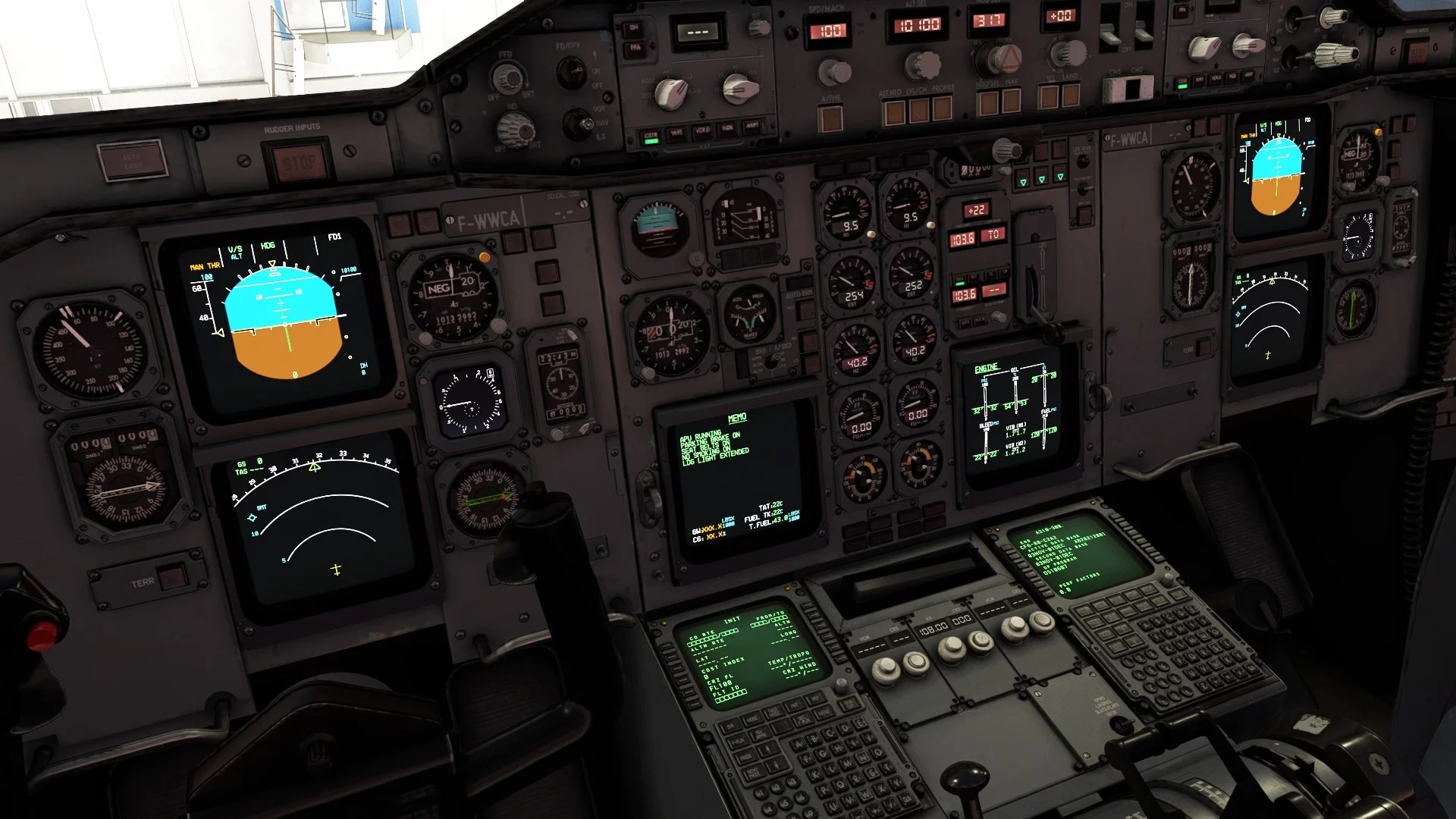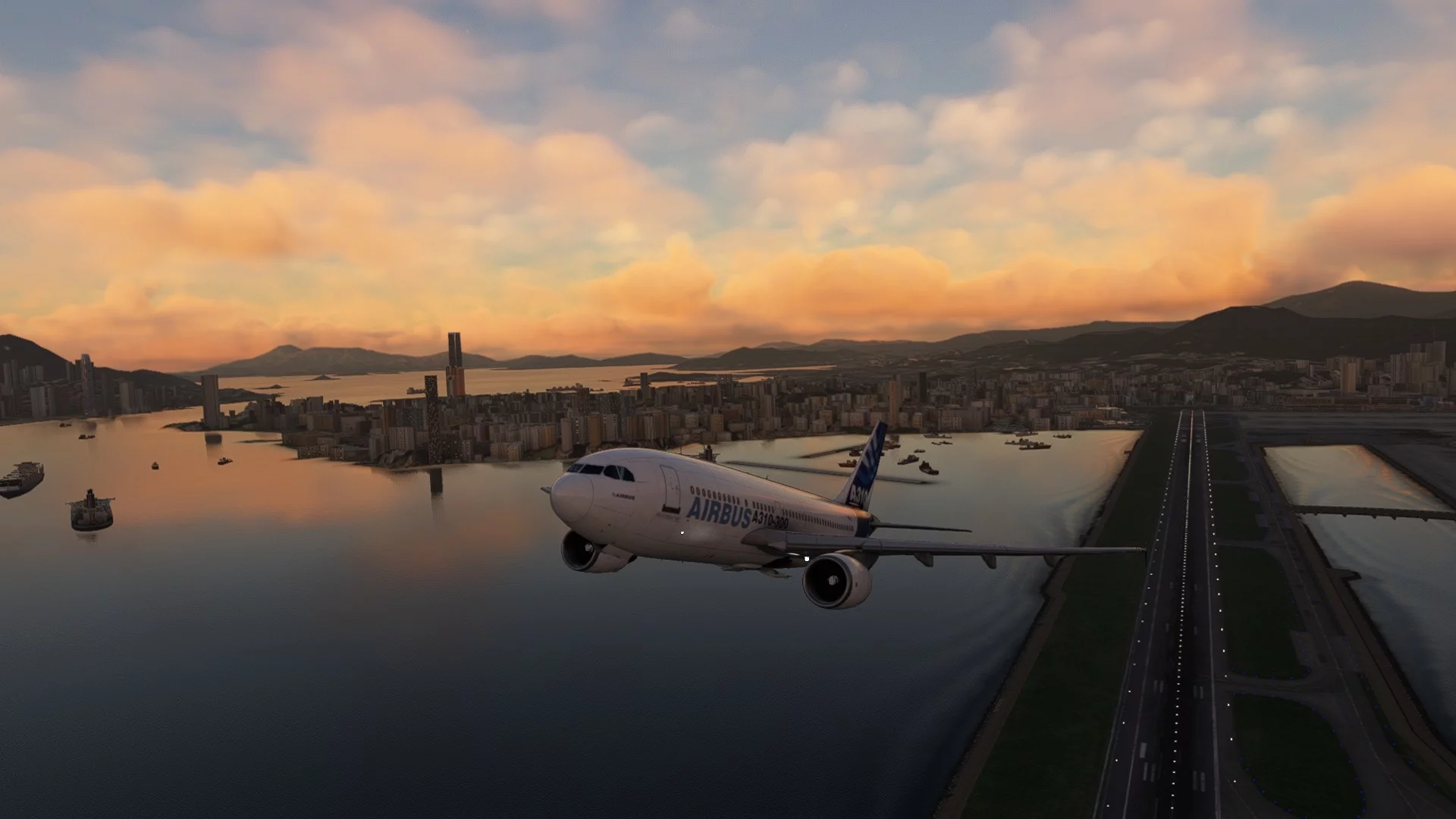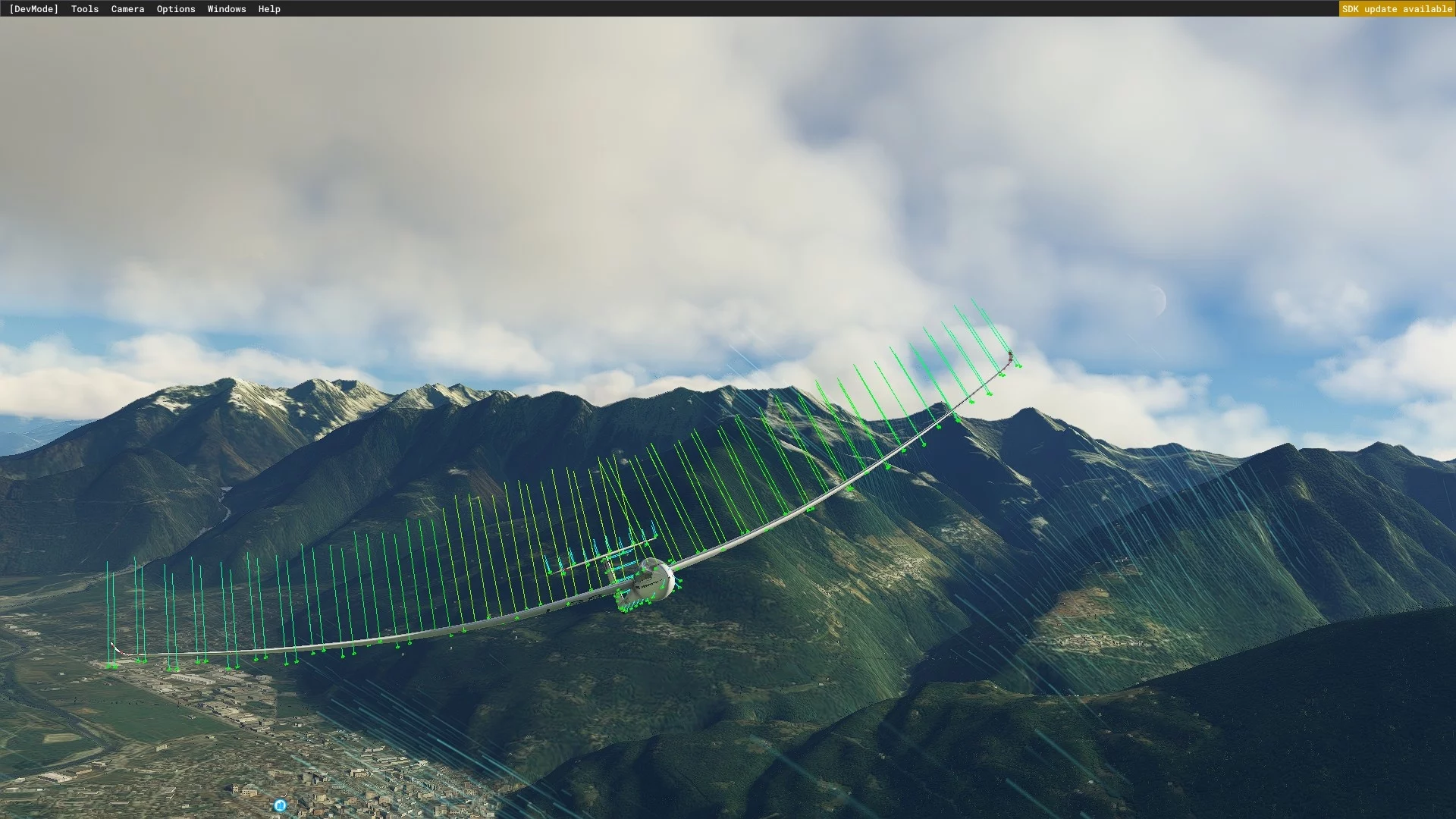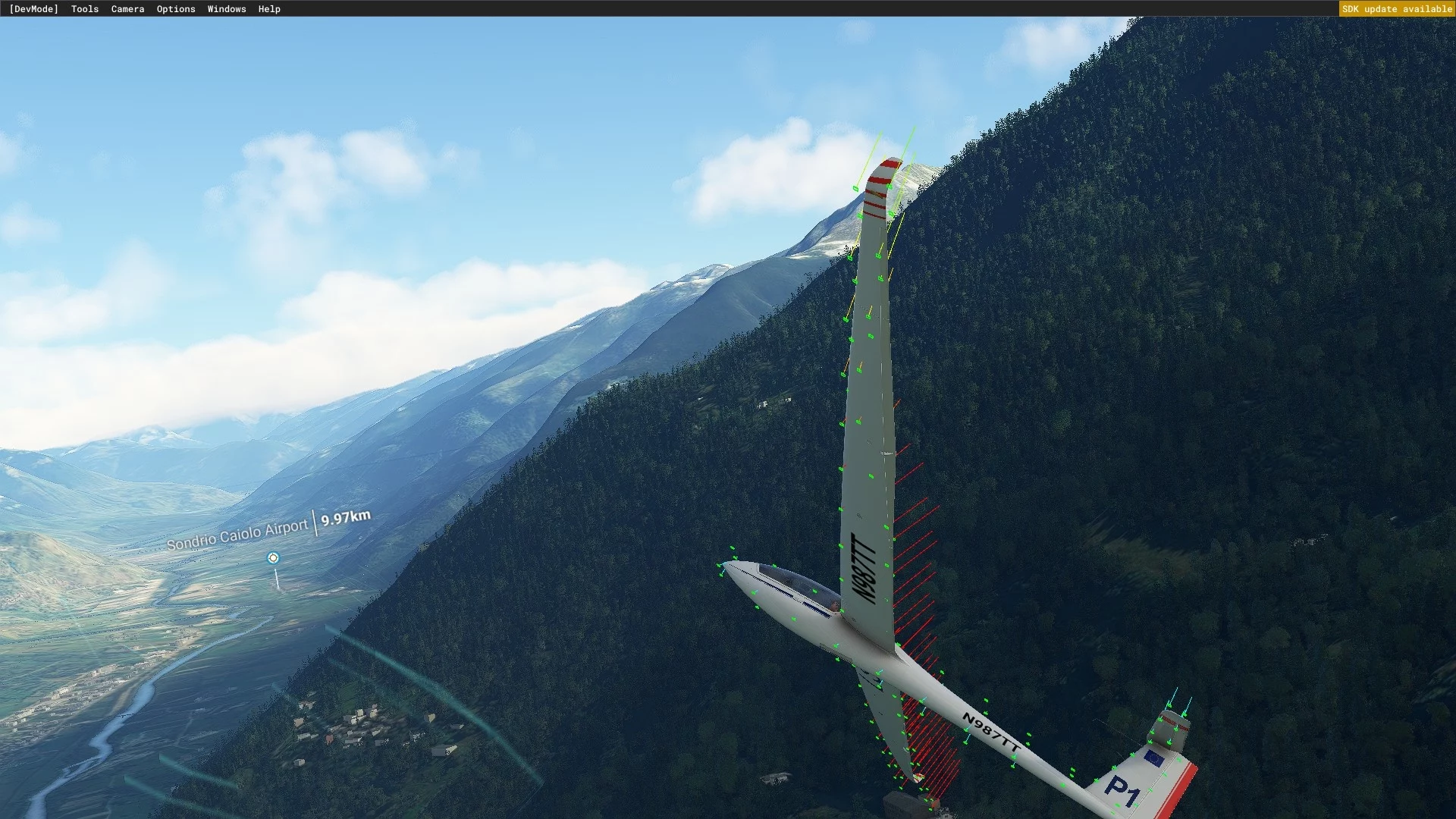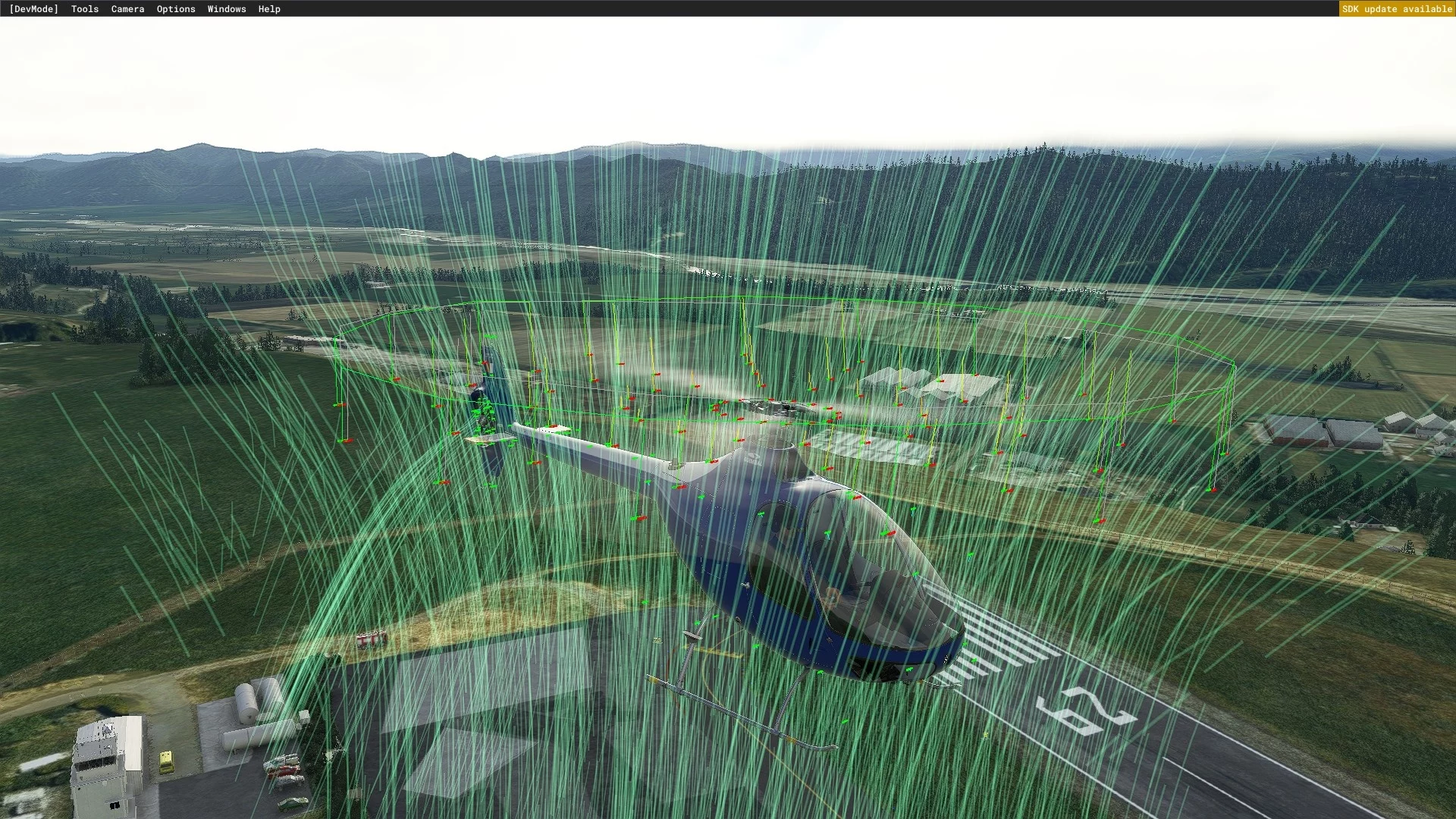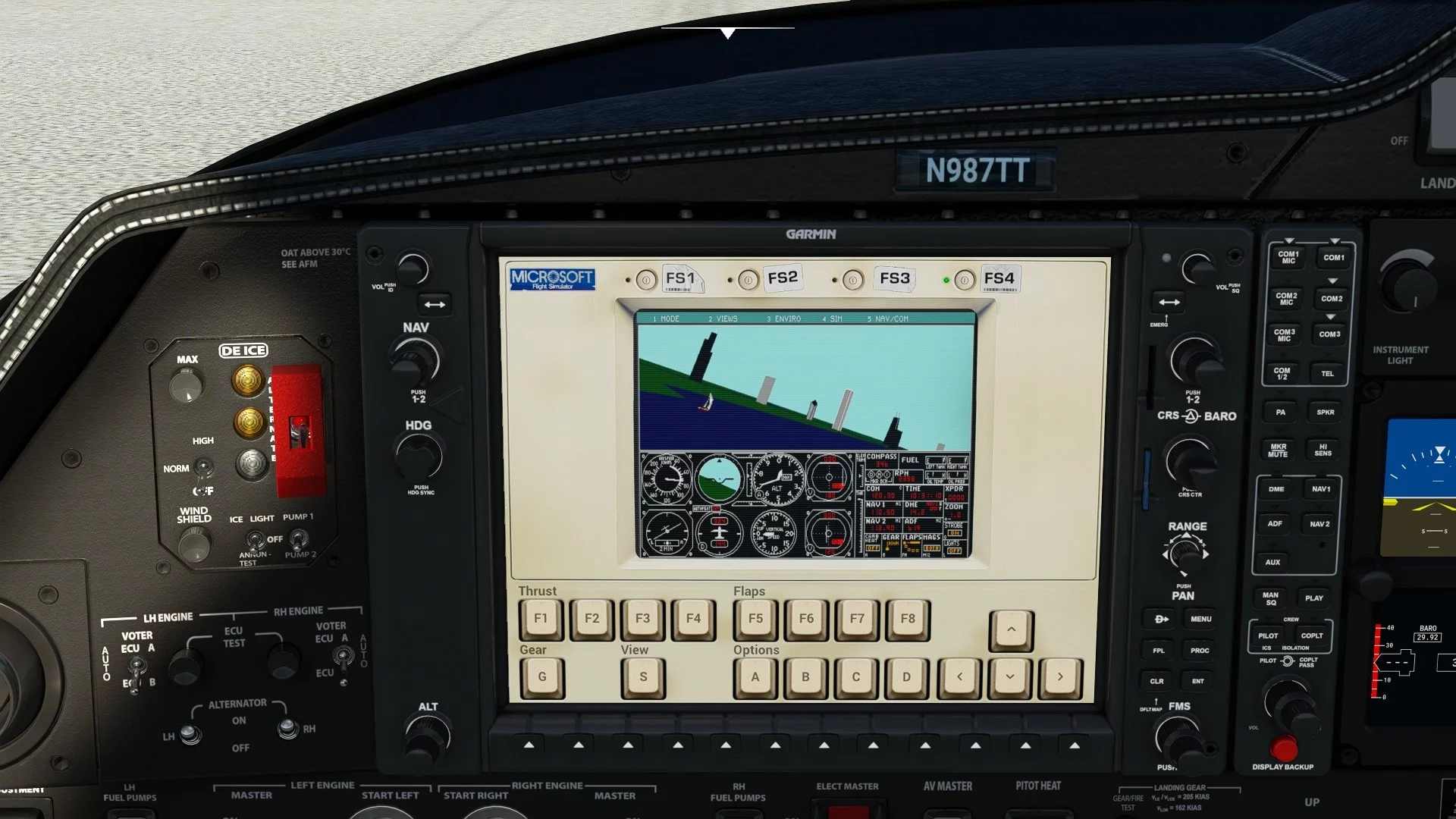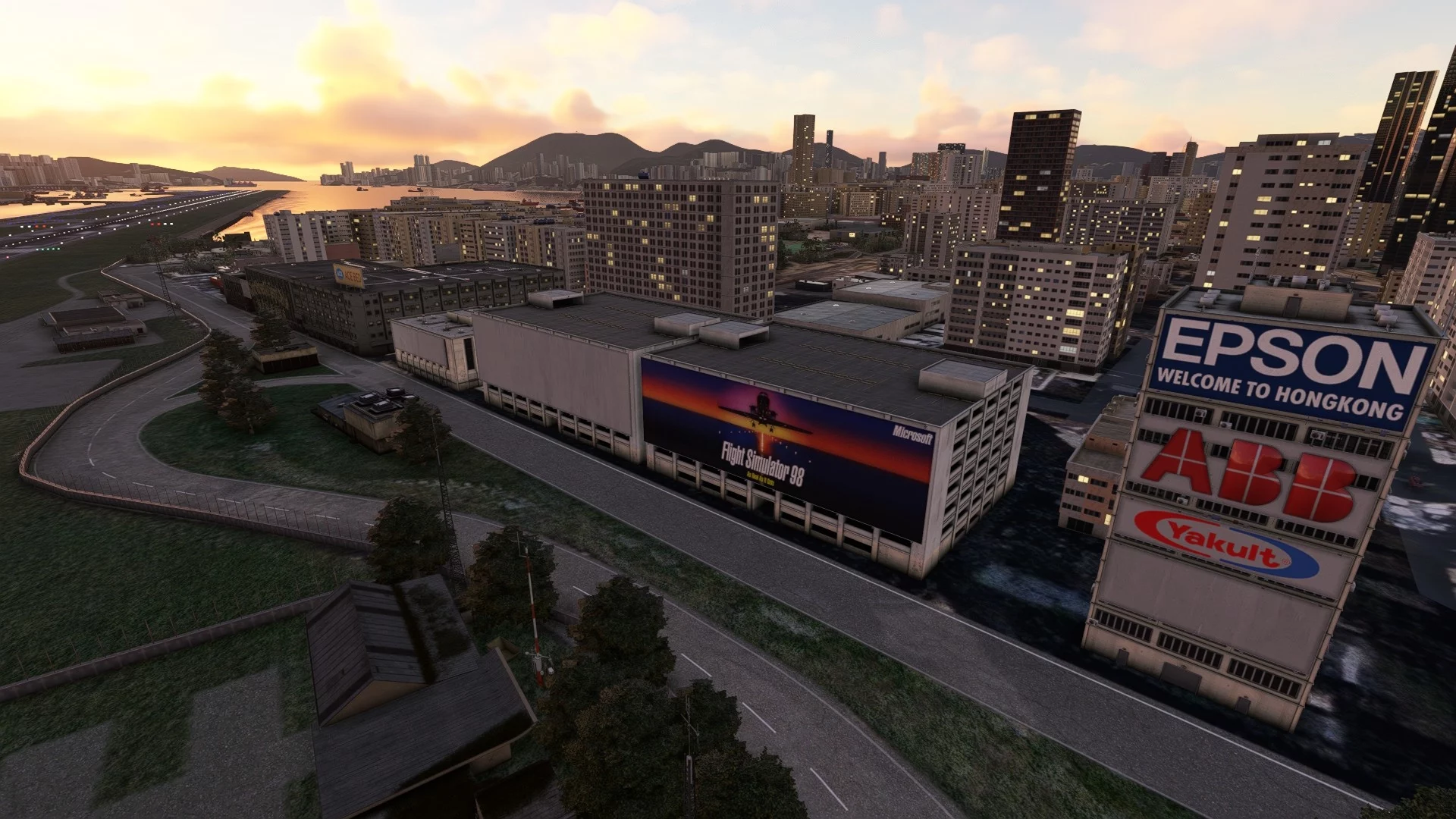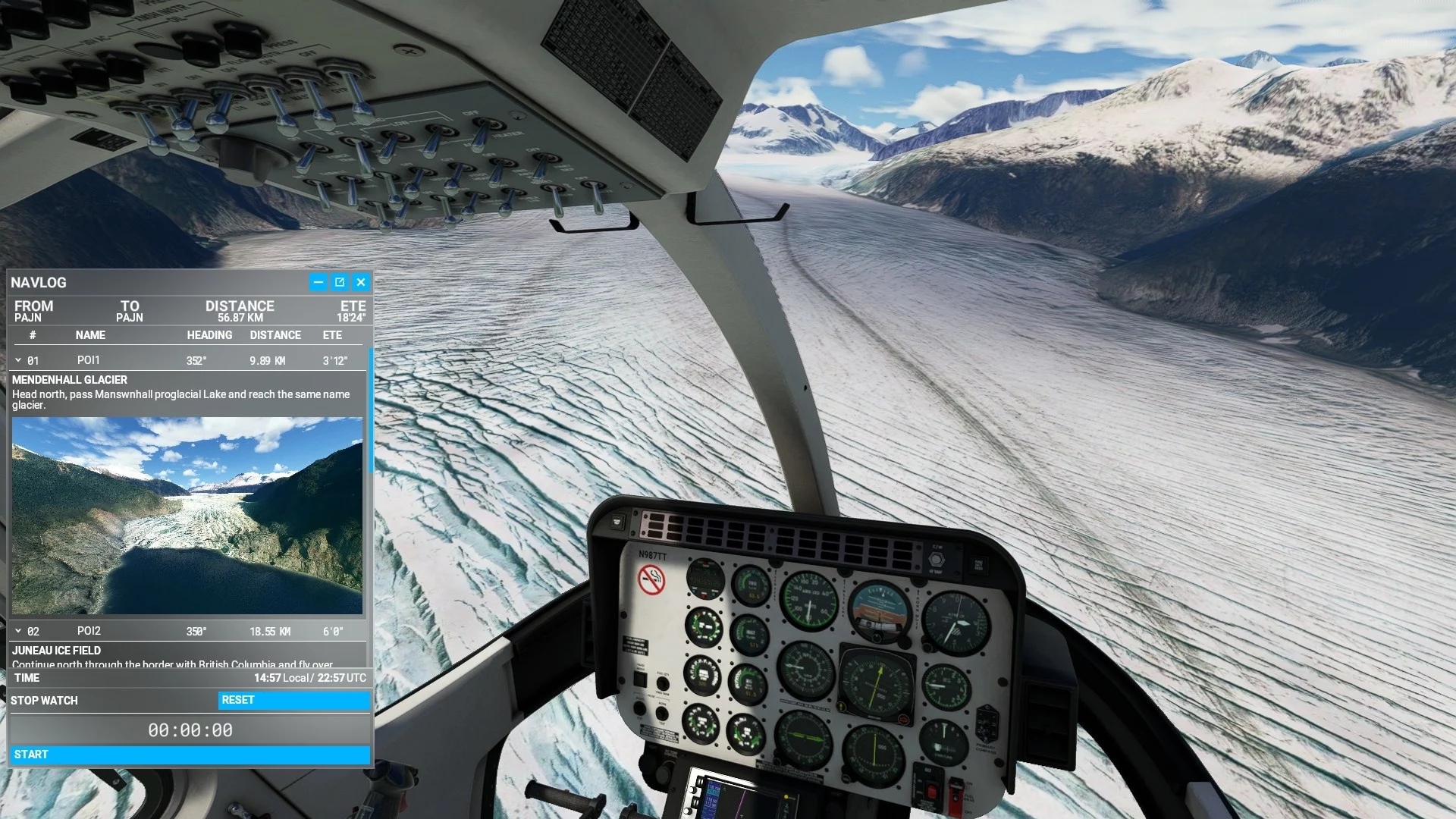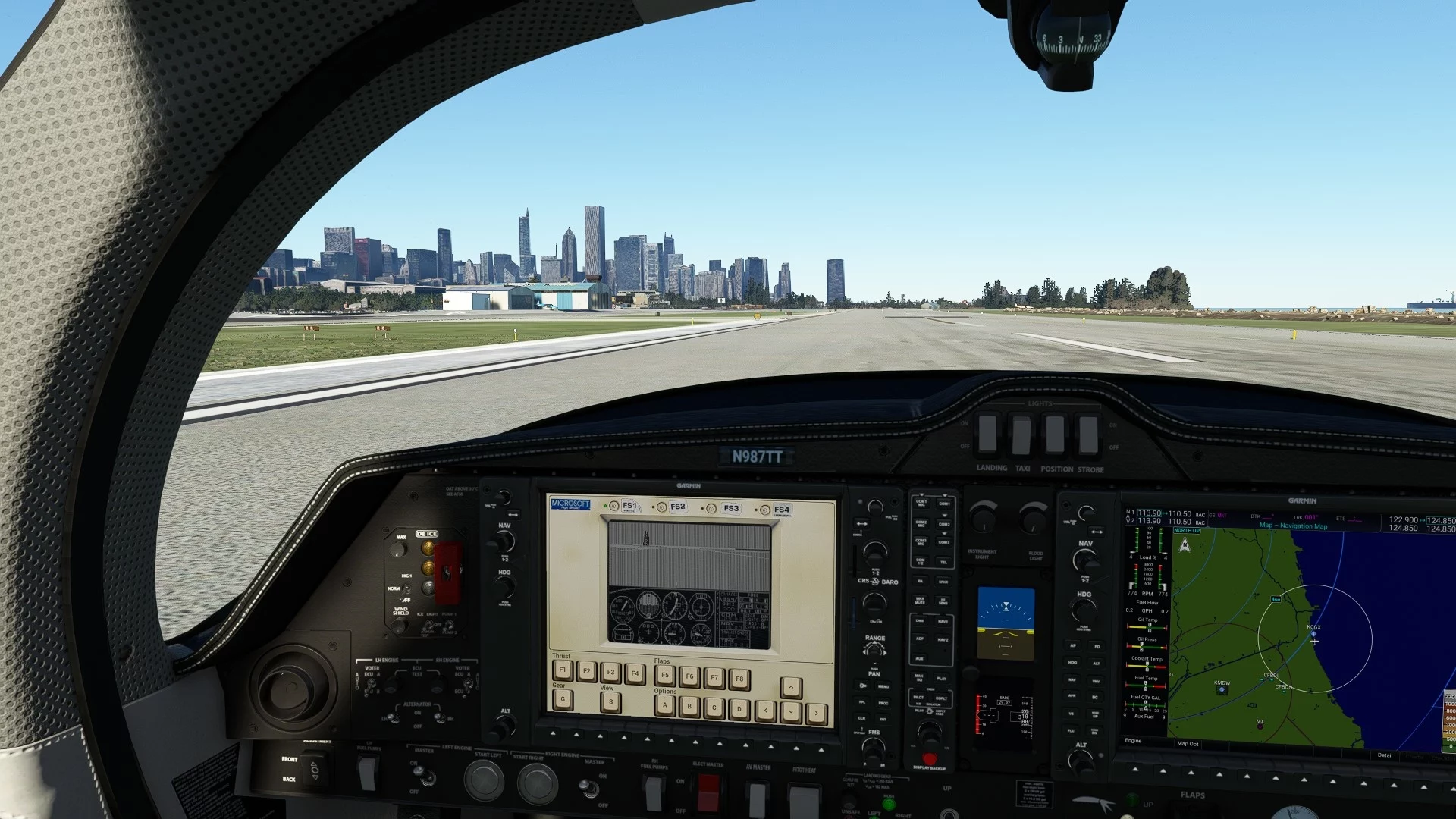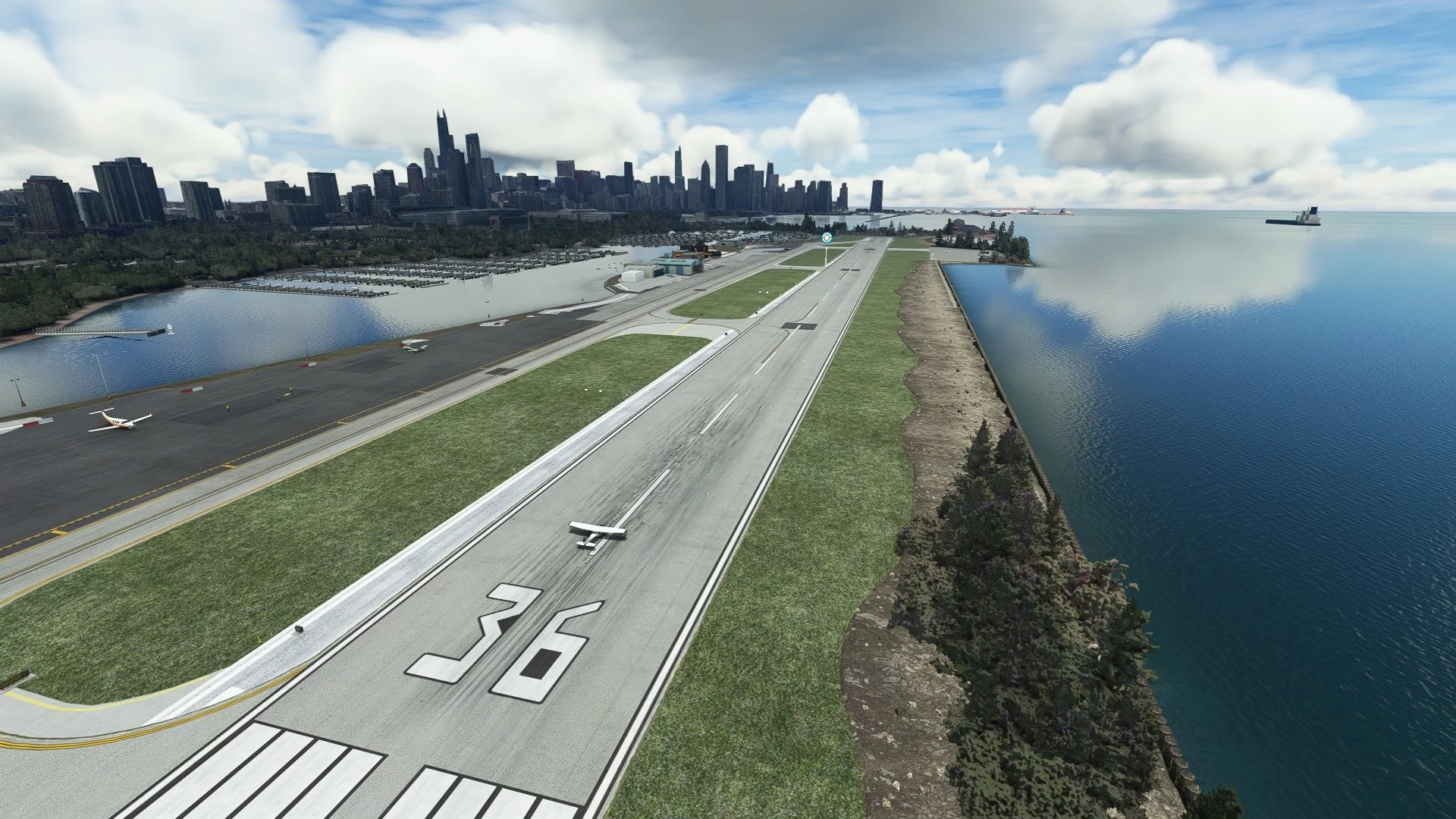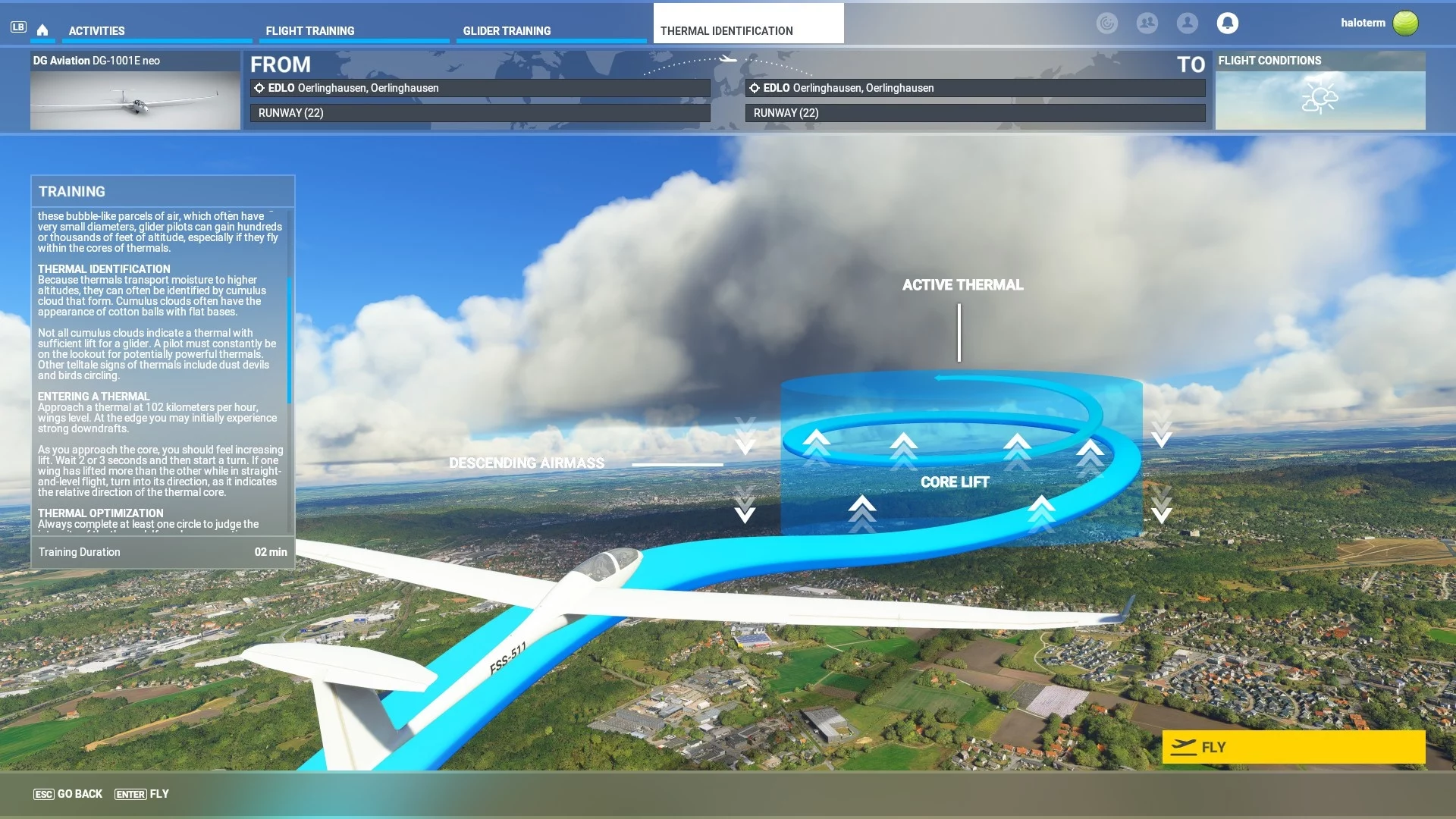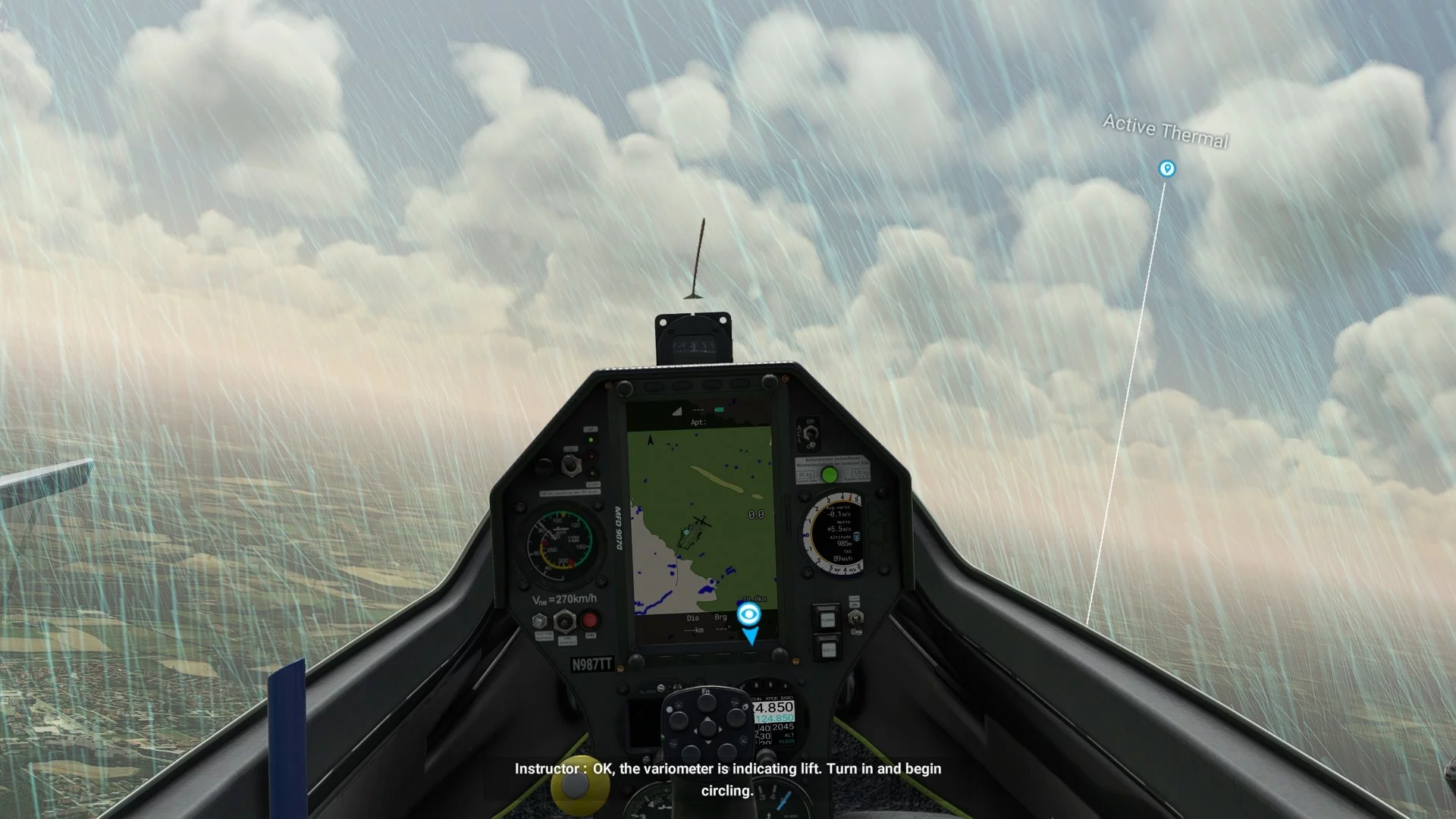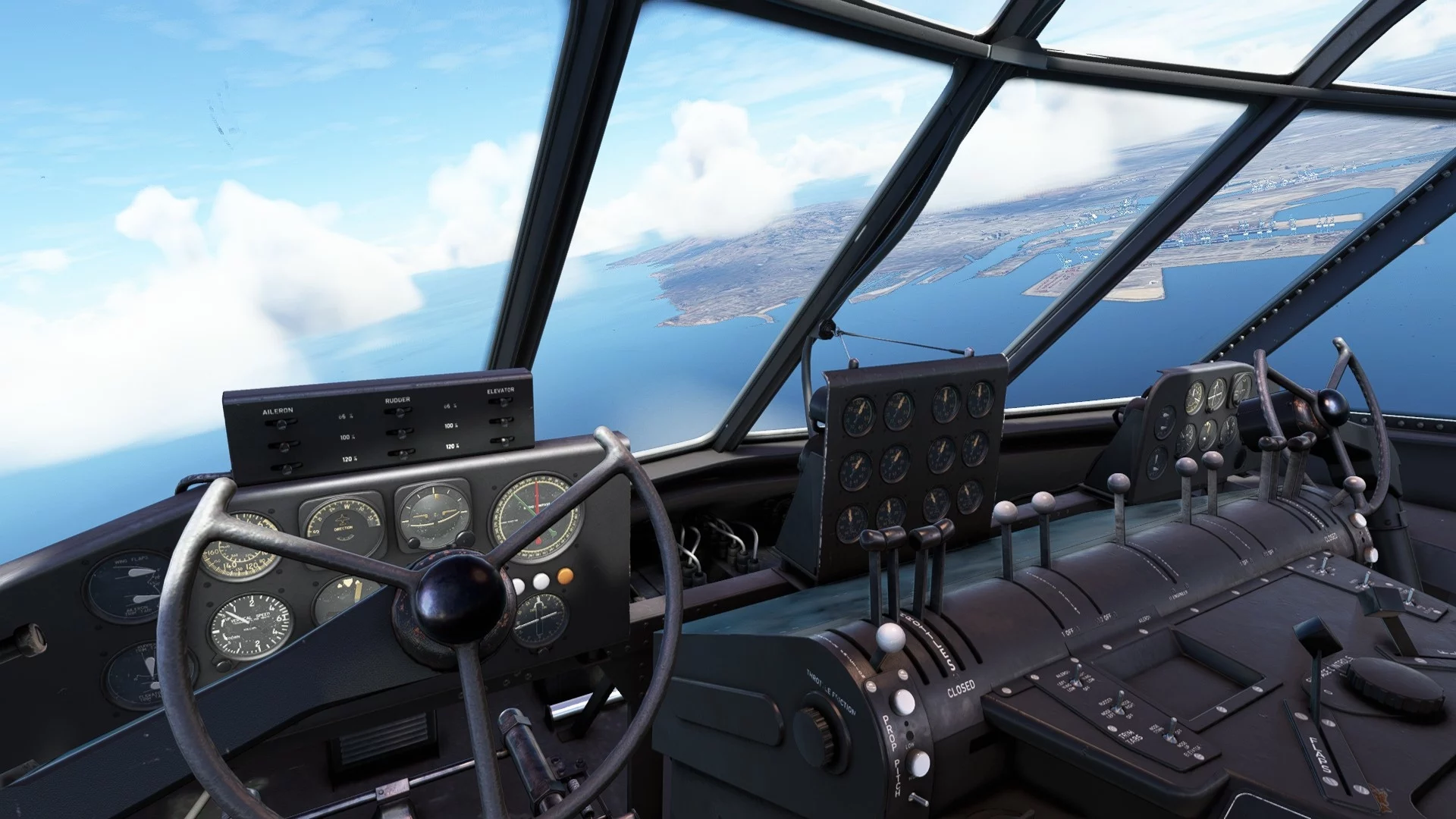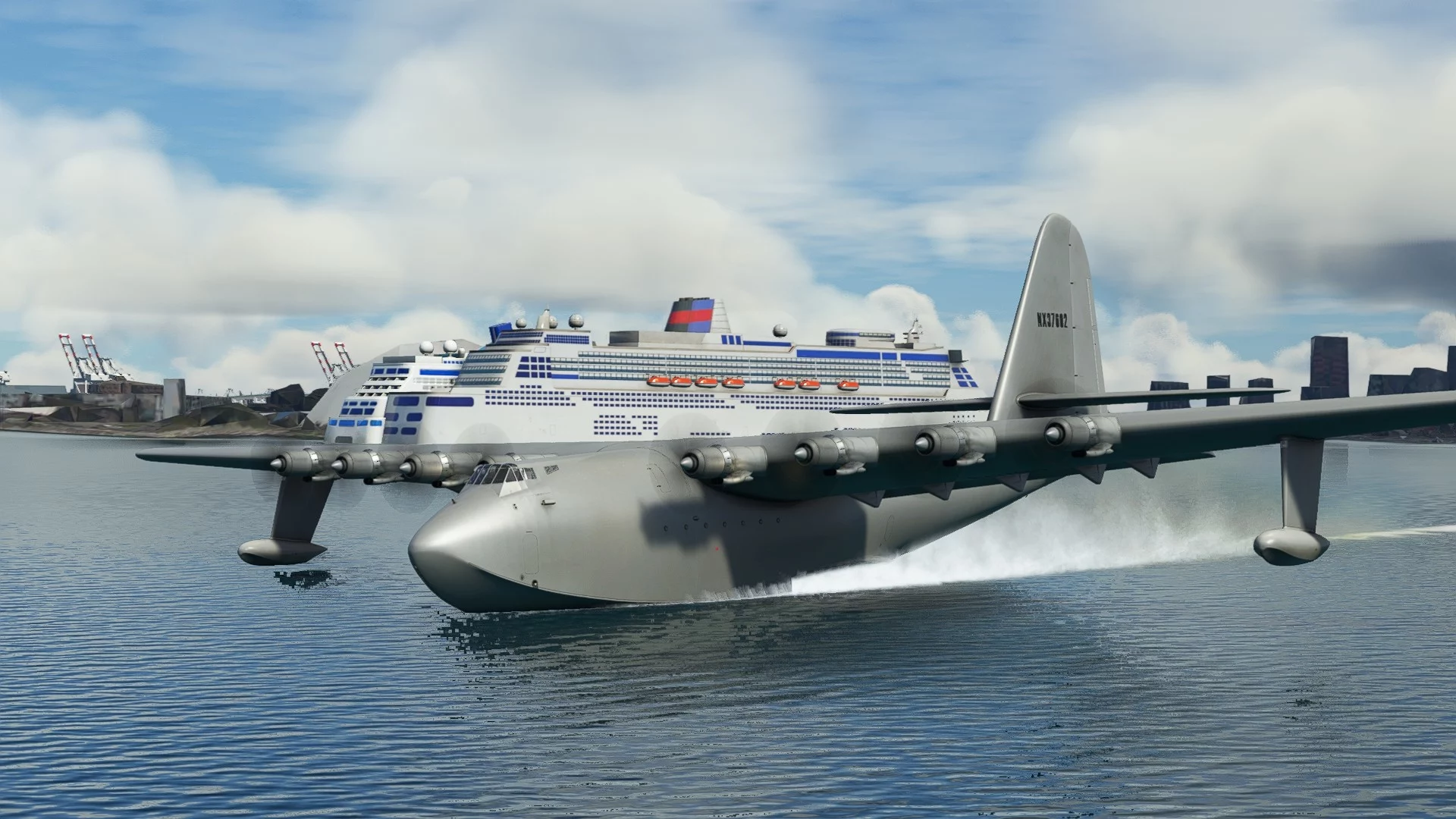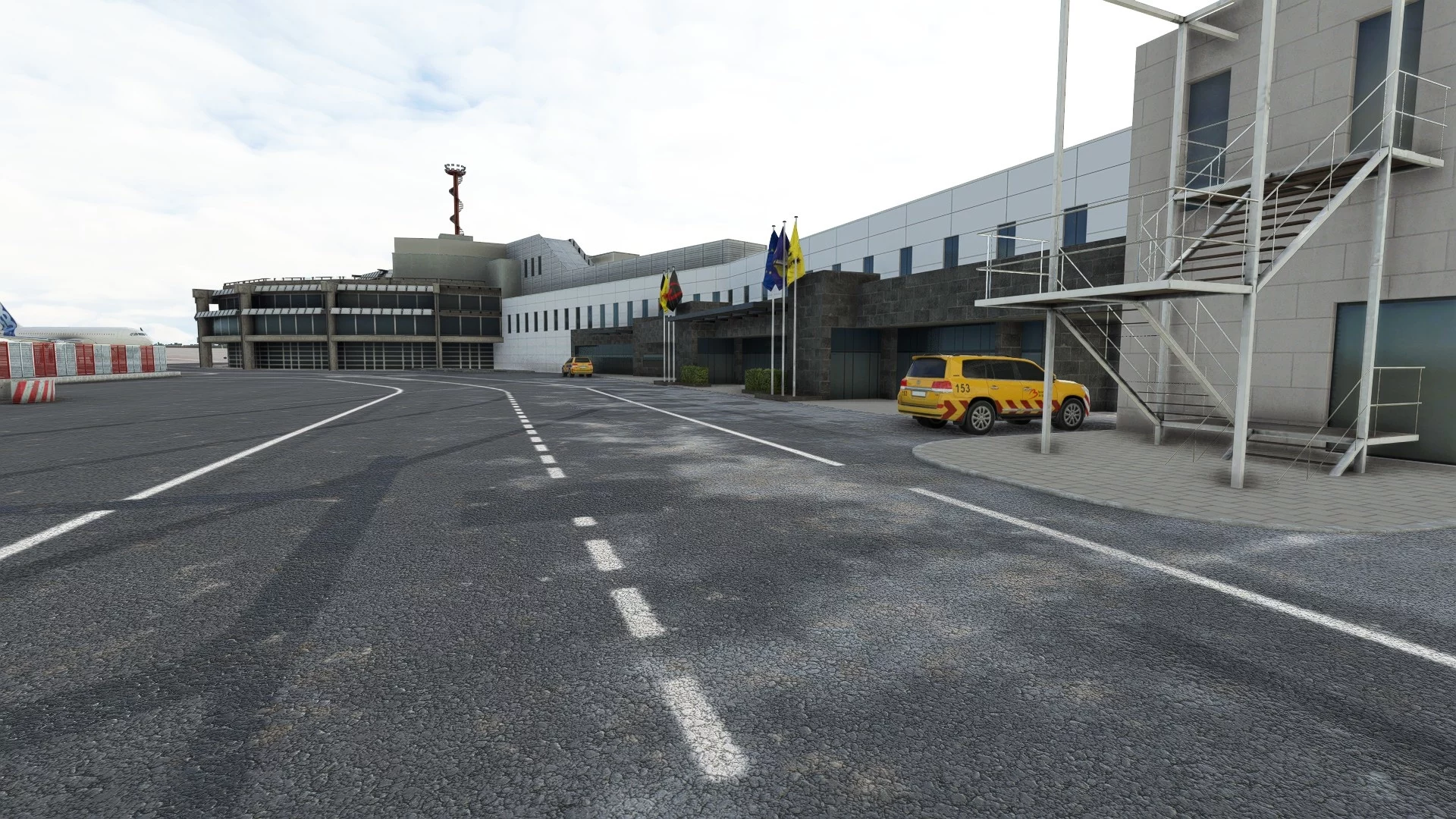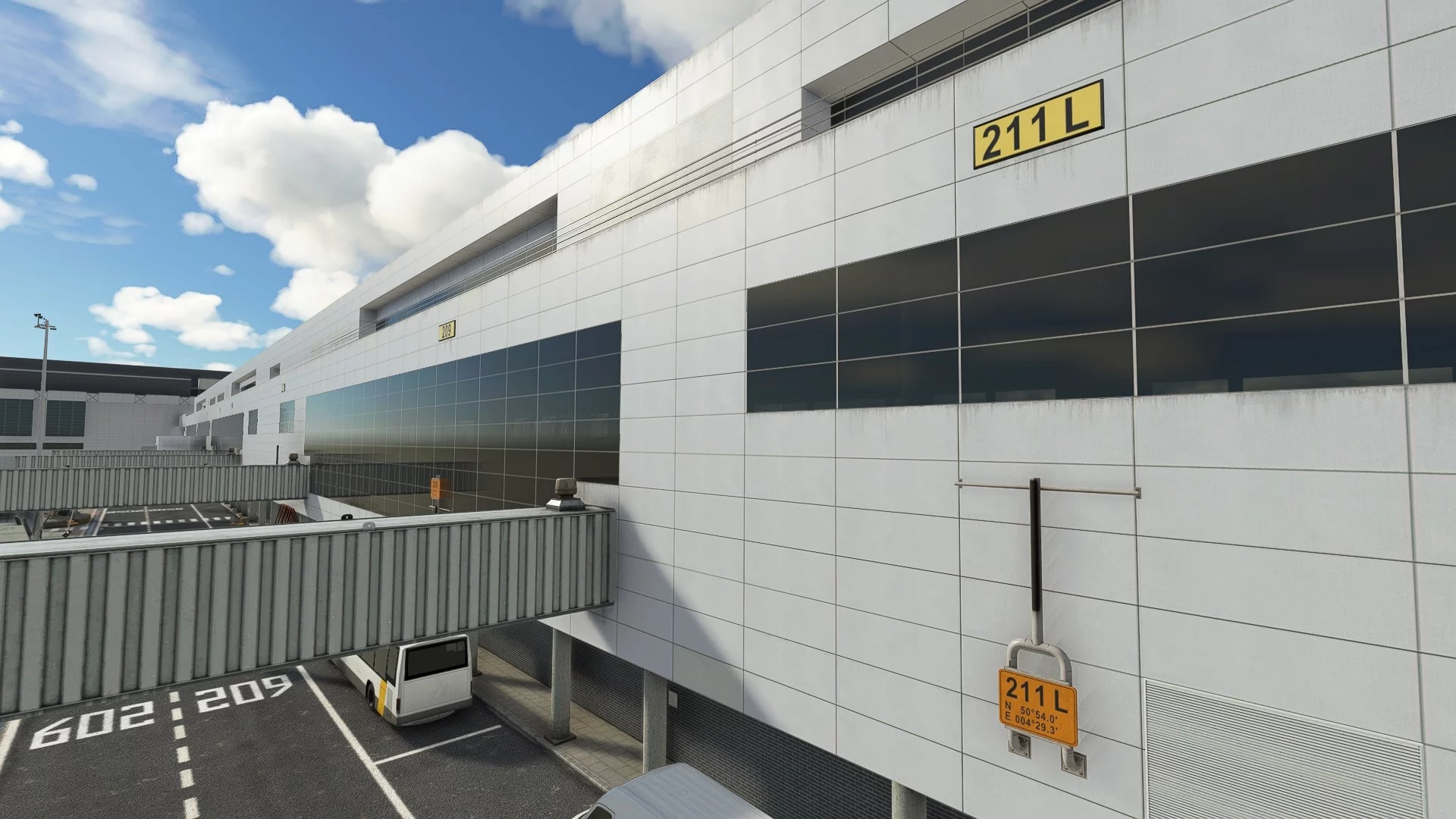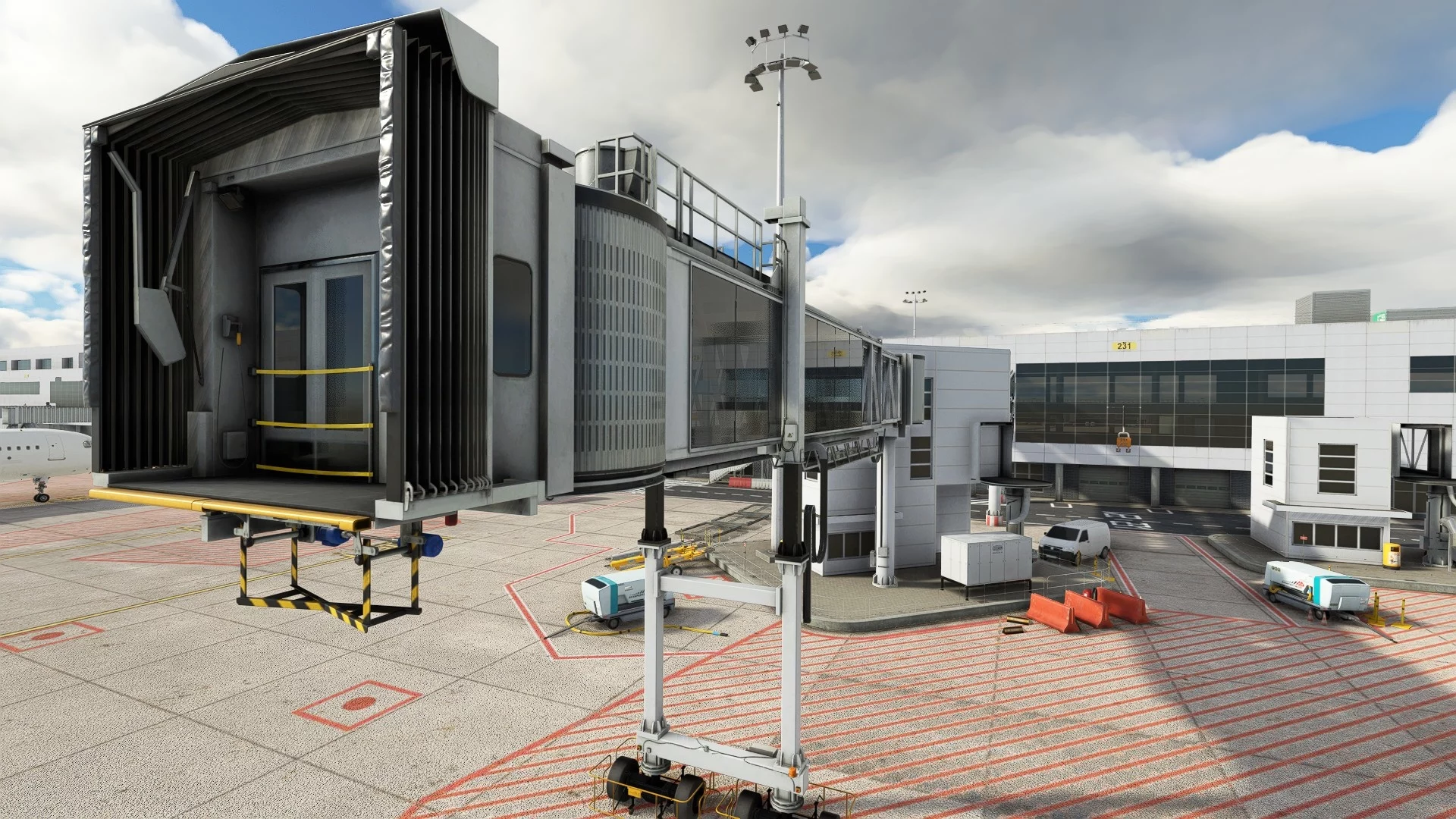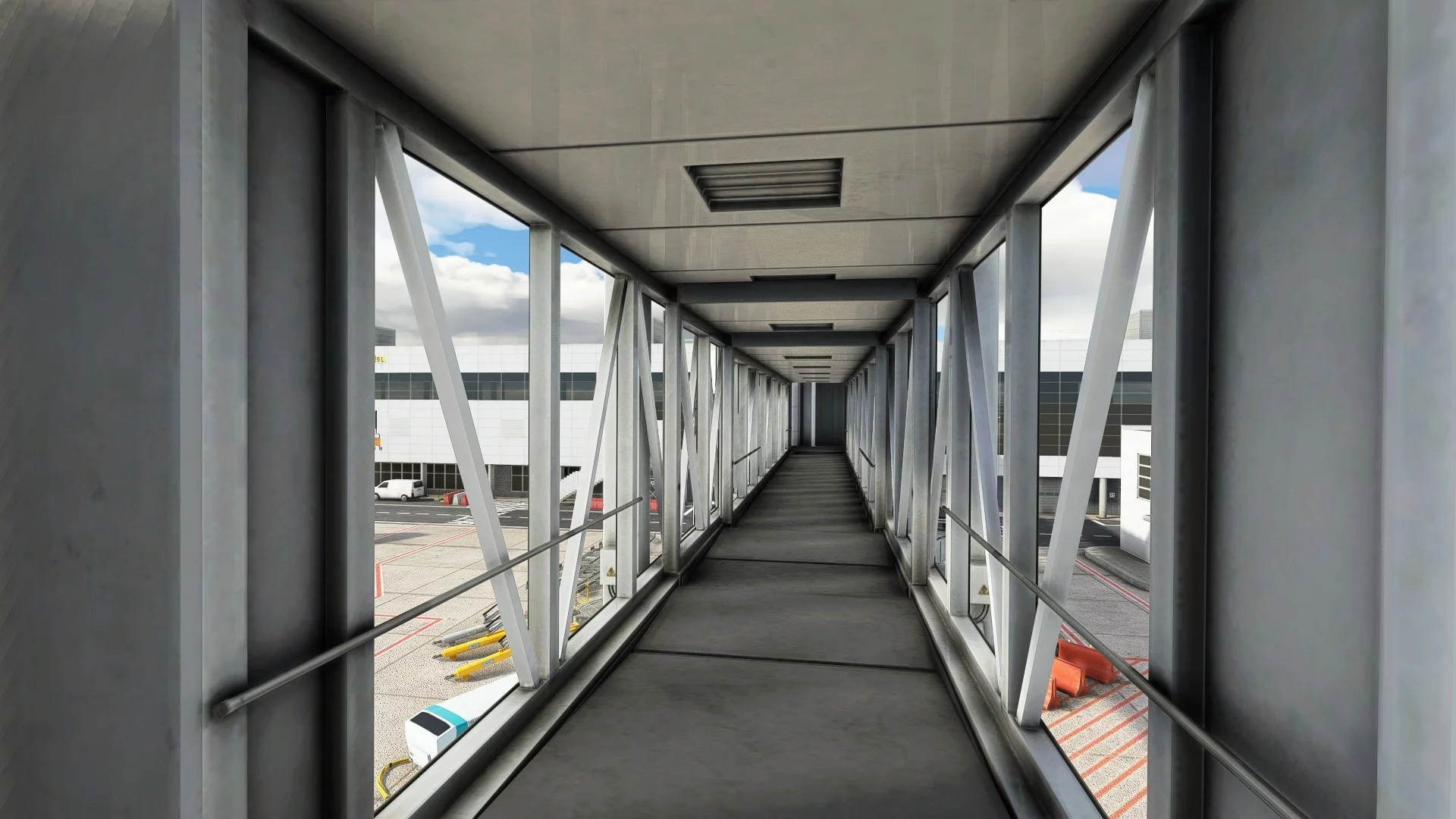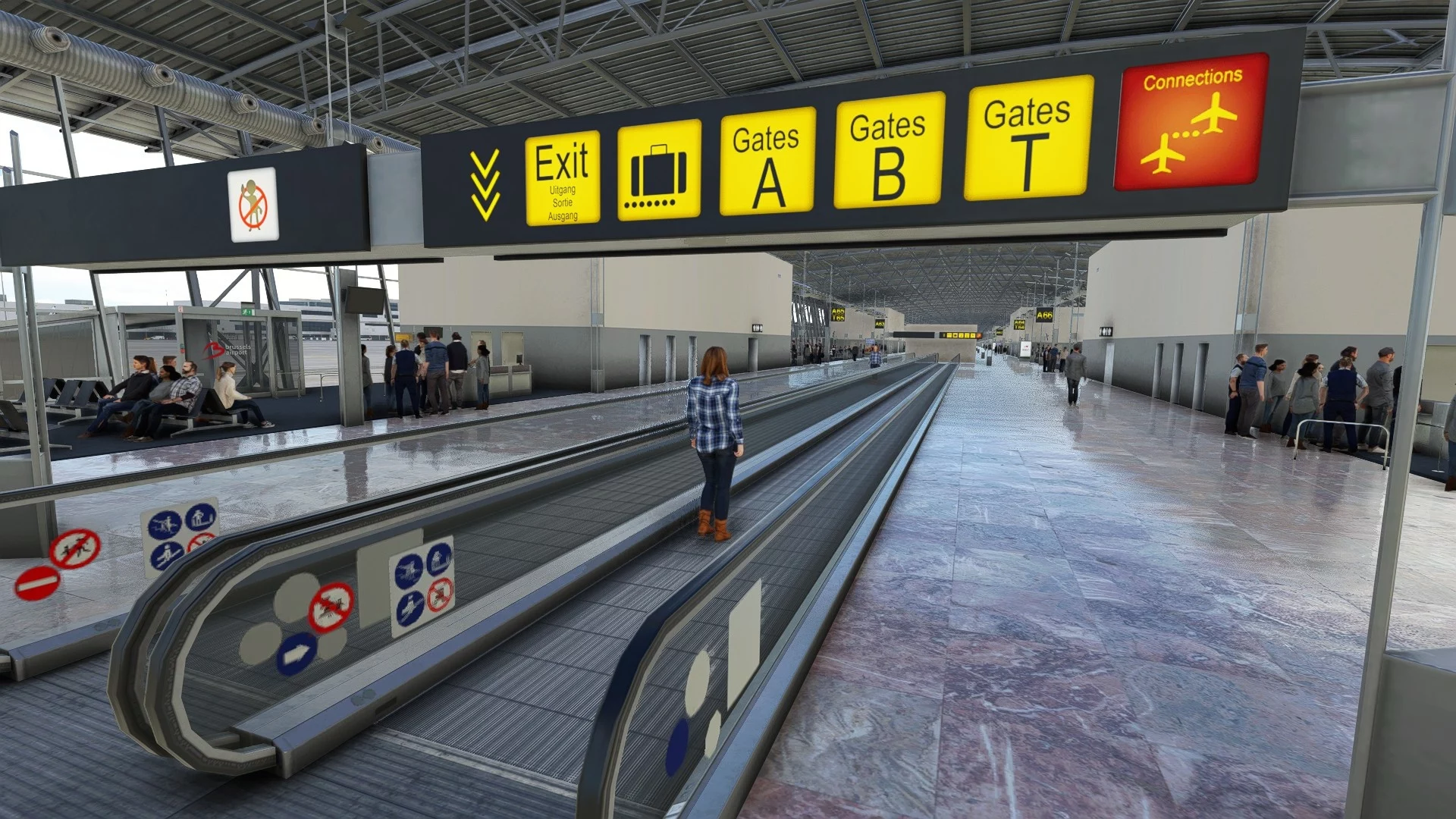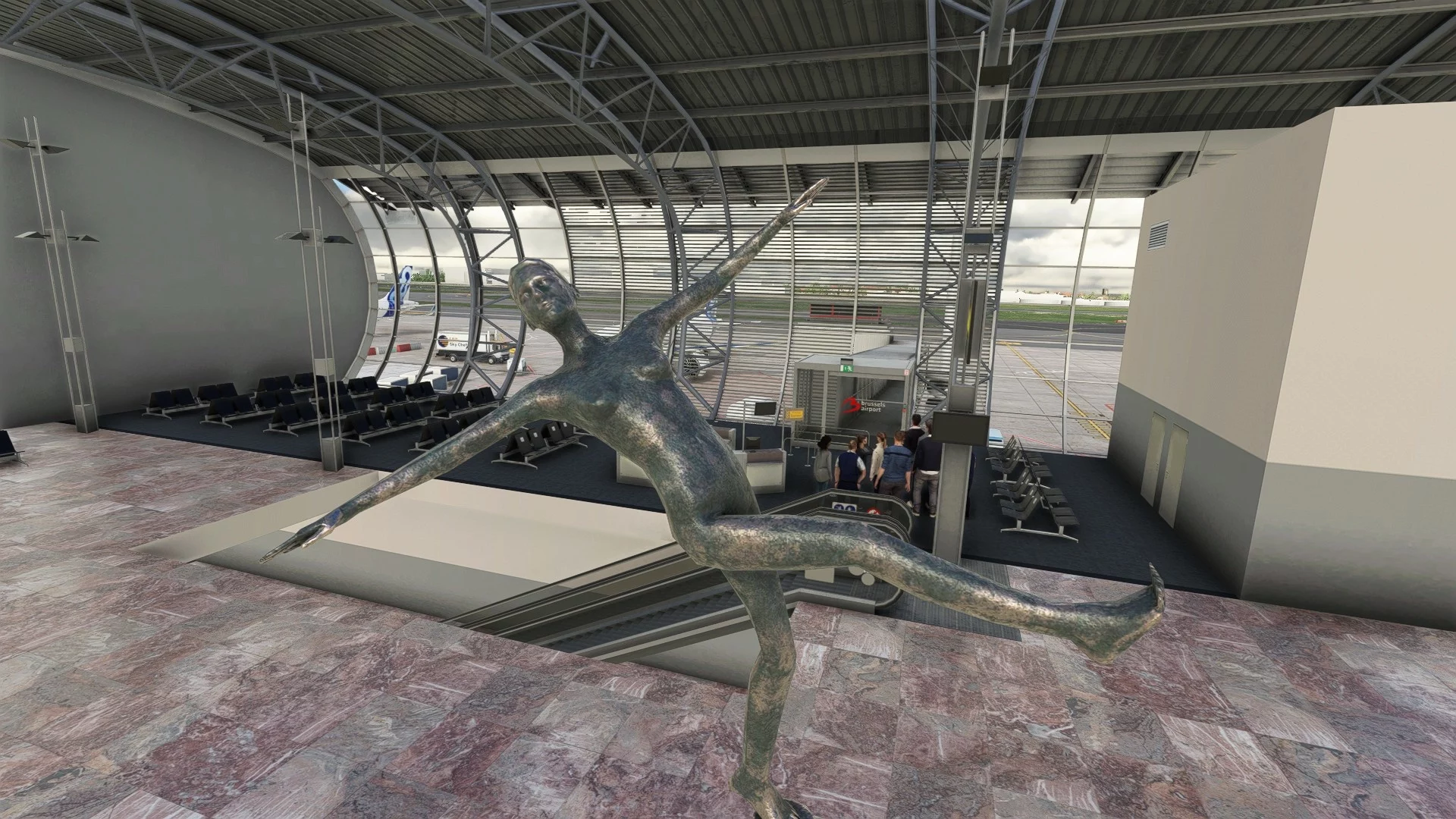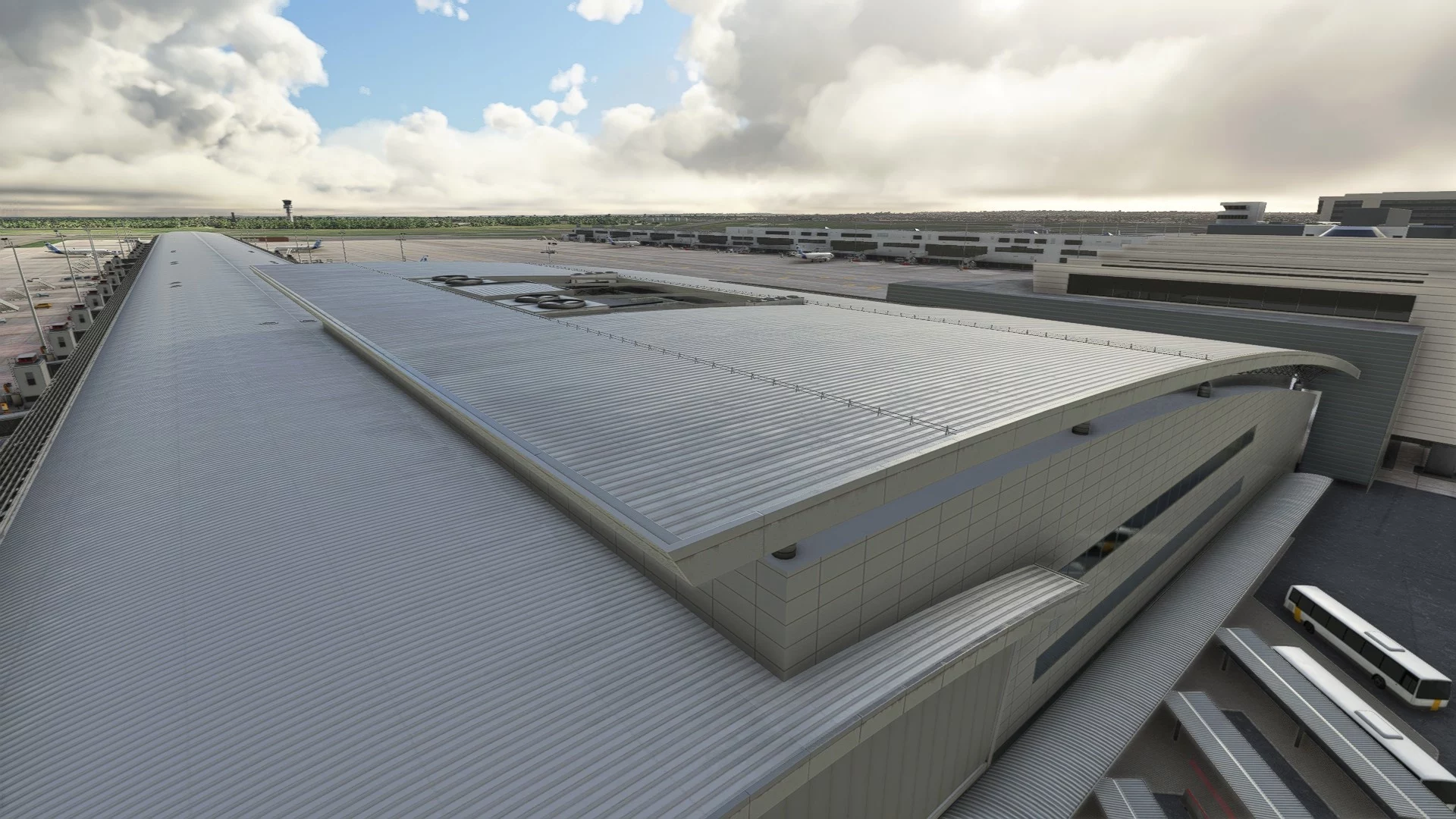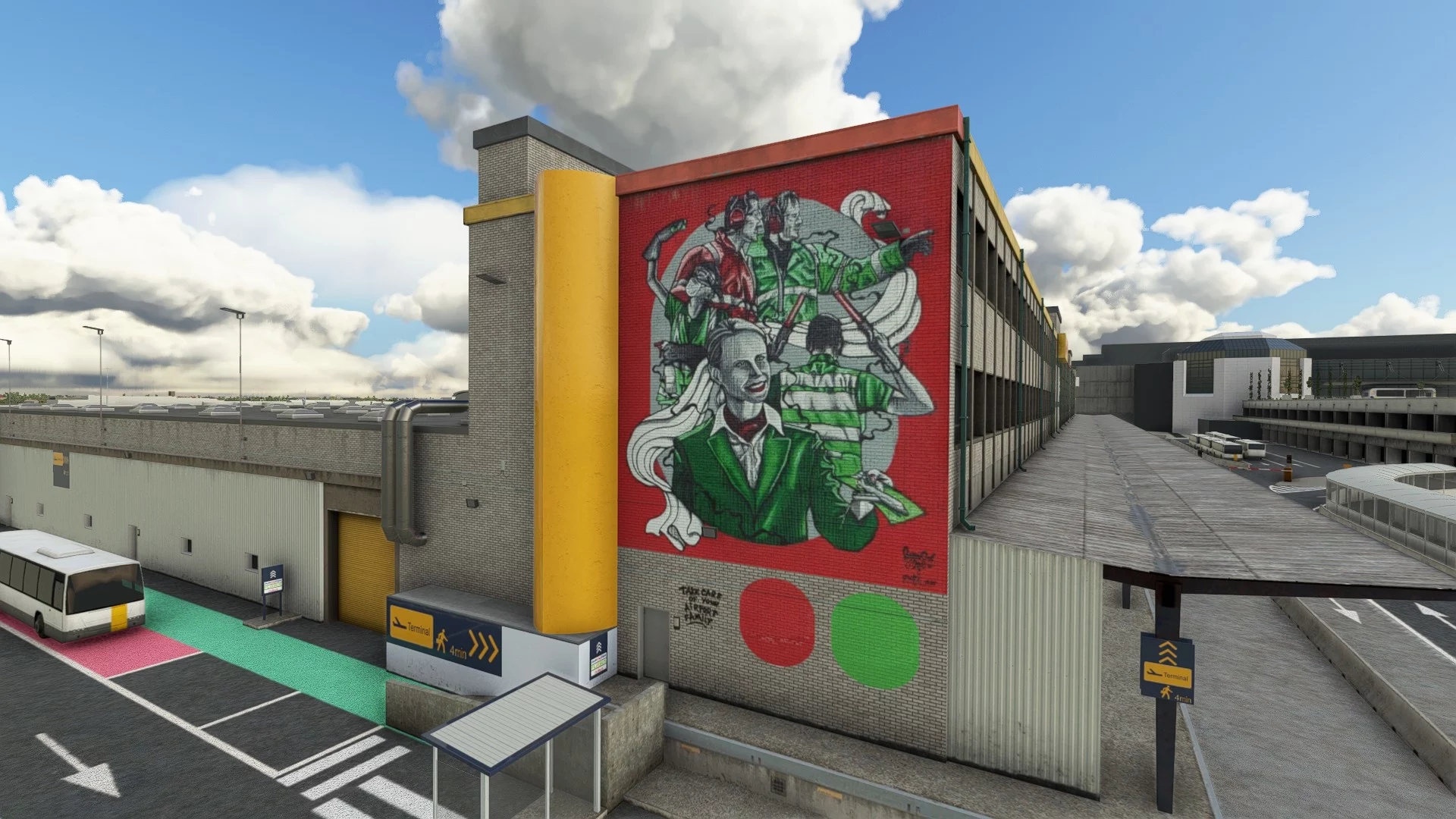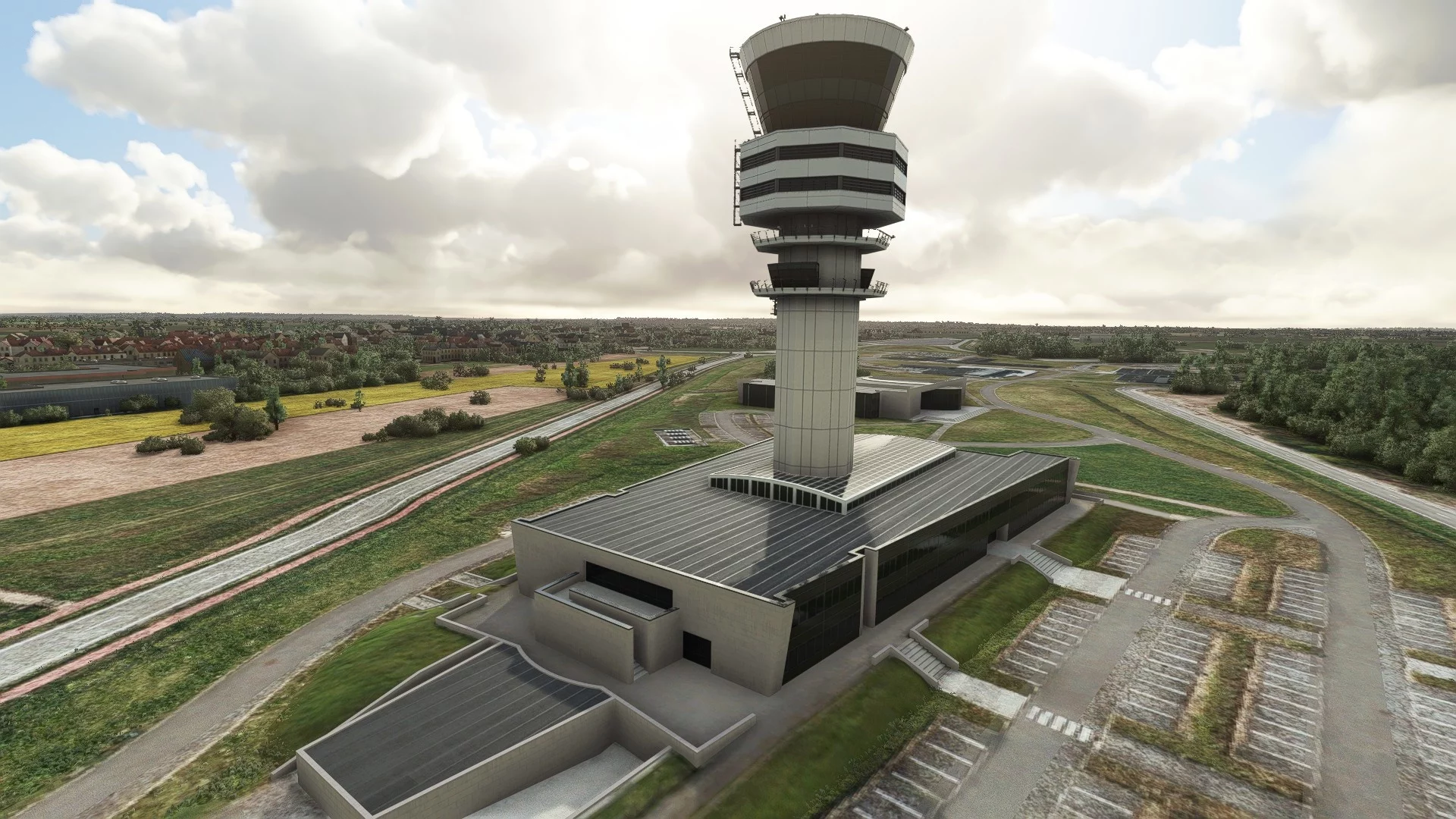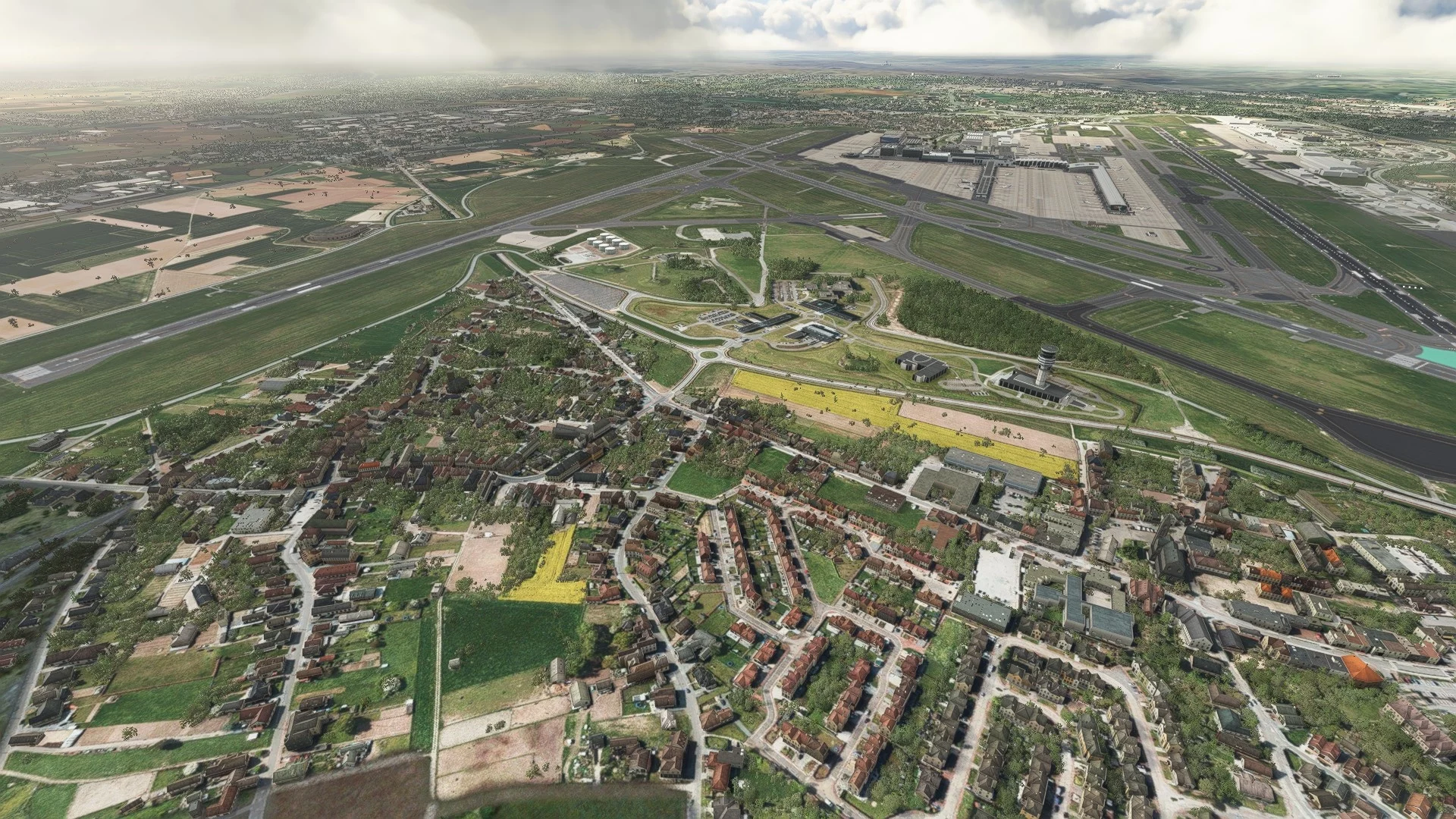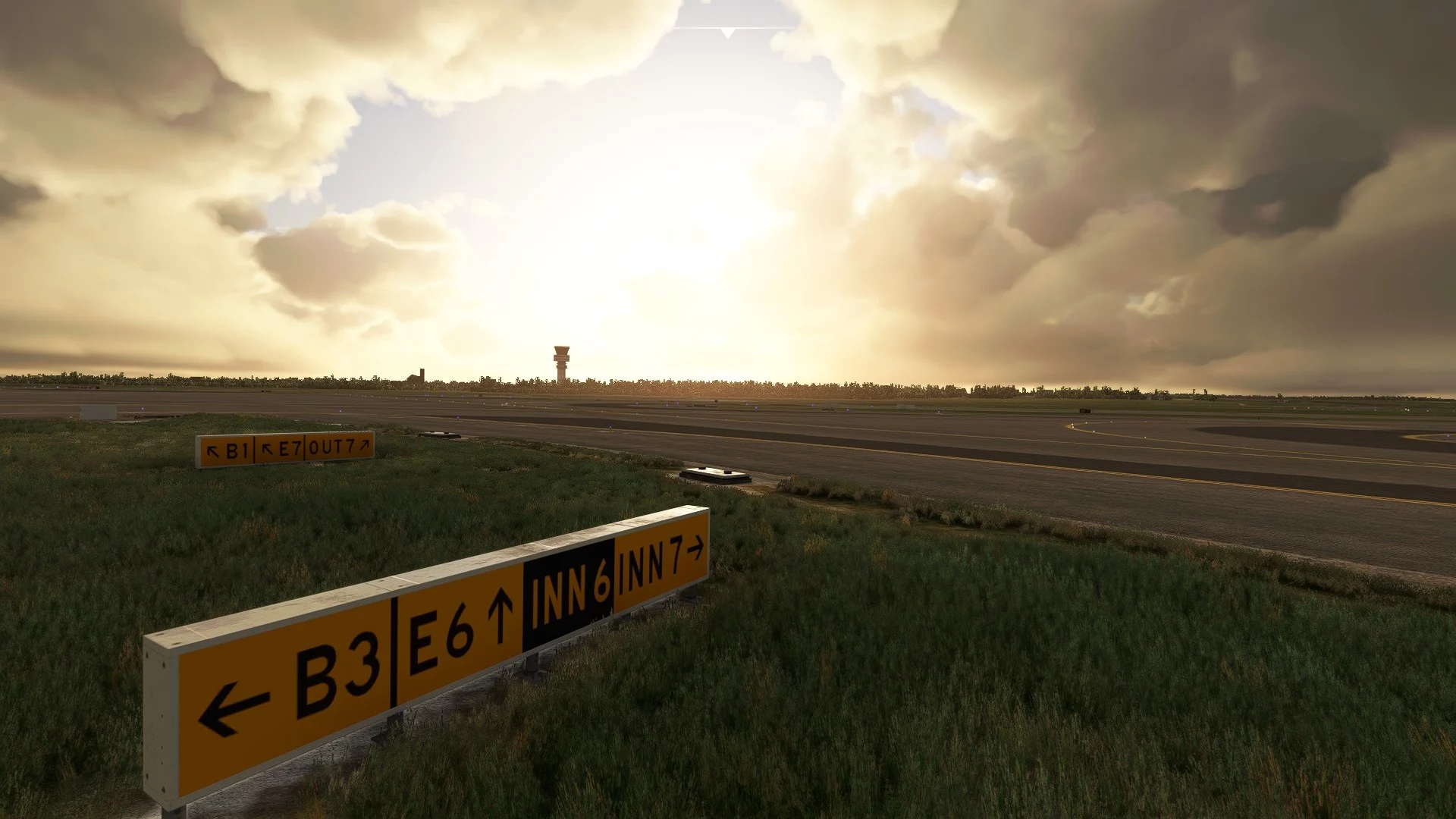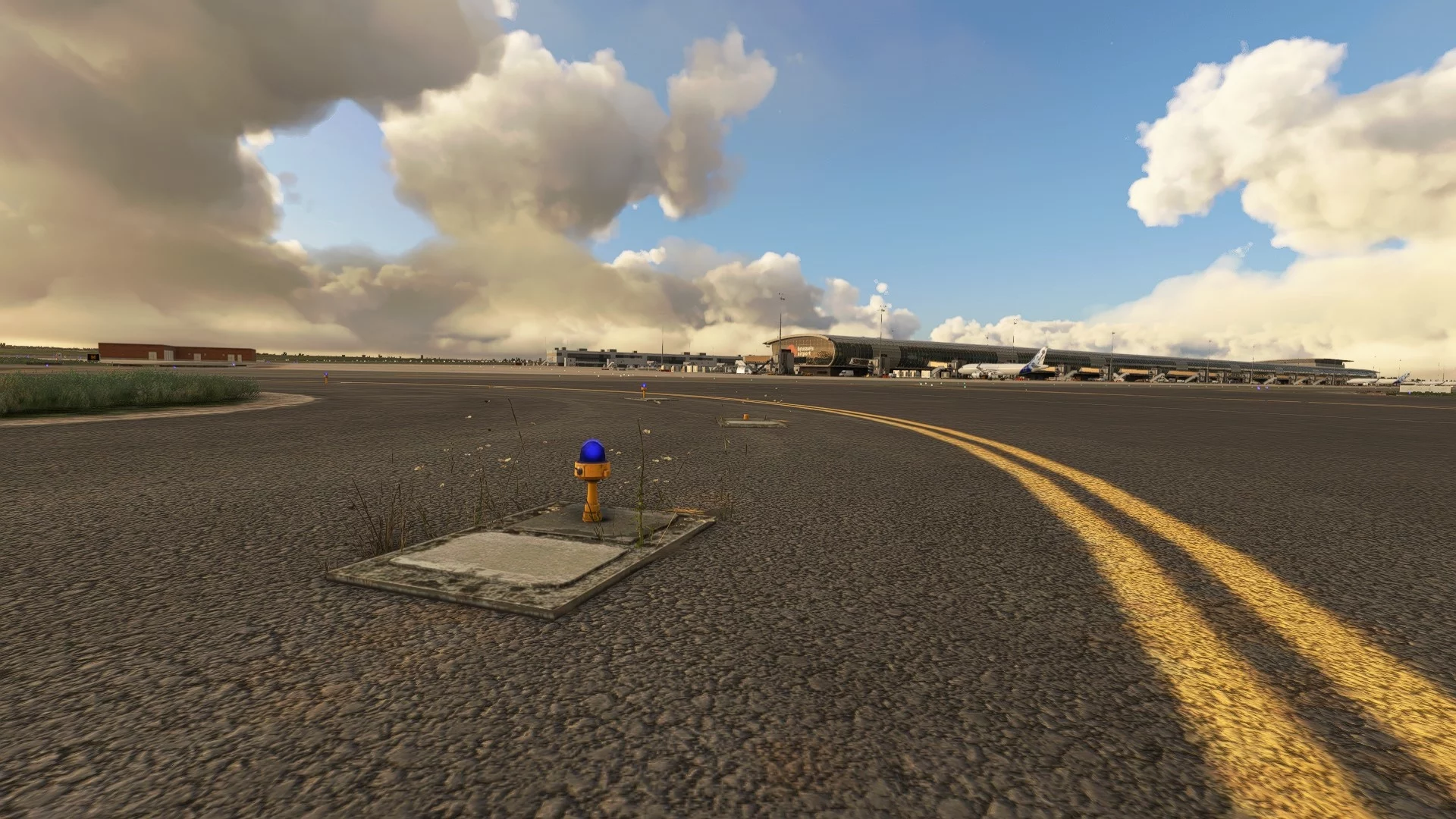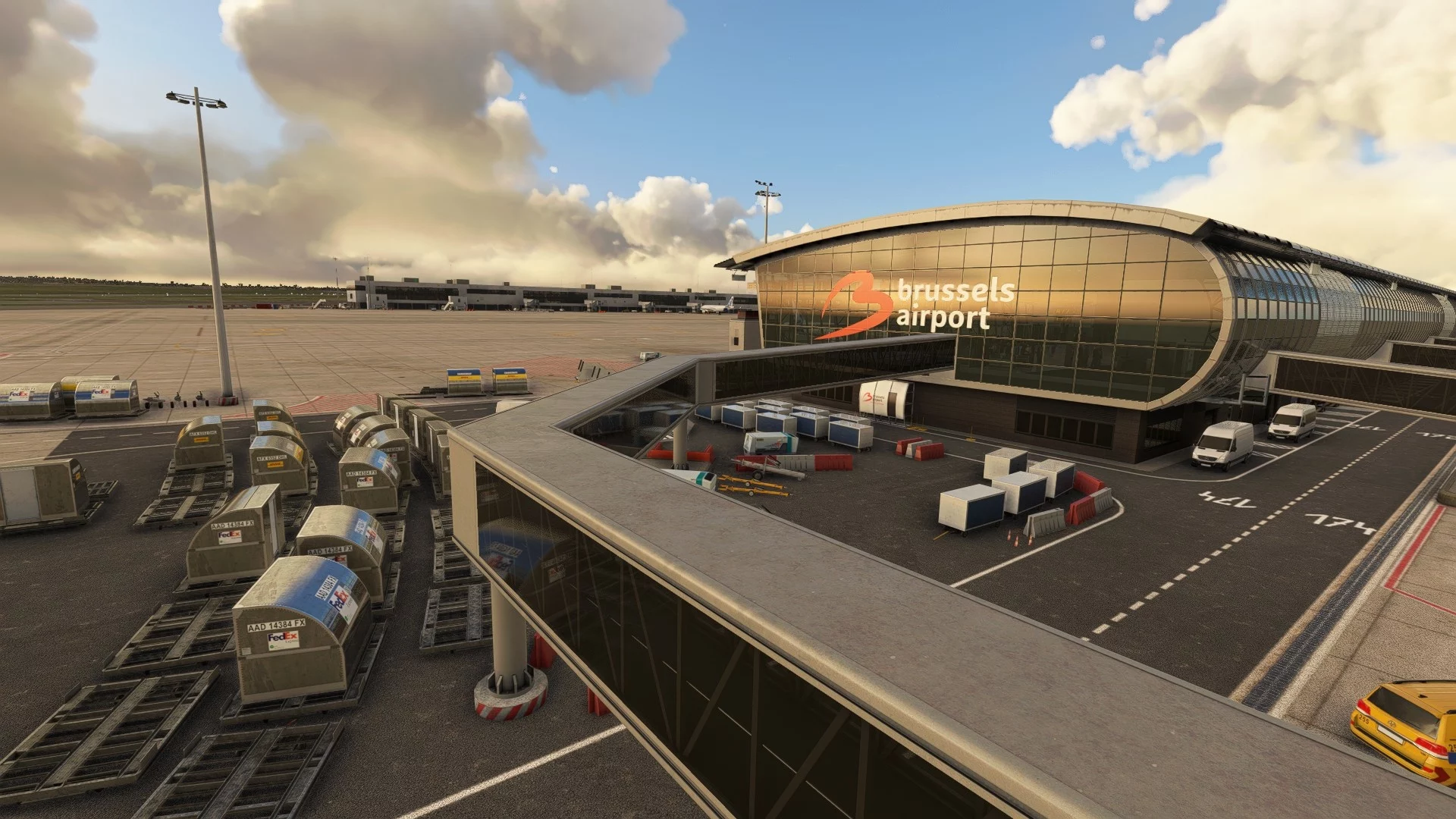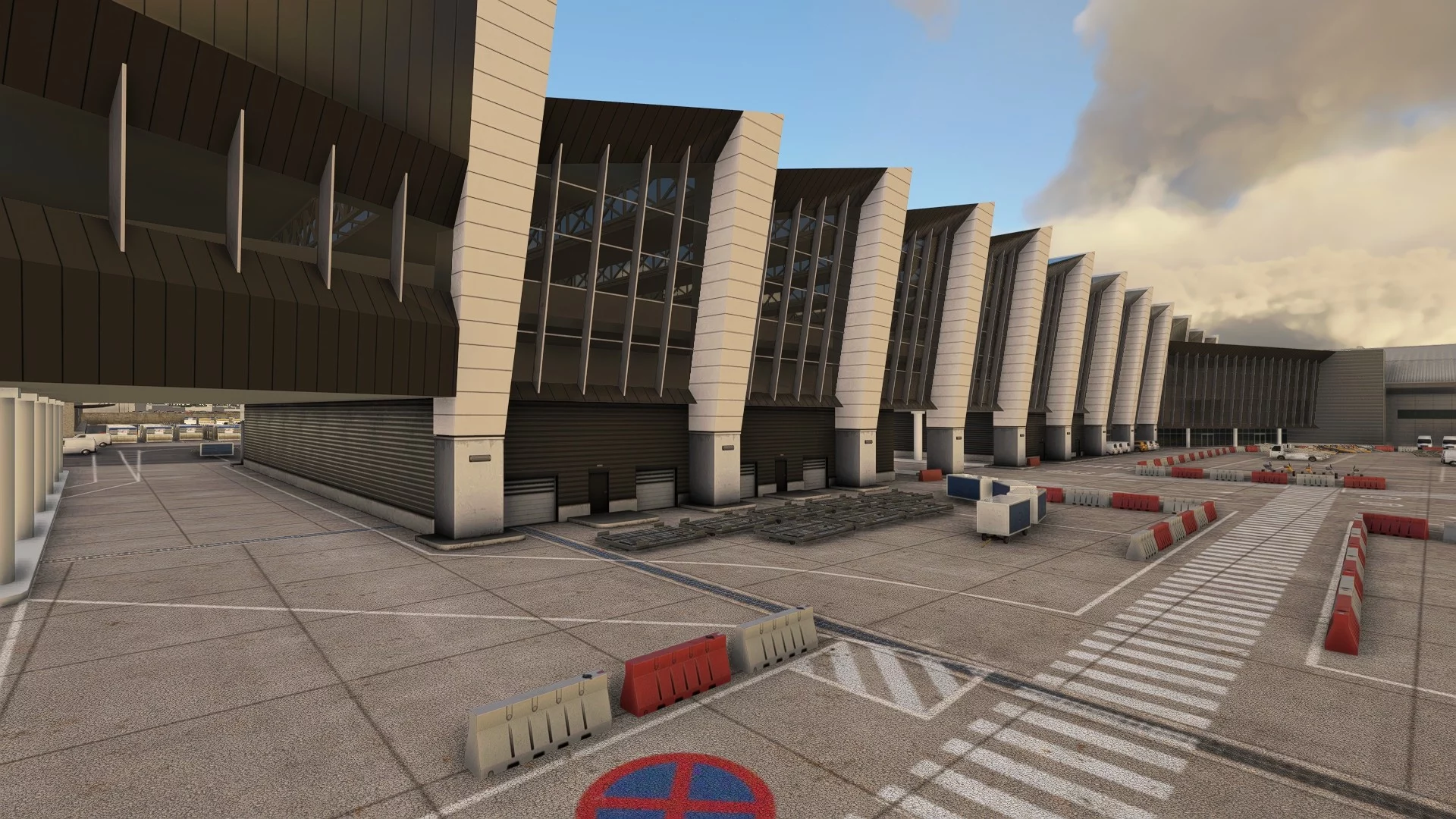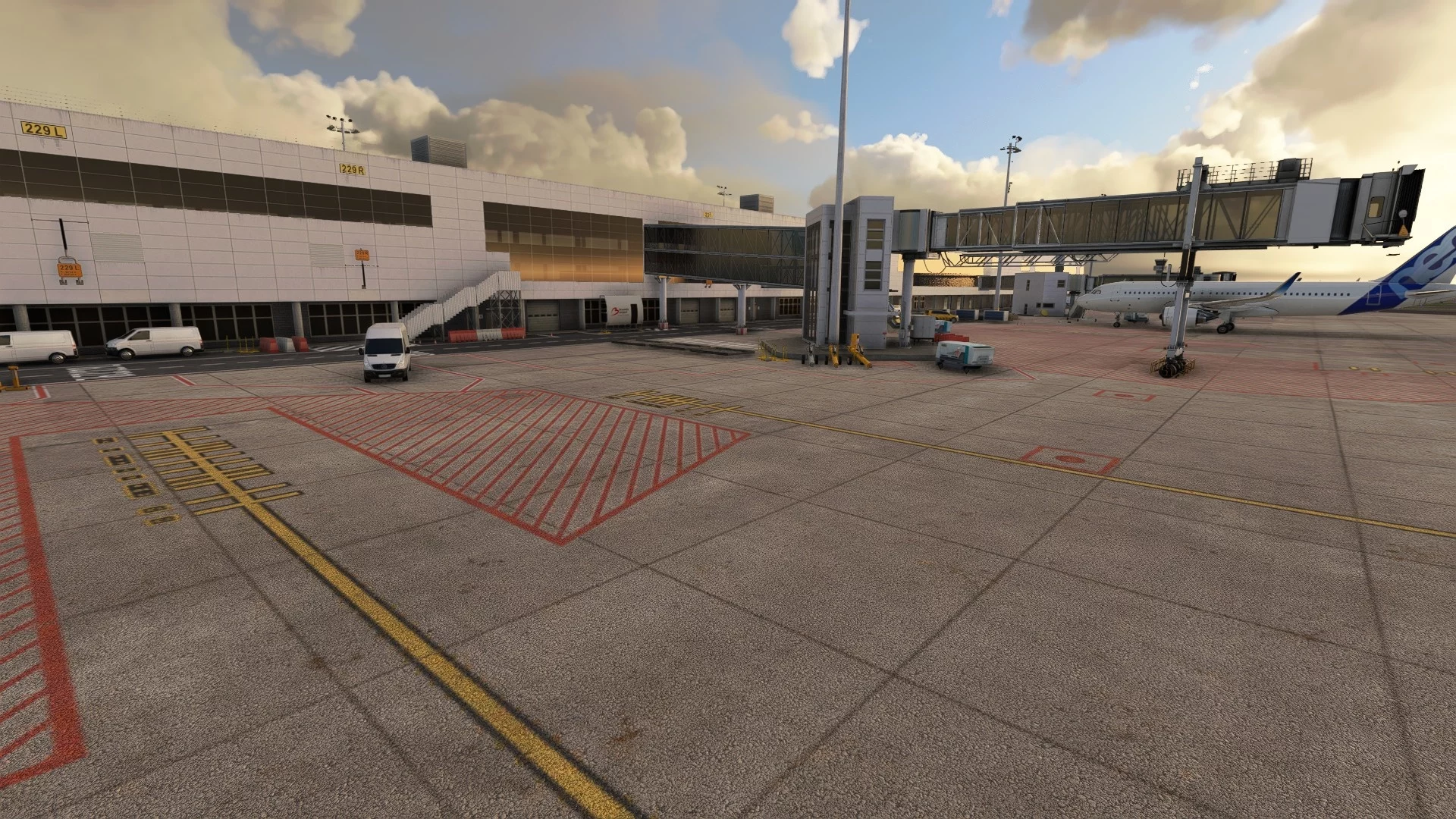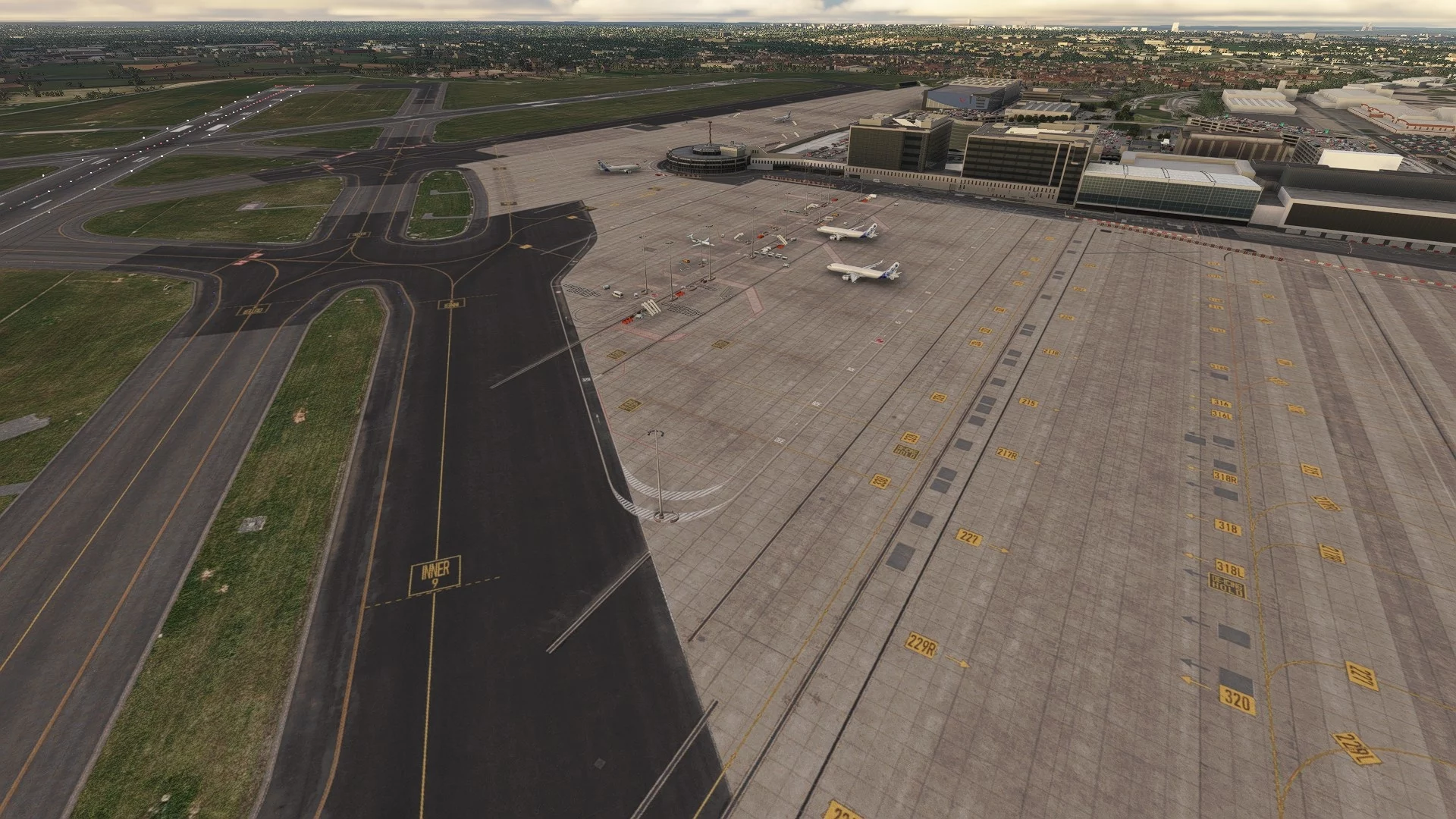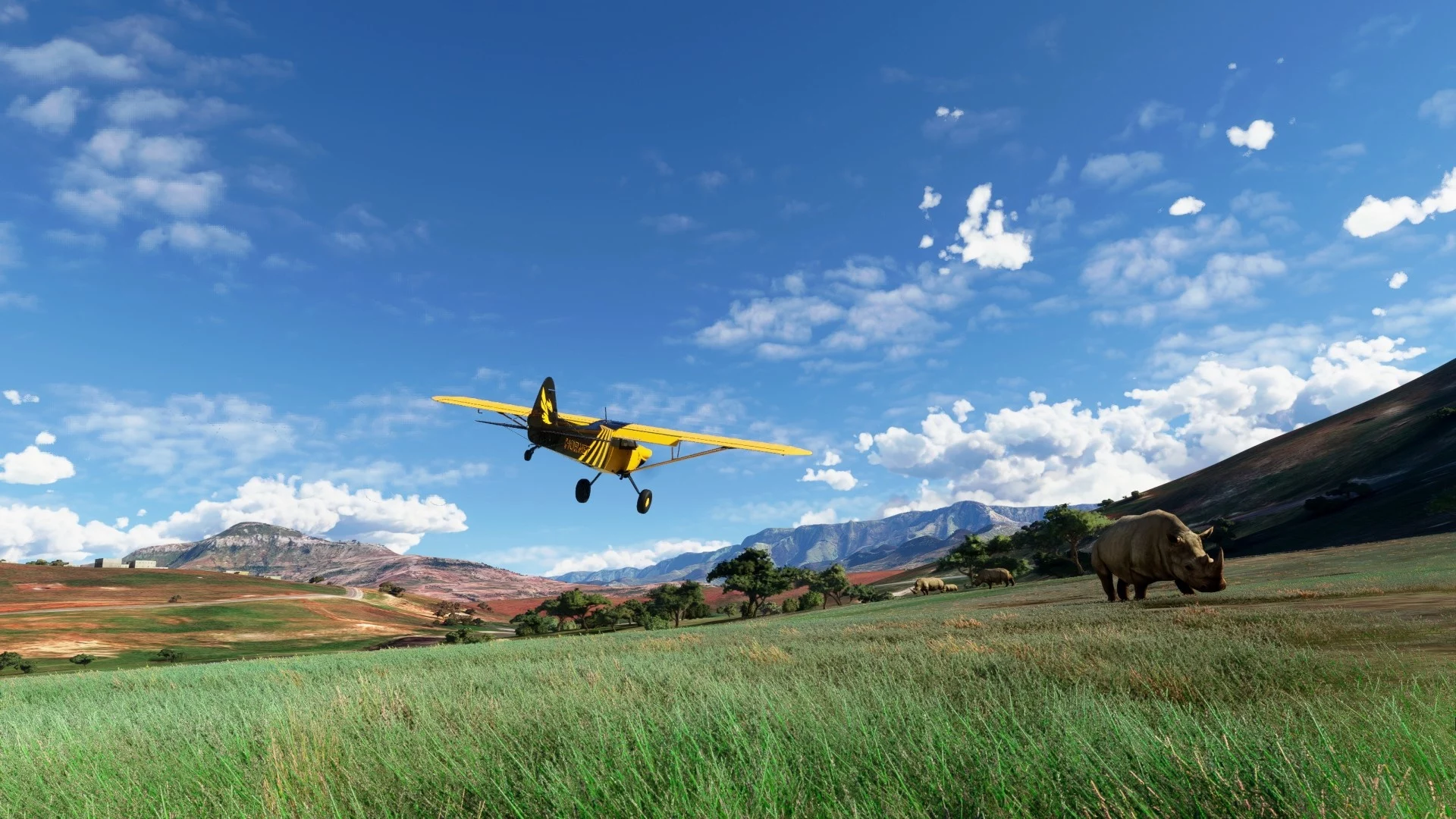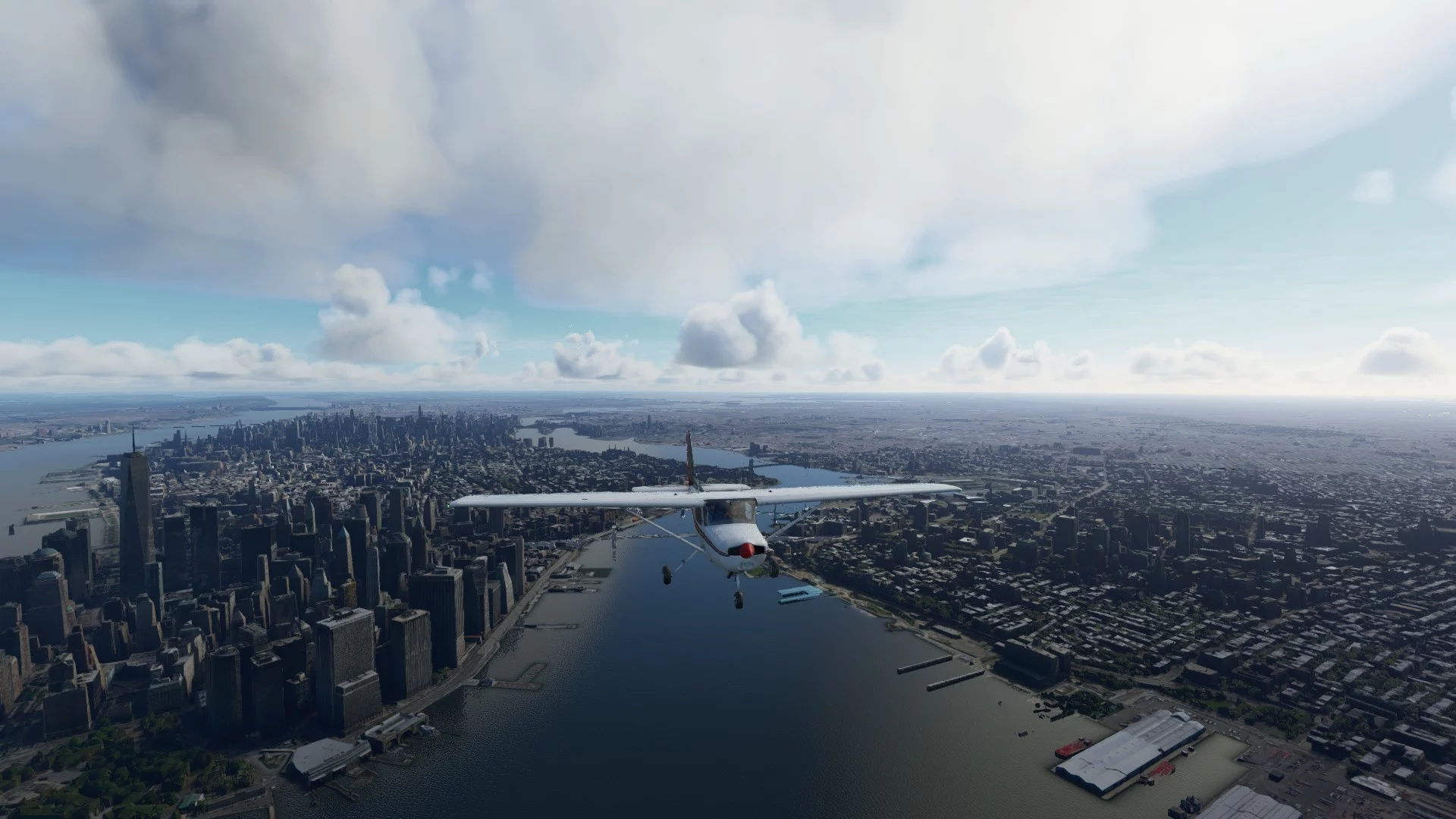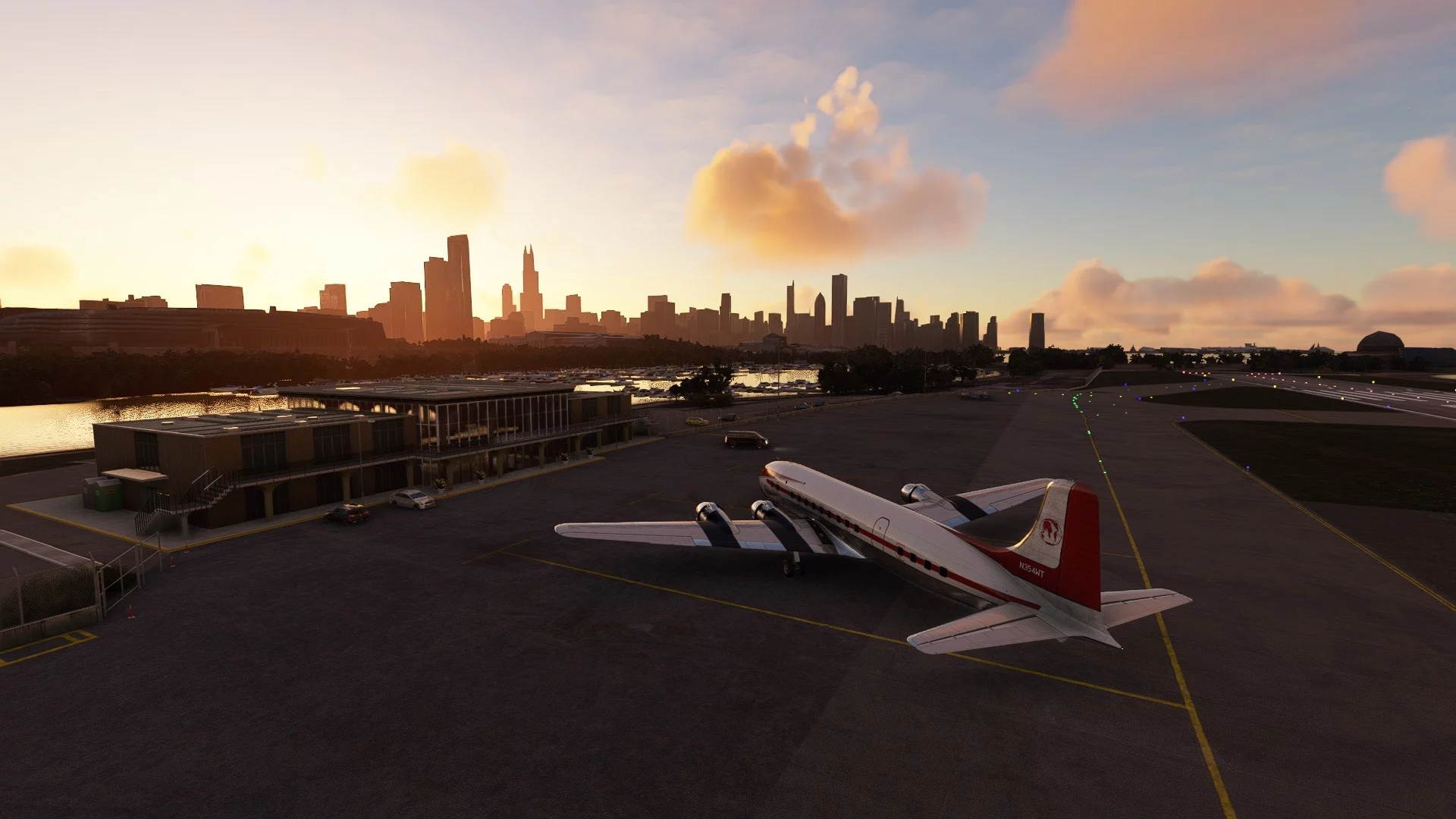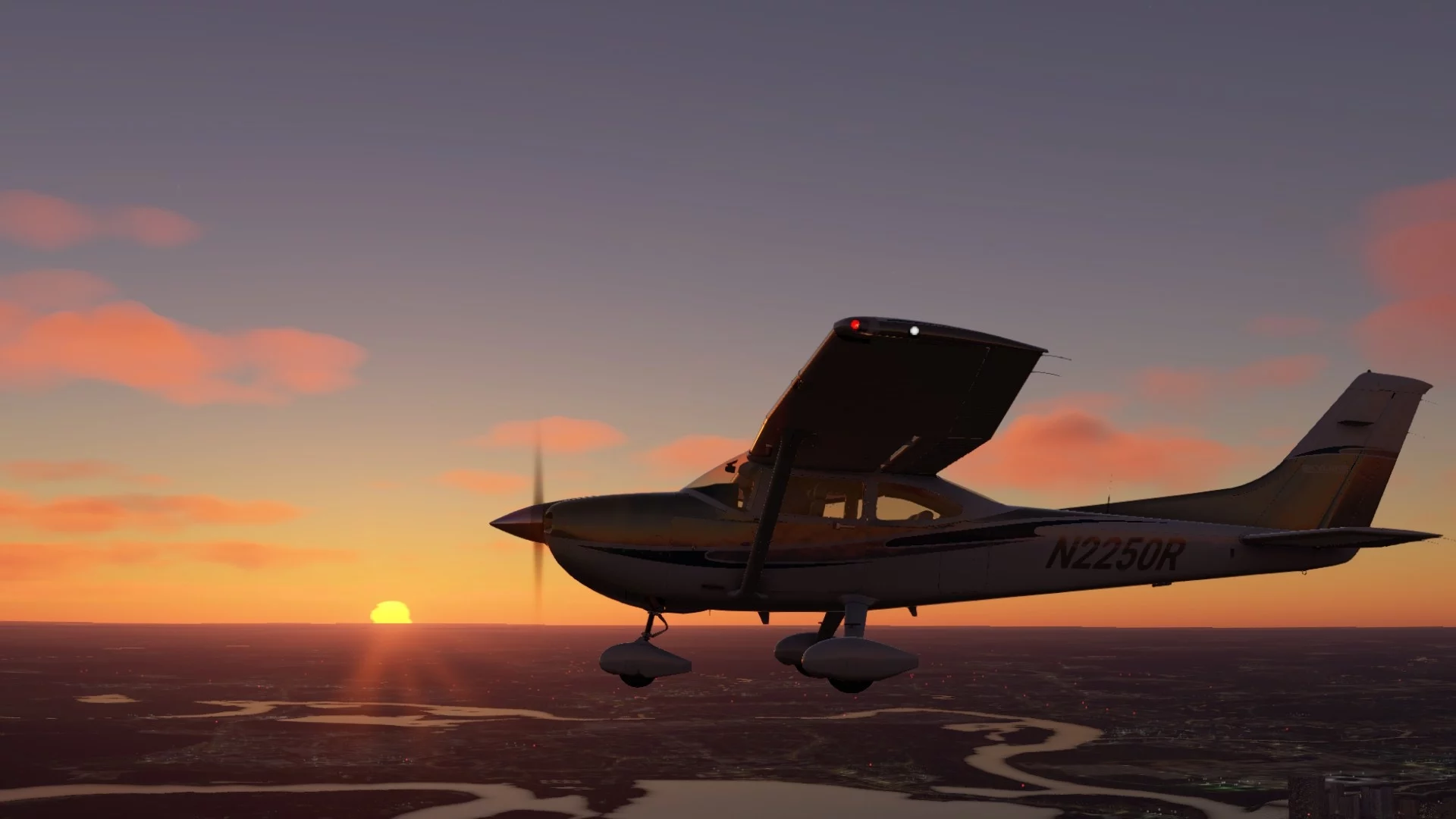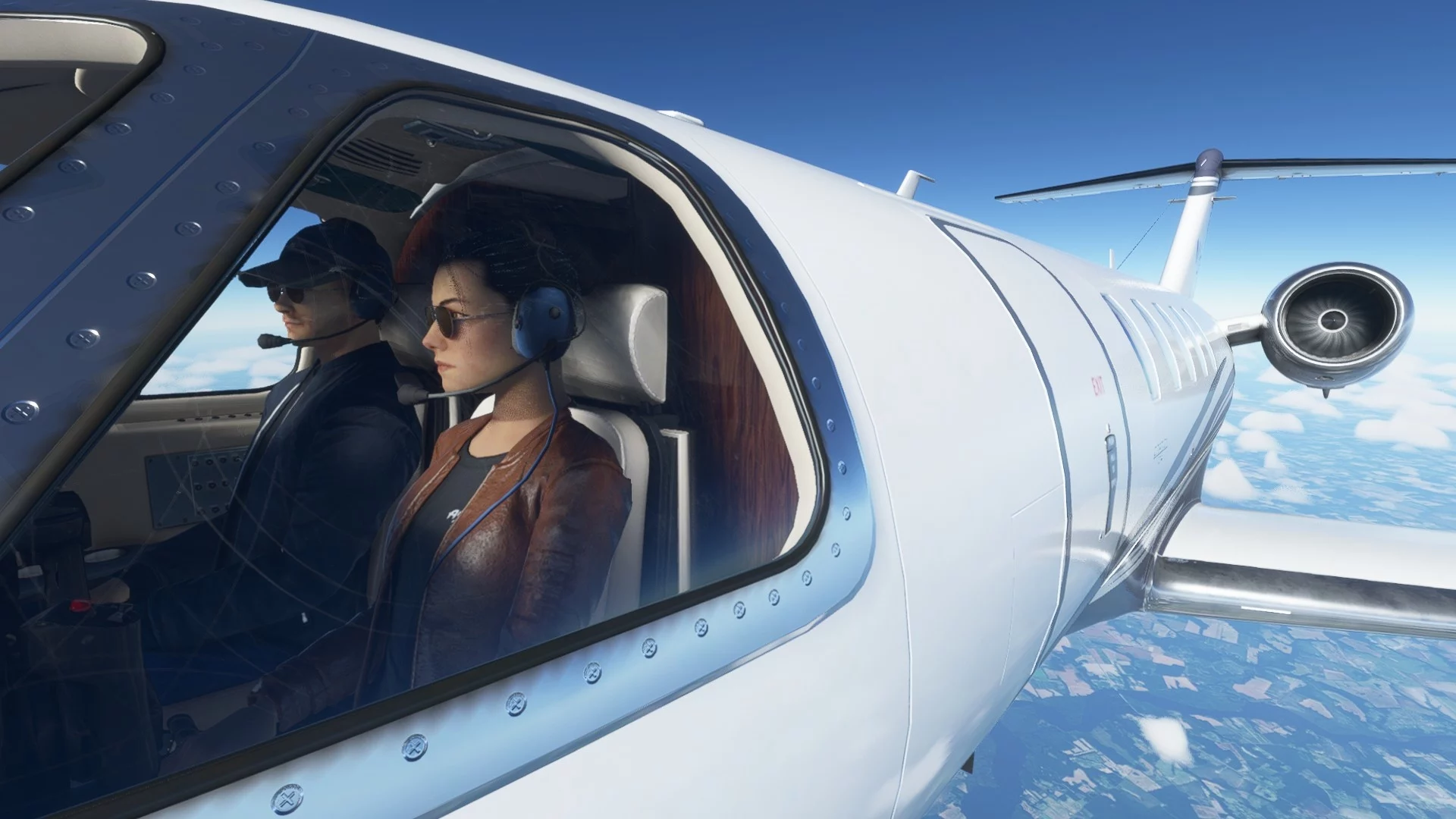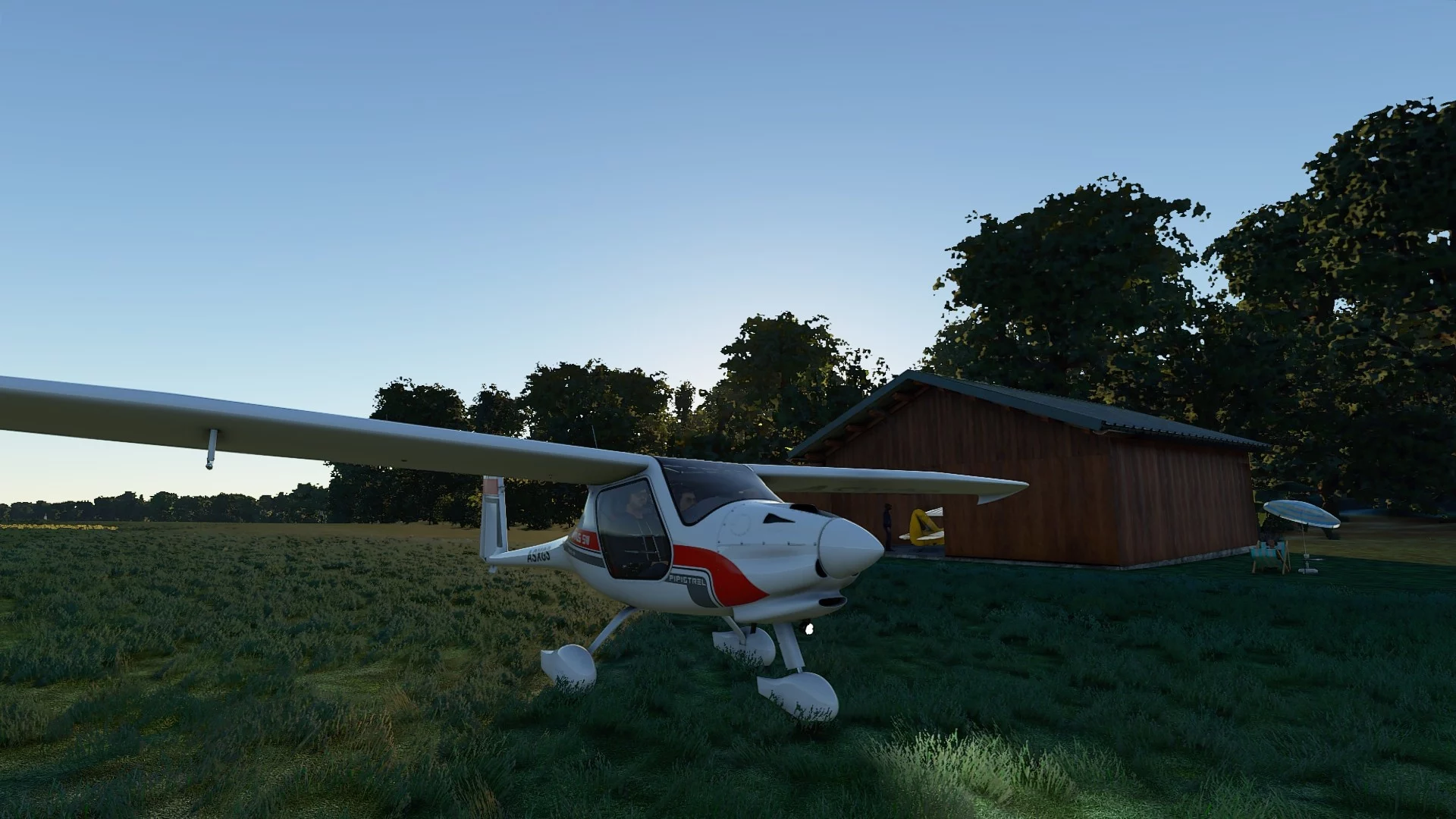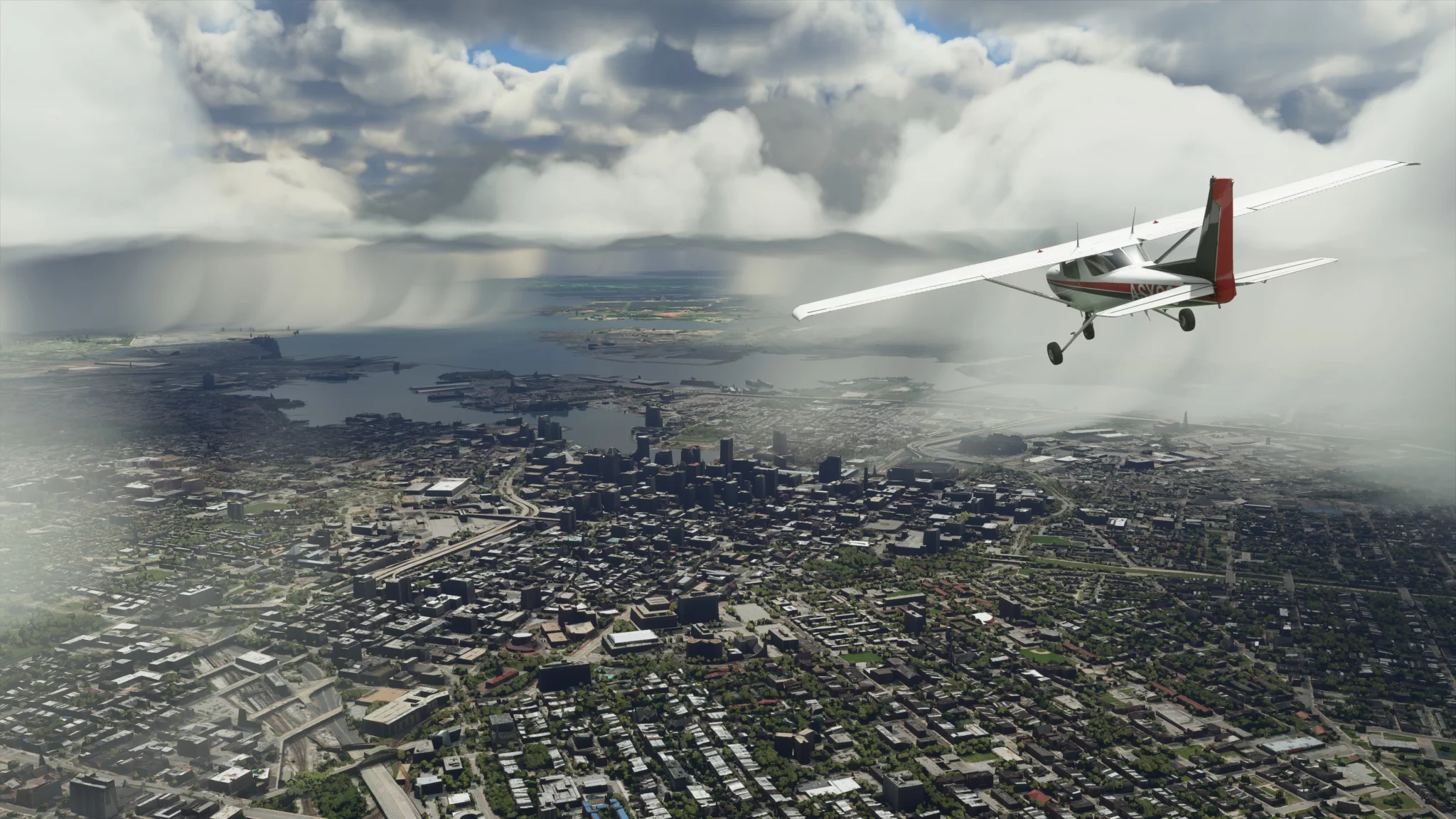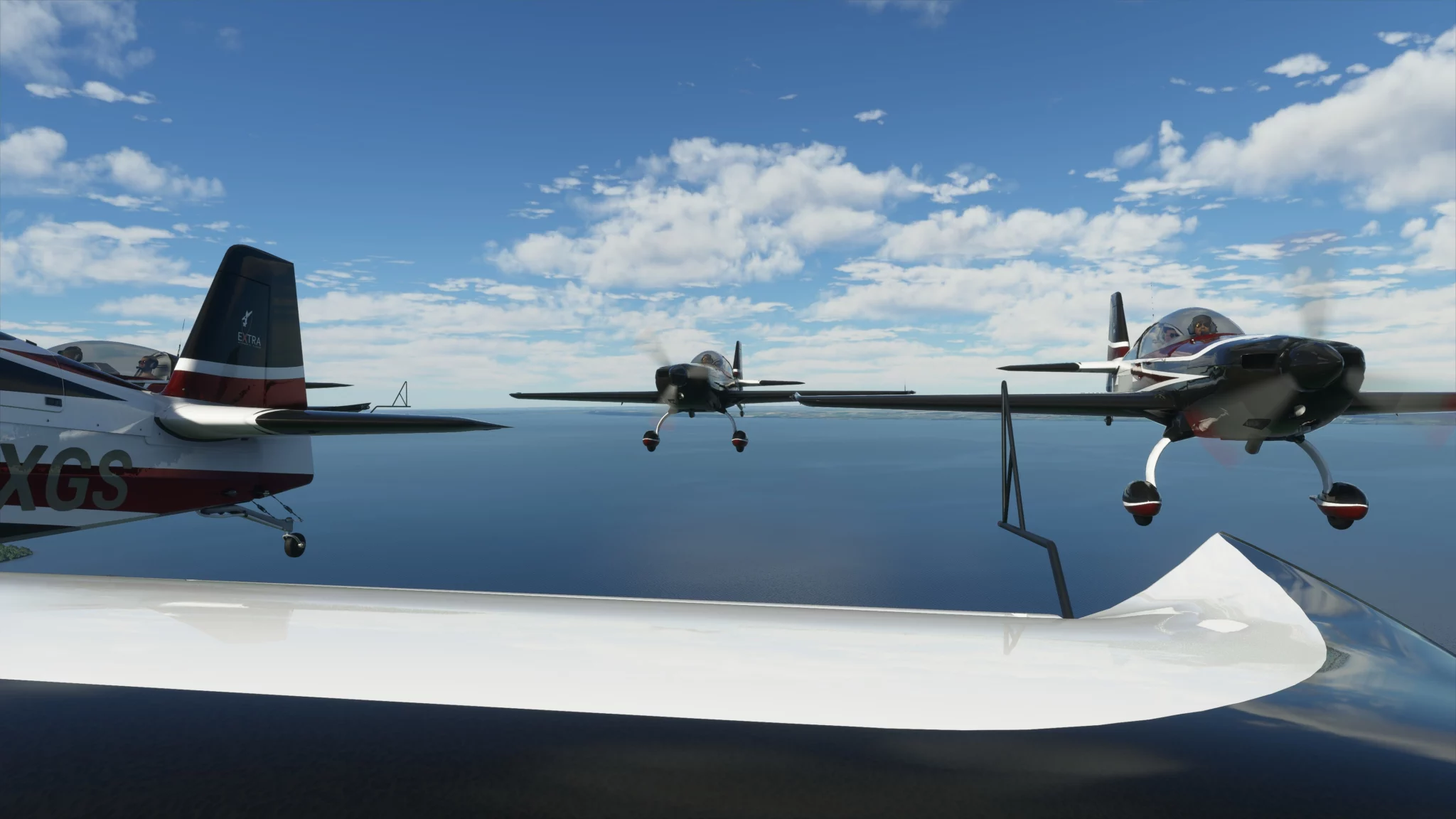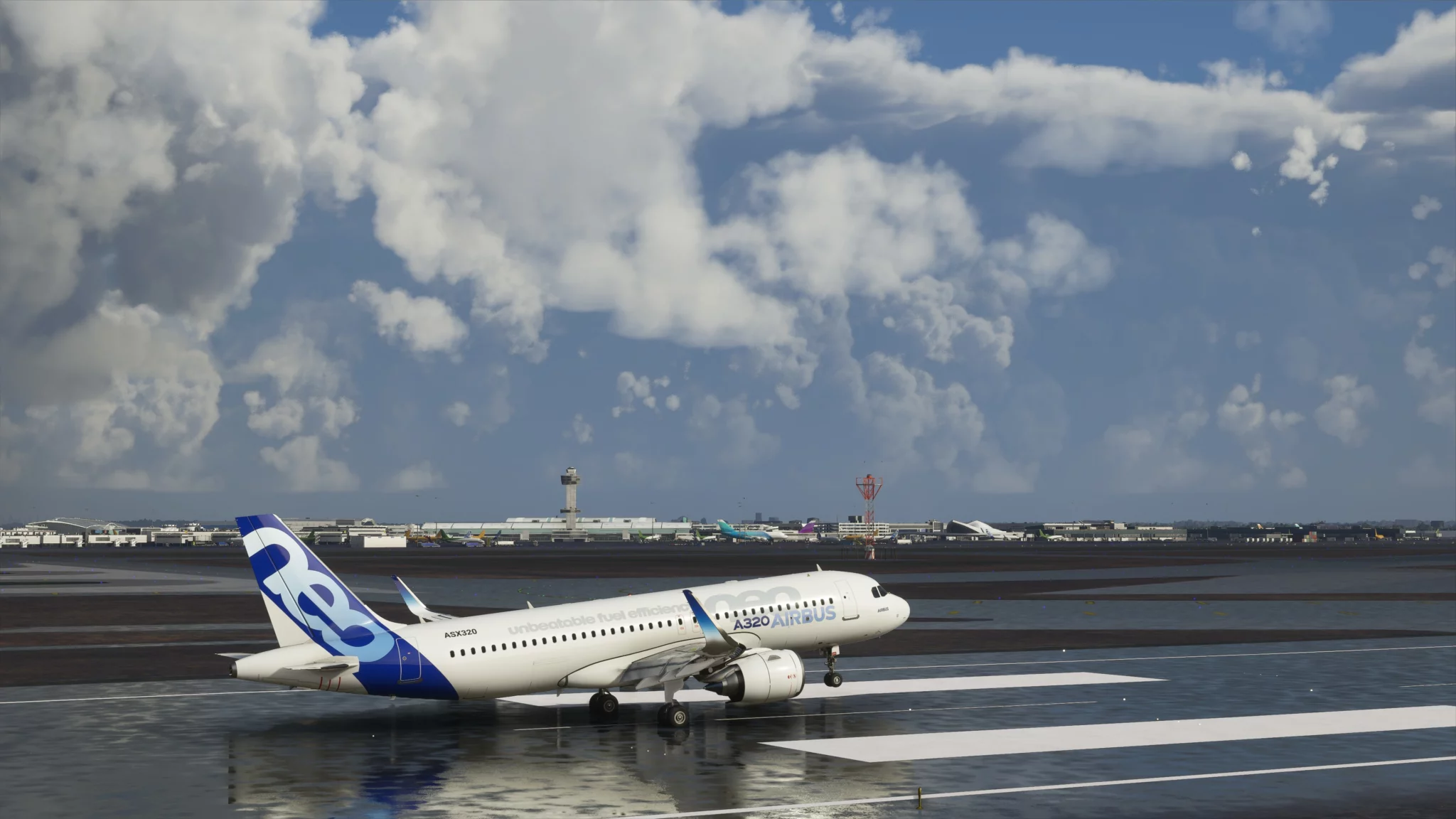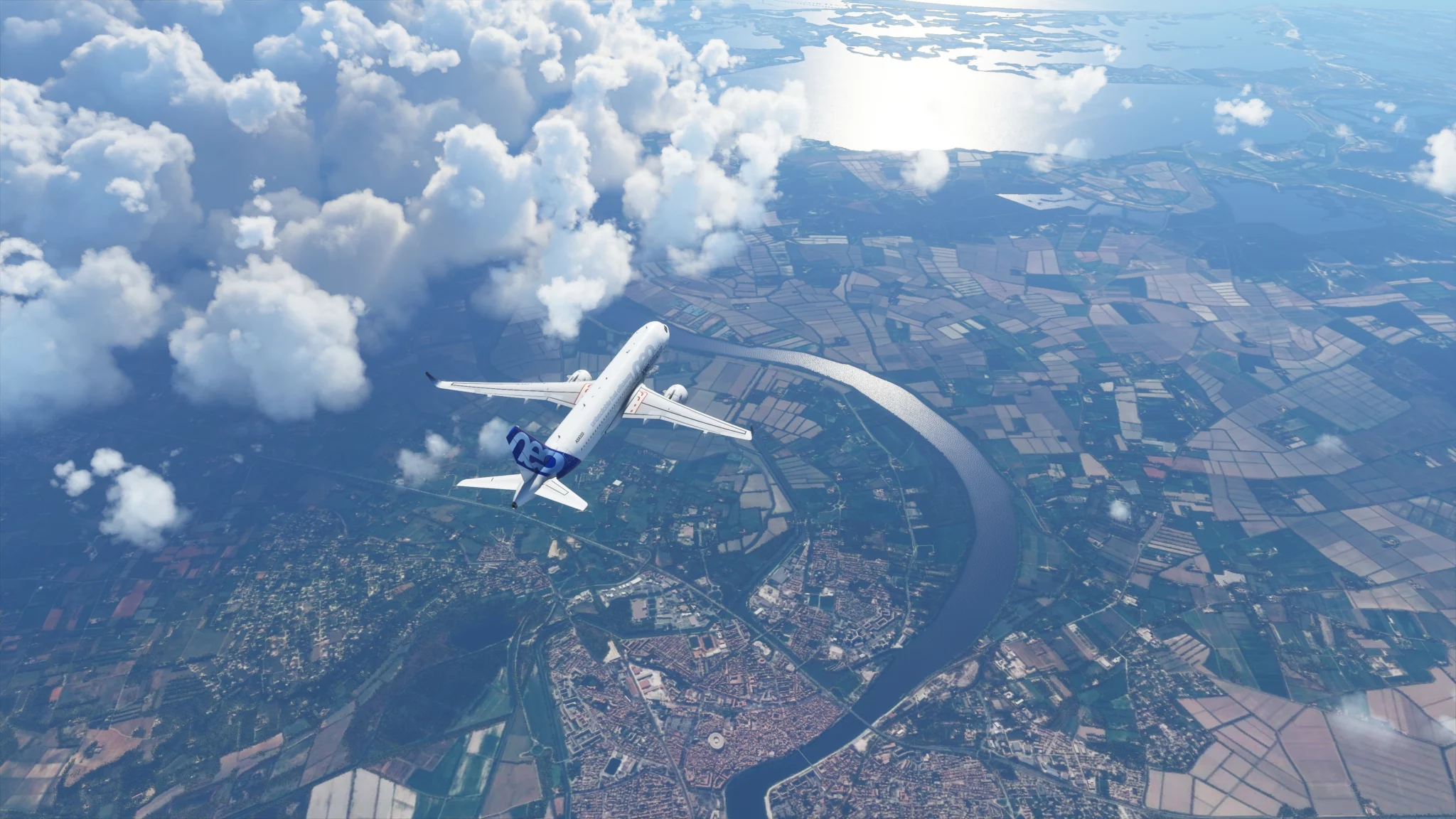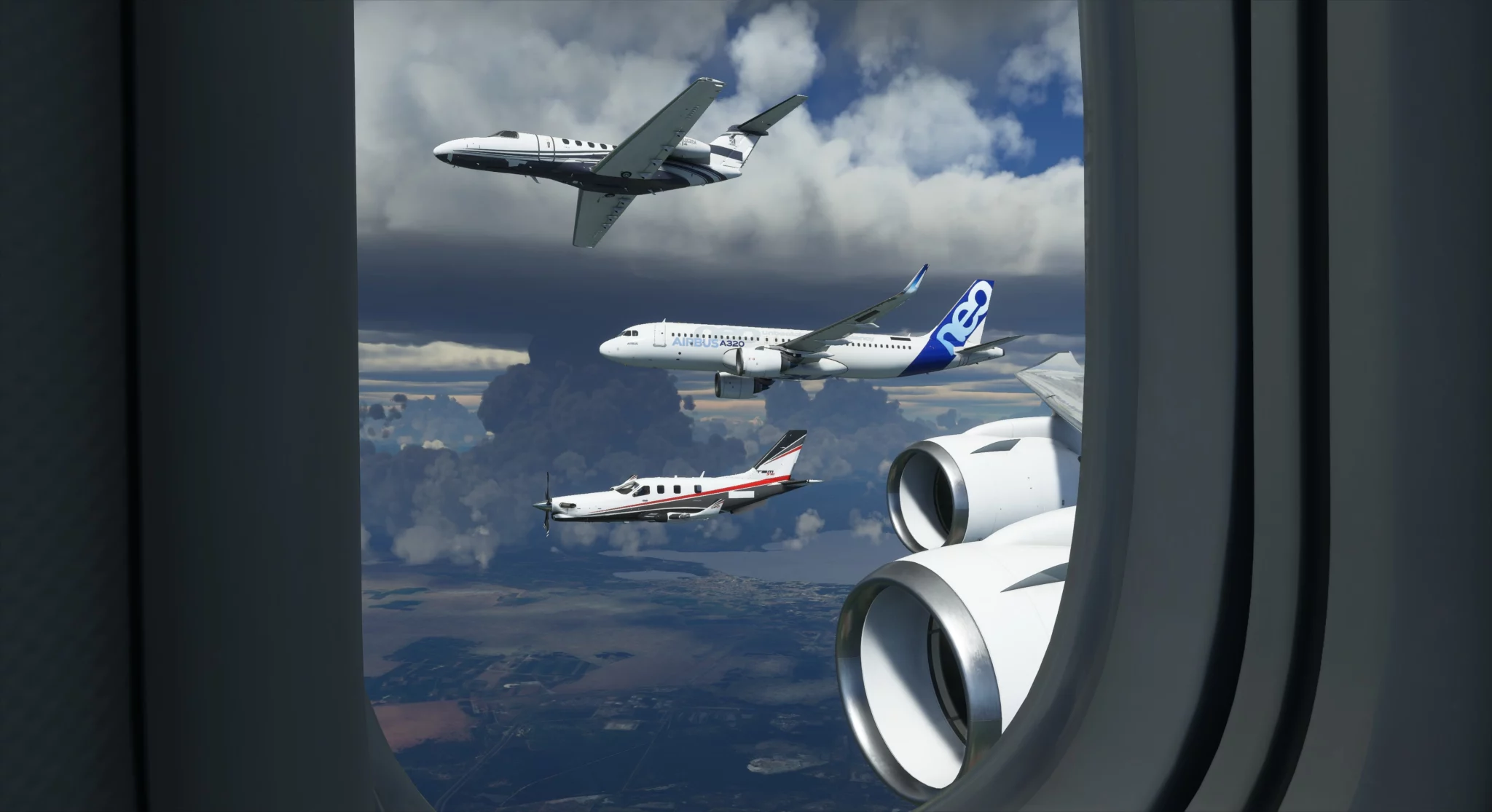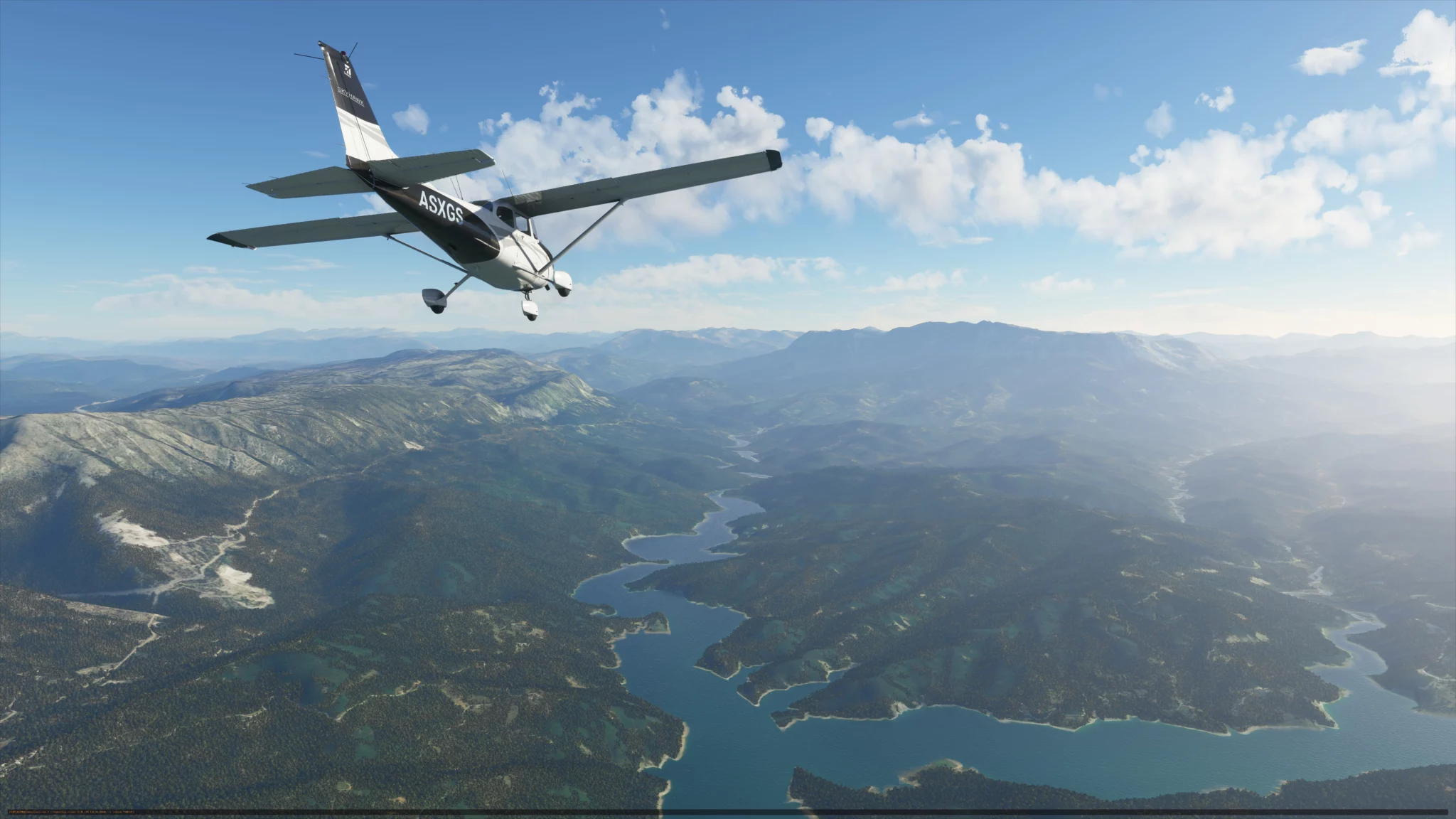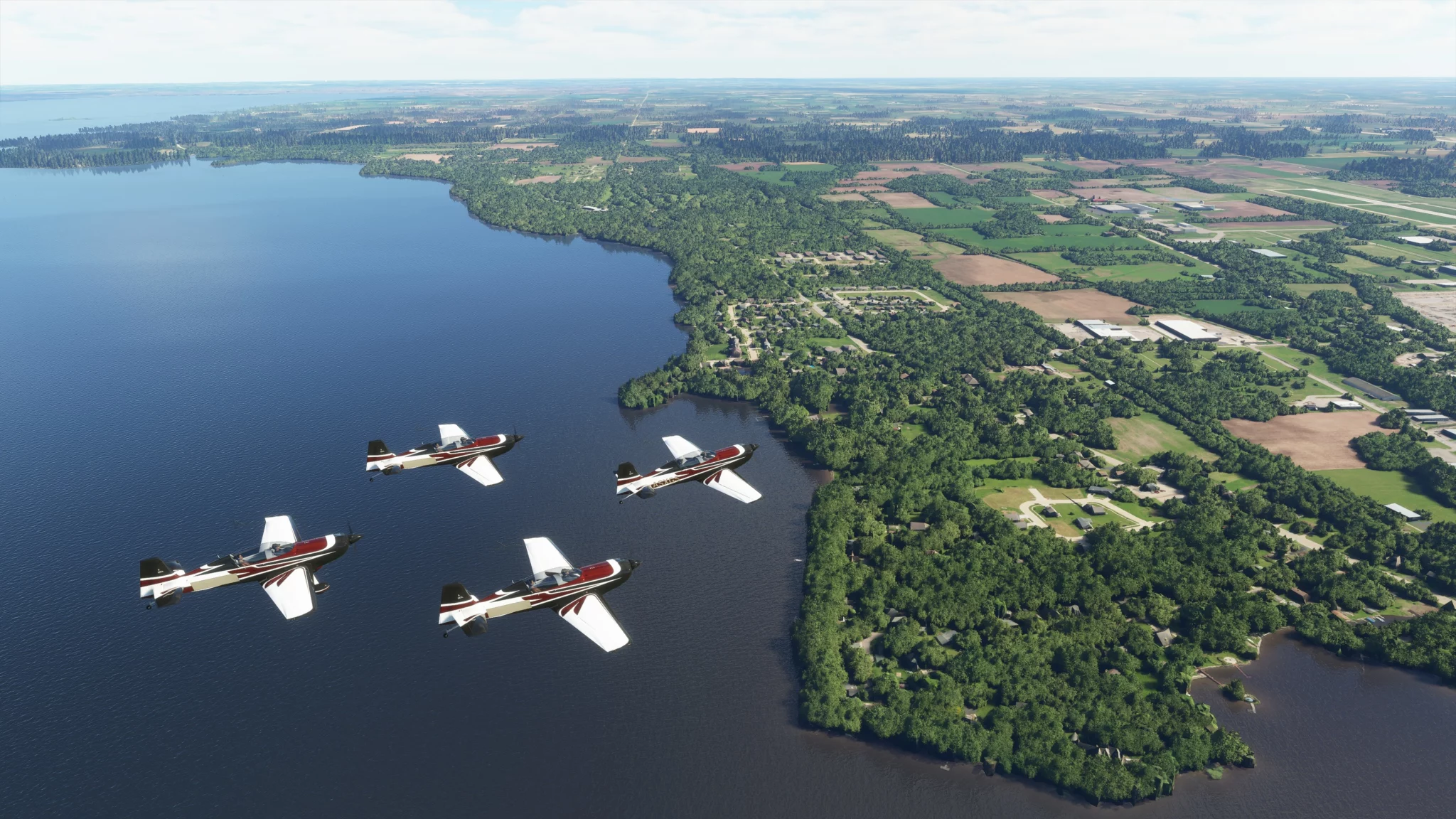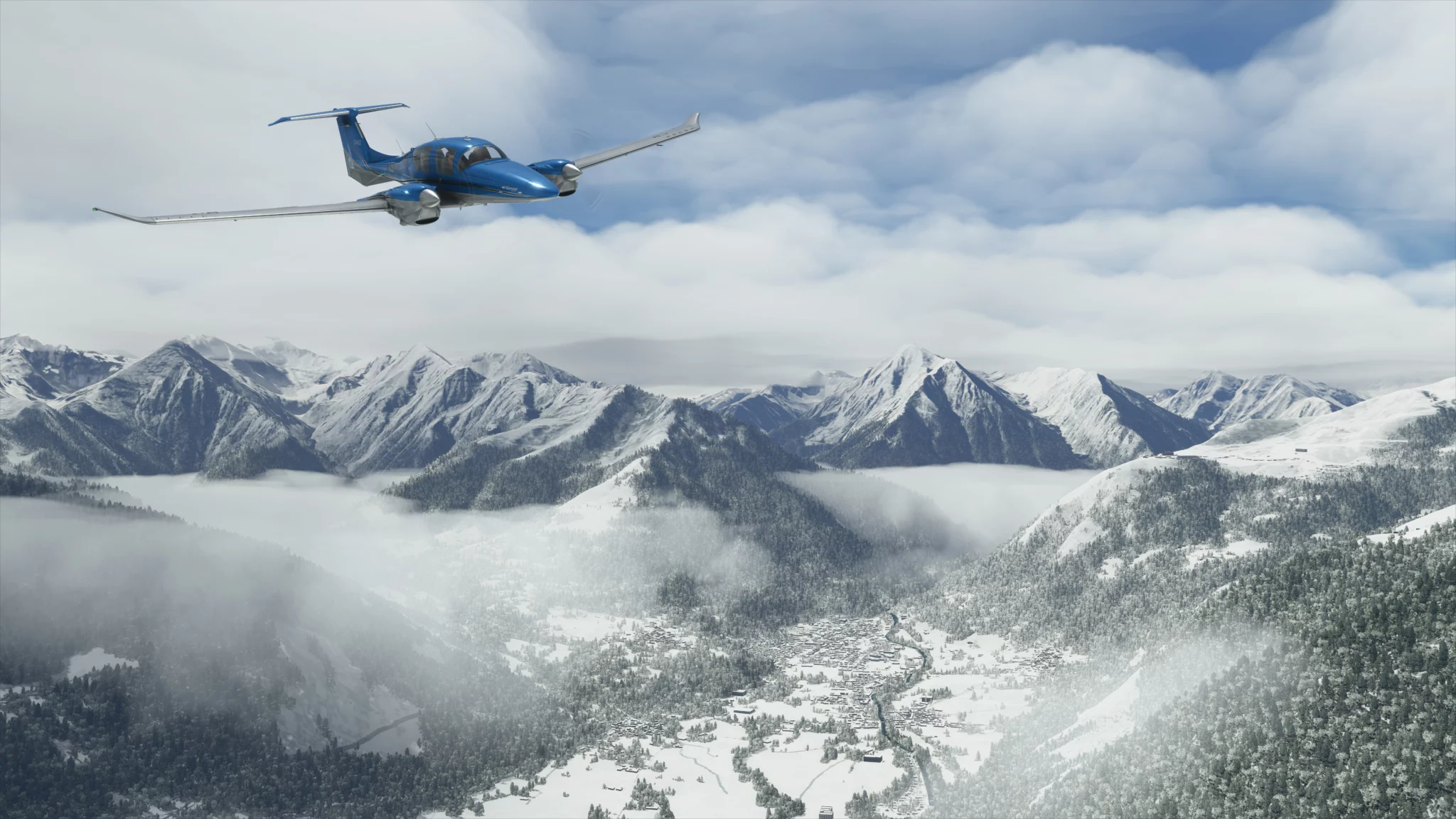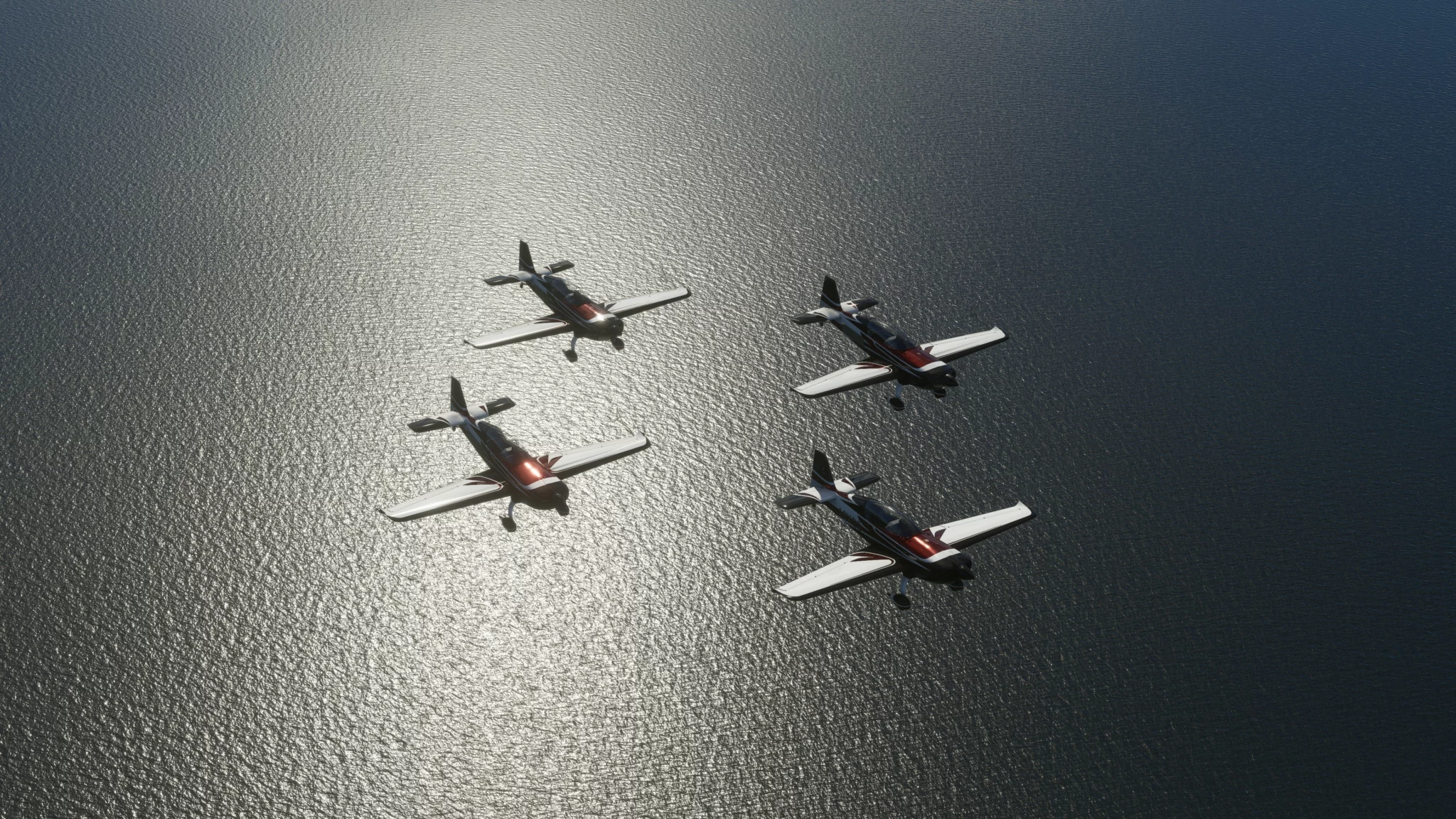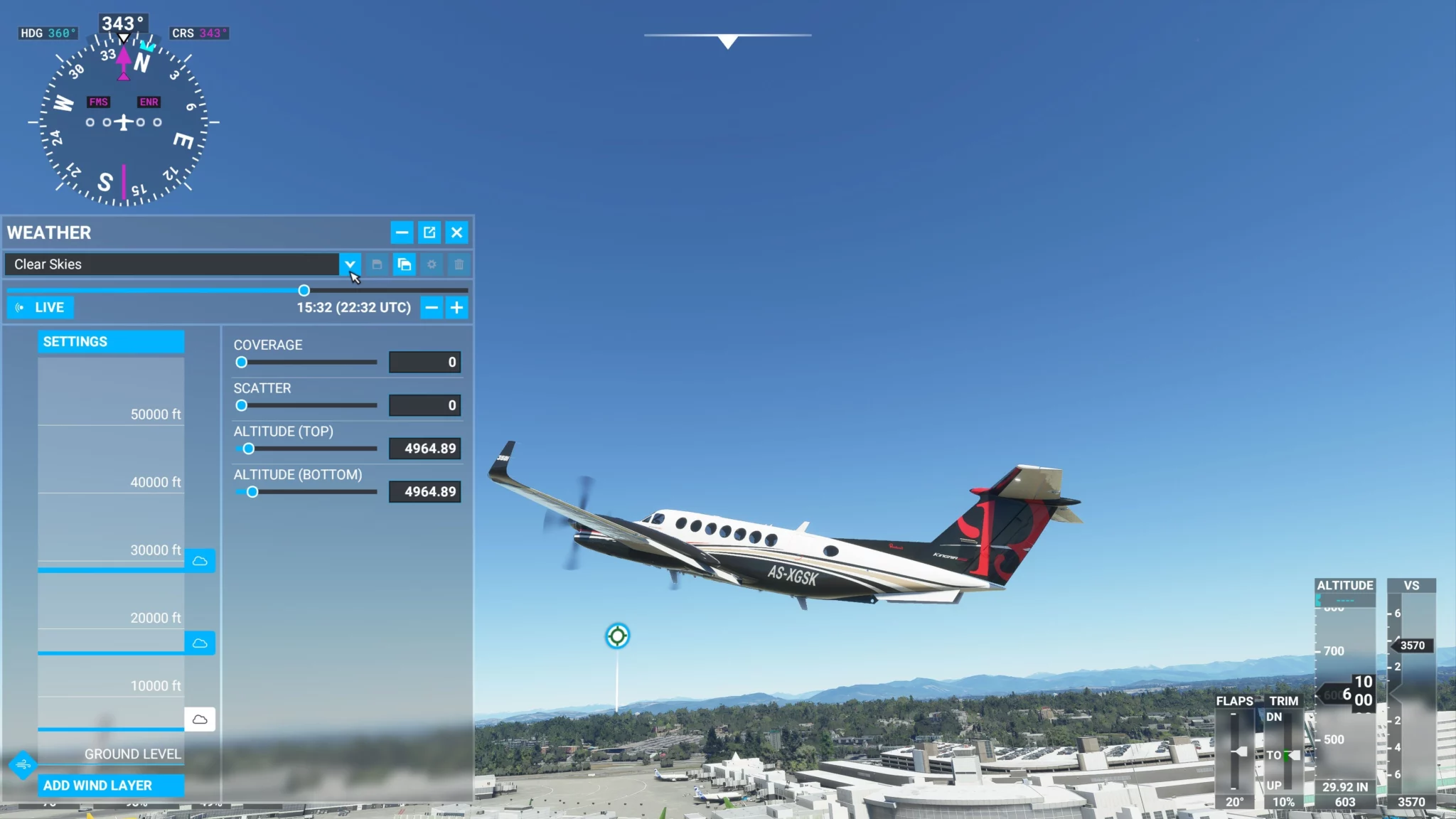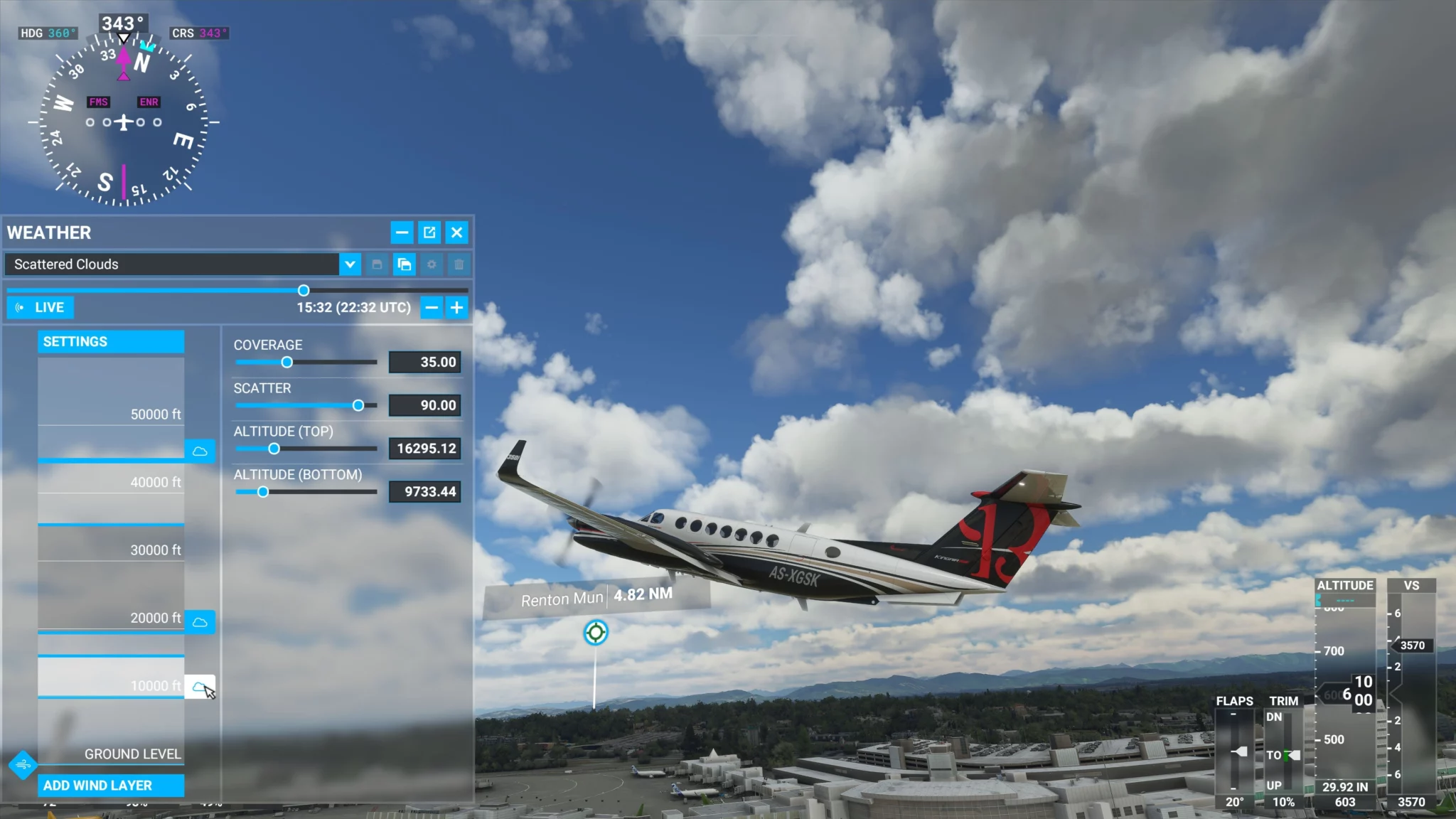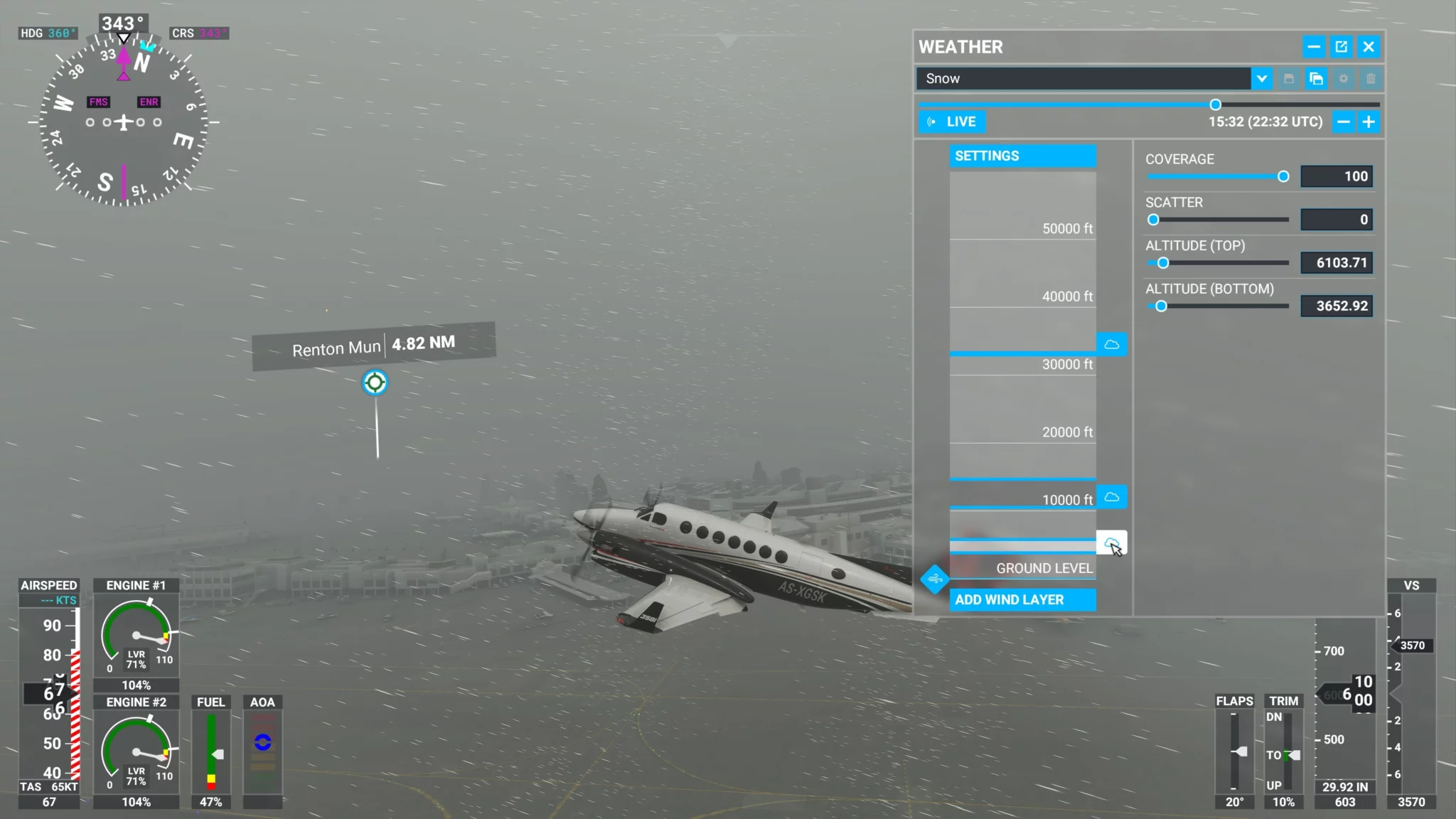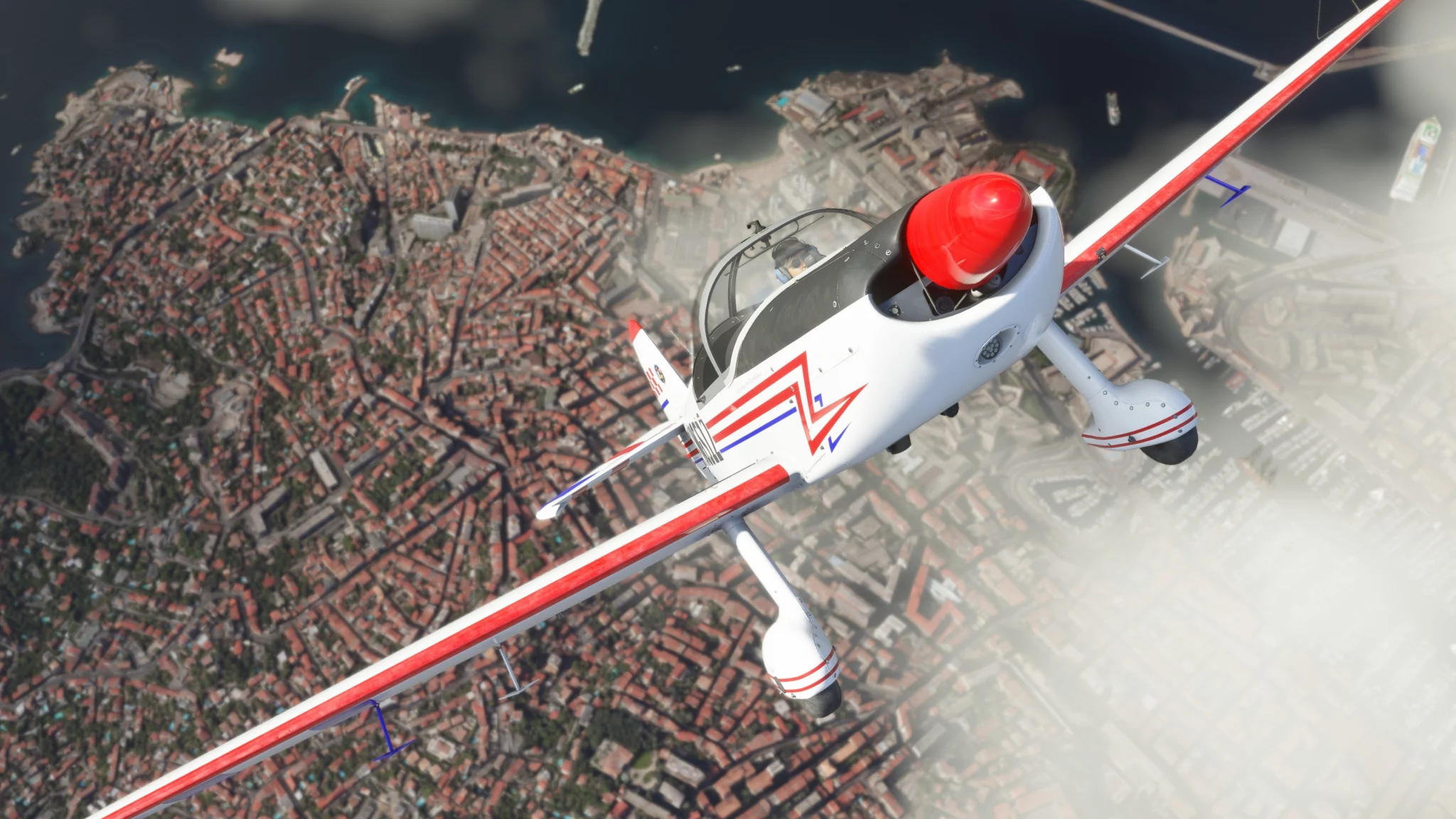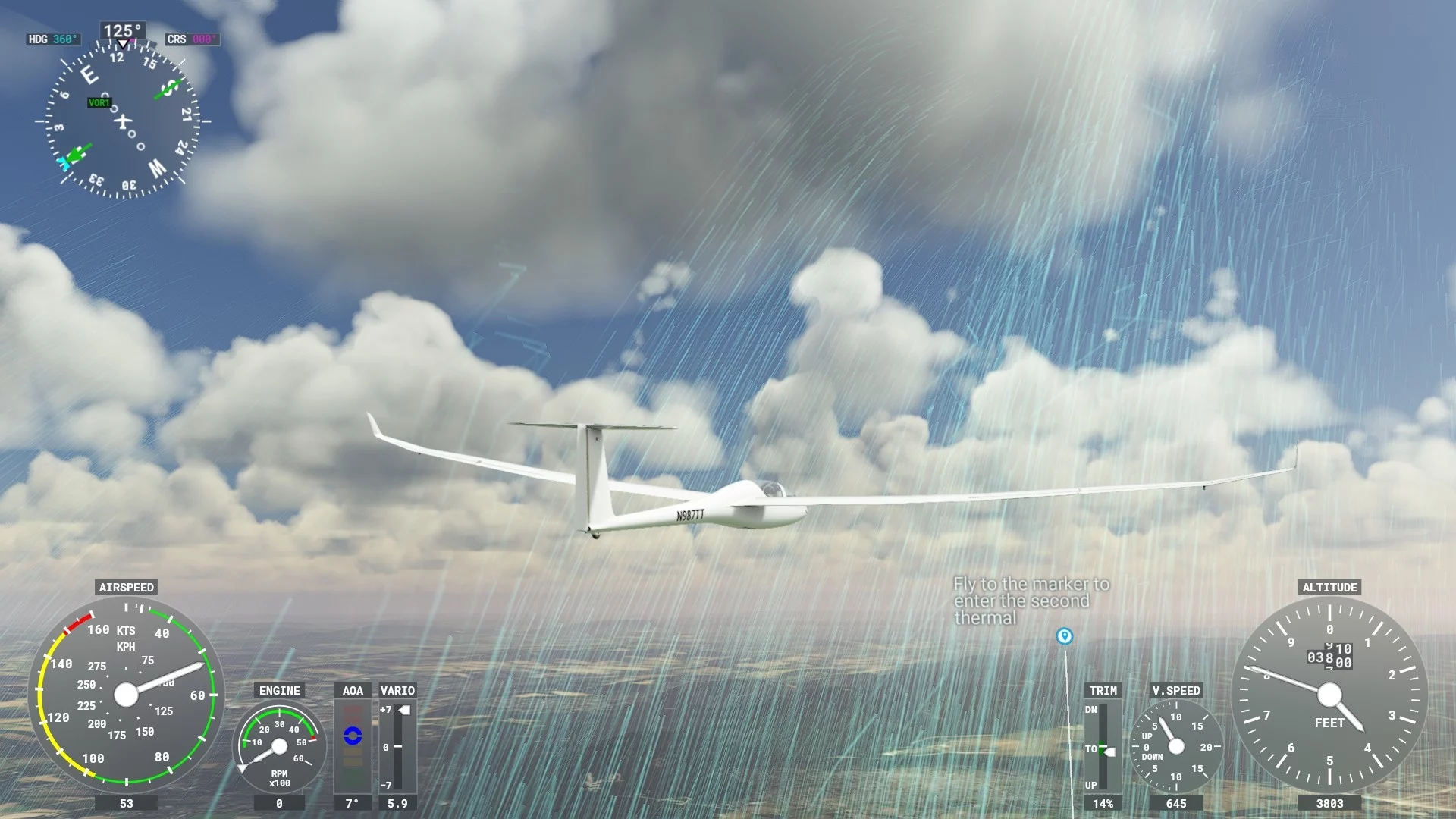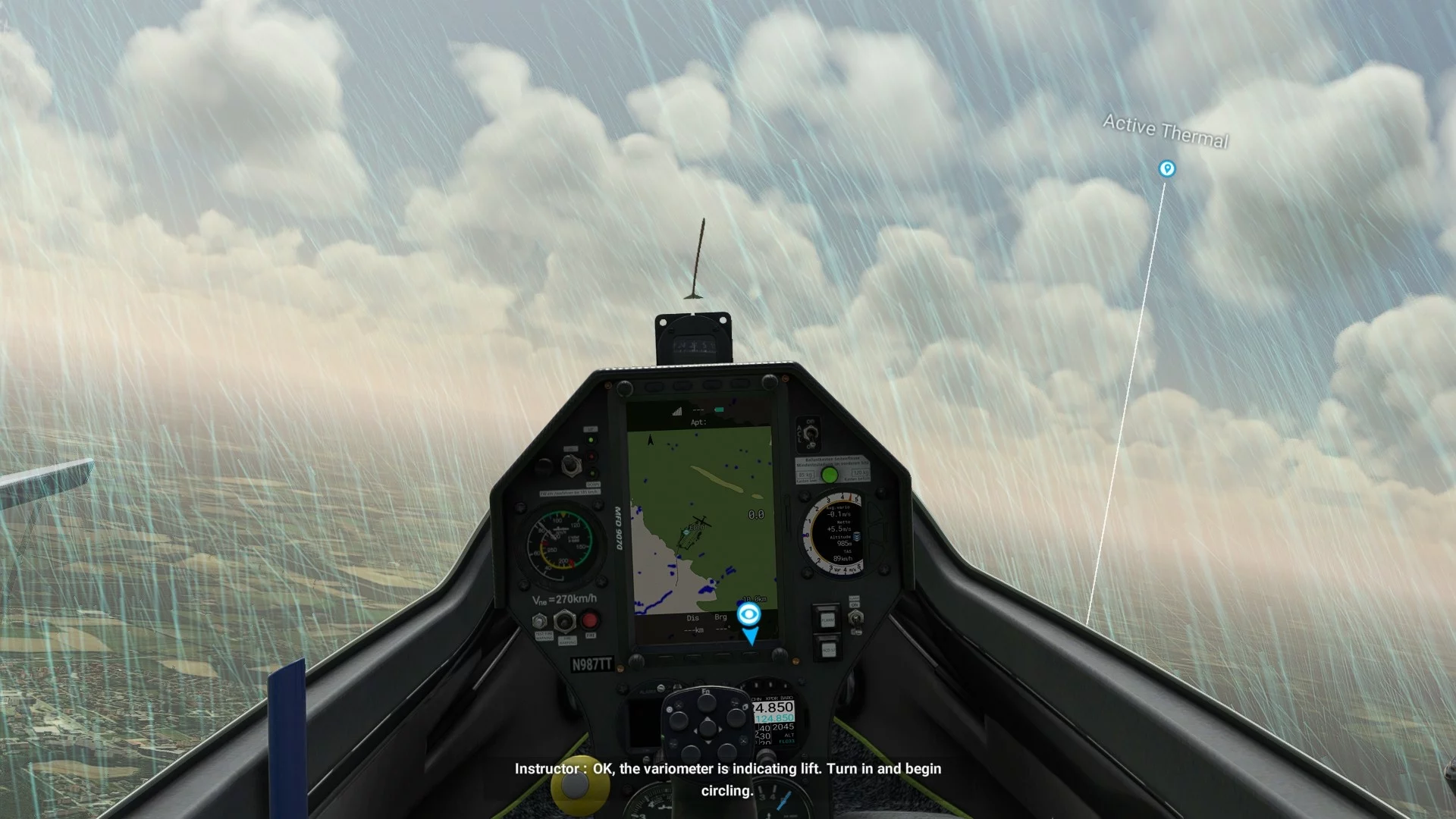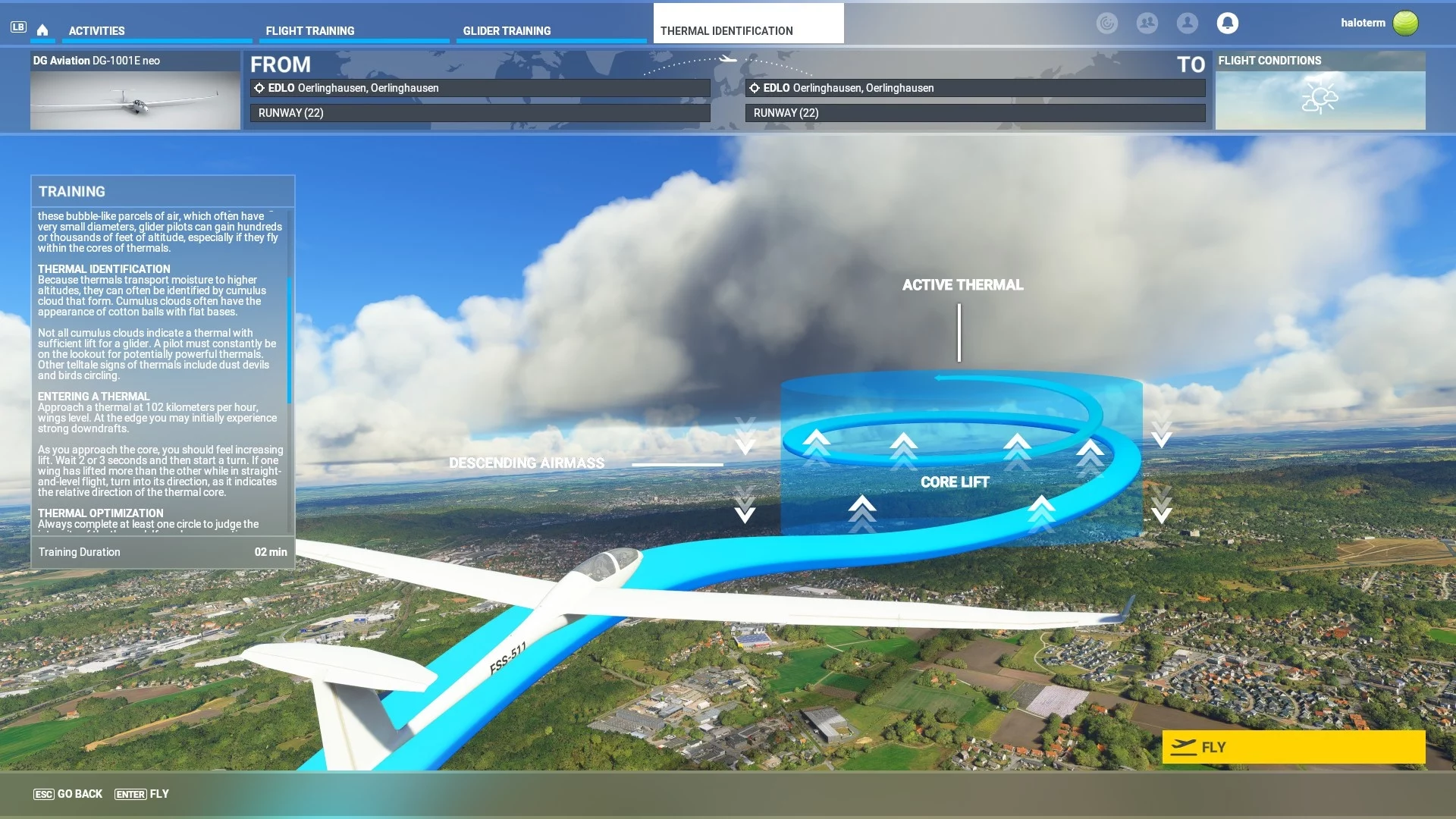Our Flight Simulator expert was supposed to write 12,000 characters for the 40th Anniversary Edition. But it turned out to be over 30,000, leaving nothing to be desired even by hardcore fans.
The Flight Simulator 2020 is now two and a half years old – 40 years of the entire series, almost as old as I am. With the exception of Mario and Wolfenstein, no game series that still exists today can claim that. On the occasion of the (40th Anniversary Edition) I was able to talk to Jörg Neumann, producer at Microsoft. Also present was Tyson Weinert, helicopter pilot and head of the Evergreen Aviation and Space Museum in Oregon, which cooperated with Microsoft in the creation of historic aircraft.
Now that gliders are officially supported, I also had a chat with José Oliveira, who has been flying gliders, among other things, for 40 years. Precisely because he loves flying and flight simulations, José has a very precise and always critical view of the flight physics and weather simulation of all PC-based simulators.
In the third year of their Flight Simulator, are Microsoft and developer Asobo finally achieving the ideal balance of accessibility and hardcore realism? And what are the biggest criticisms from fans like José? Read all this and more in an article for aviation experts and hobby pilots that goes into surprisingly deep detail without being boring – we promise!
Table of Contents
Nostalgia and joy of aviation
The Sim Update 11 brings a host of new vintage aircraft to the game, including a Douglas DC-3 and the Guimbal Cabri G2 helicopter. With Chicago Meigs Field and Hong Kong Kai Tak, two iconic airports are also included that have long since closed in reality. And those who have already been there in the old FS2004 and FSX will now find a number of classic missions in the activities. This combines aviation history with simulator nostalgia, and somehow Flight Simulator 2020 finally feels like part of the tradition-rich series.
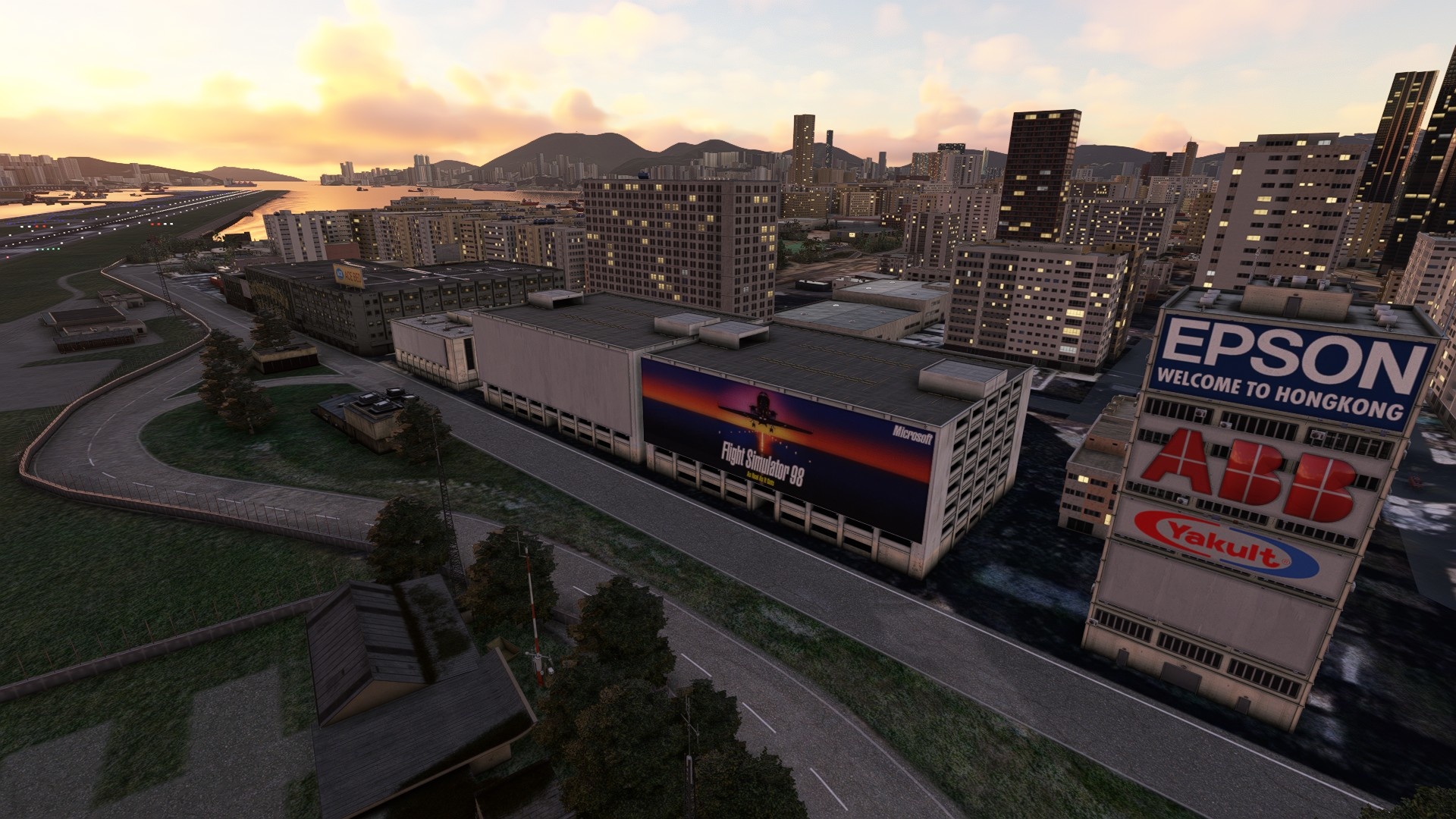
When we meet for the video call at half past nine in the evening, you can see Jörg Neumann’s enthusiasm. It is not a mere PR face that one might expect at such press appointments, but his satisfaction about what has been achieved together with developer Asobo is genuine. A few days earlier, a big birthday party for the simulator took place at the Evergreen Museum of Aeronautics and Astronautics in the US state of Oregon, of which Jörg still reports quite animatedly:
“We all came together as a team and it was great. Just sitting there with the Spruce Goose in the background, all the people who love aviation and know an incredible amount about aircraft. It was just wonderful. “
The “Spruce Goose” that Jörg reports so glowingly is (the nickname for the Hughes Aviation H4 Hercules), a true classic. The huge eight-engine aircraft, whose dimensions approach those of the Airbus A380 and the Antonov An-225, dates from a time when large flying boats were still used for regular travel. You may know her story from the movie “Aviator” (2004); in Flight Simulator you can now explore the world with the Hercules to your heart’s content.
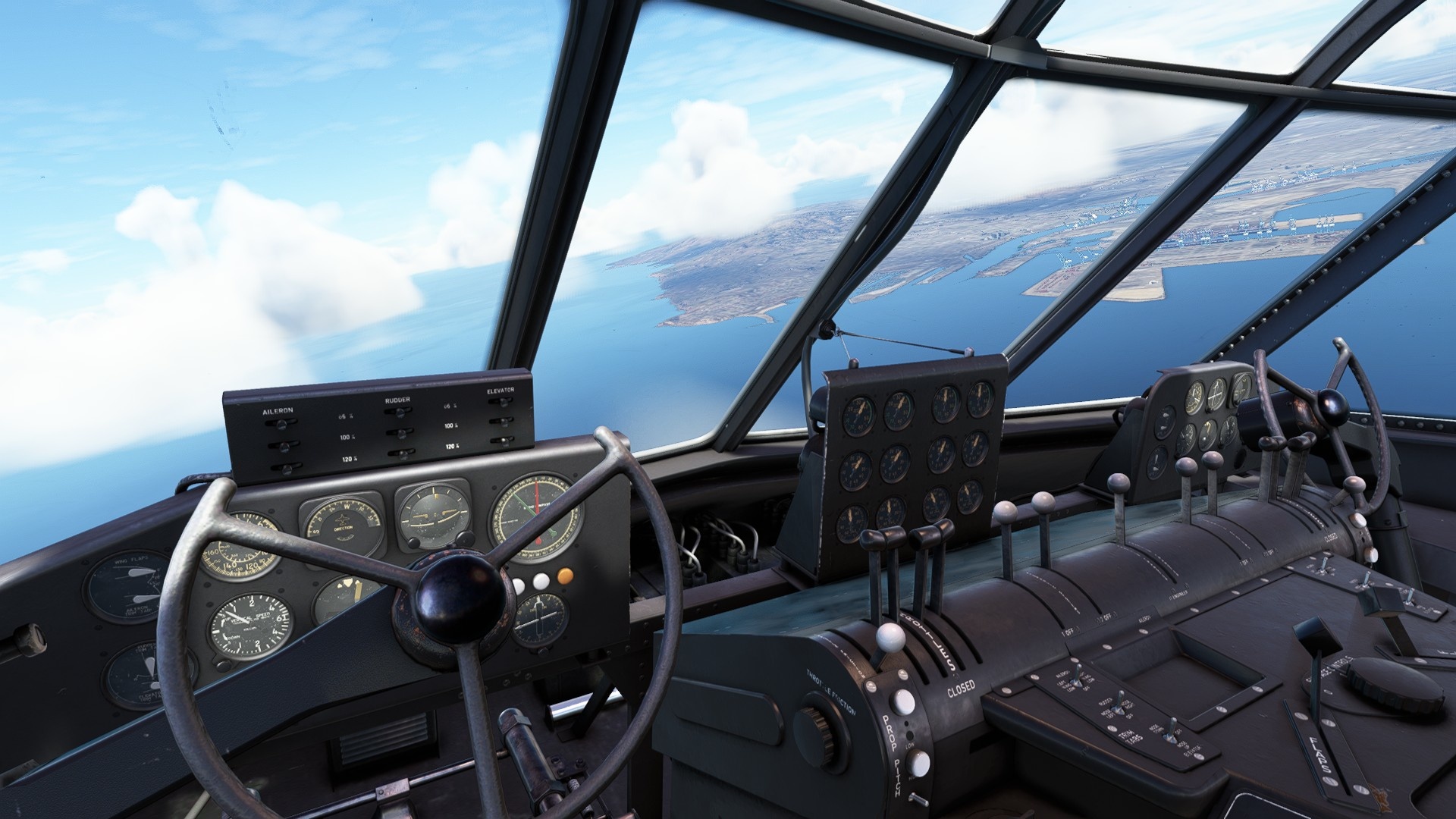
Tyson Weinert (the director of the museum where the real H4 has been on display since 1992) is also on our call and adds, “Joerg and his team have literally shared the digital version of the Goose that we preserve in our museum with the entire world. We invite everyone to get as much as they can out of the simulator and then visit us on site to see the real Spruce Goose.”
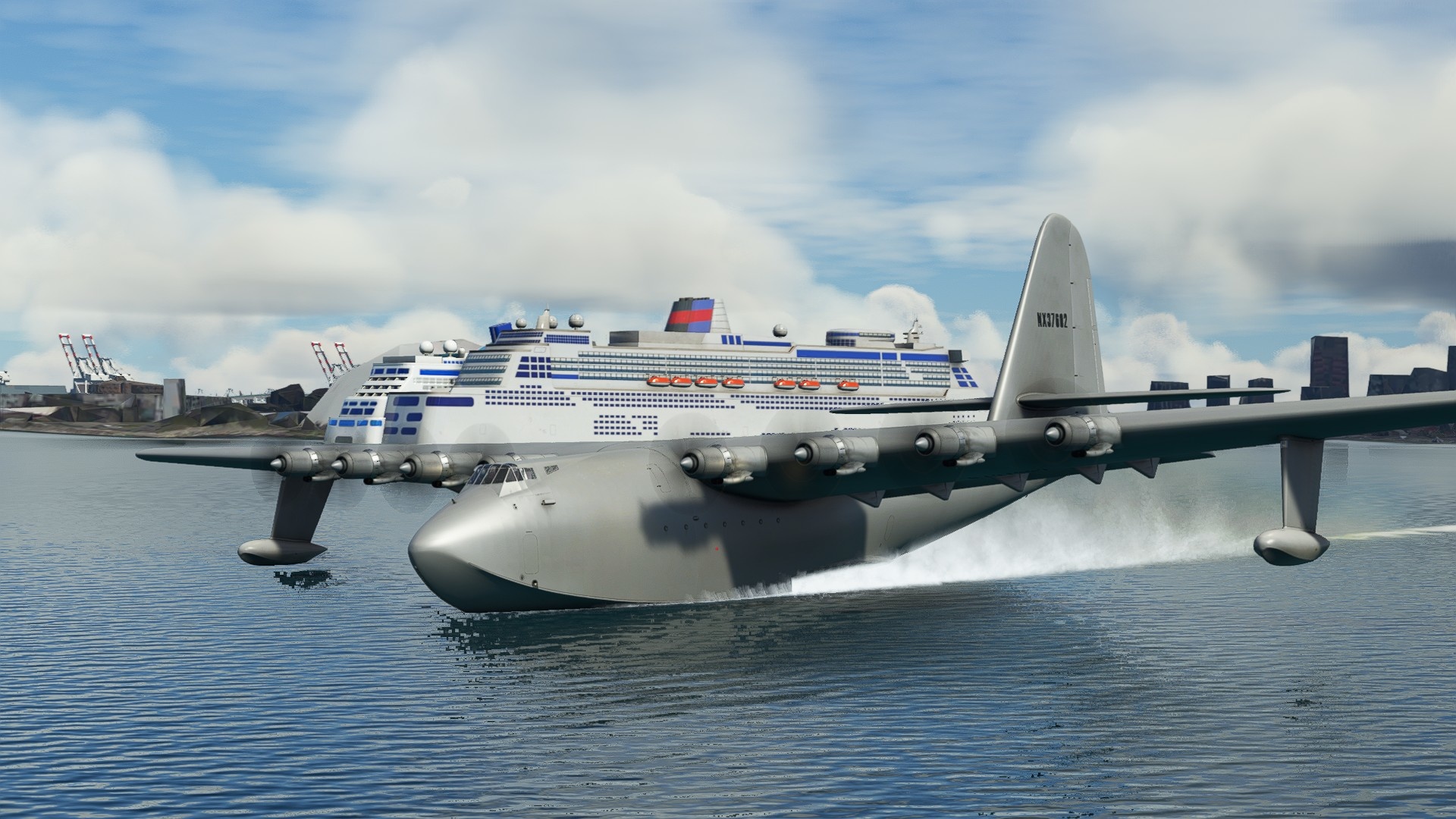
This was thought by many to be flightless – but on November 2, 1947, it took off from Long Beach, California, if only for a few minutes. At an altitude of 70 feet (21 m), still supported by ground effect, it soared 1.6 km. Theoretically, it was calculated that the intended flight performance (range 2,600 nautical miles, service ceiling 20,900 feet) could have been achieved in further flights. That this did not happen was due to the end of the Second World War – there was no longer any need for such a large aircraft.
Loud: Helicopters at last!
While the Spruce Goose is a fascinating piece of aviation history, native support for helicopters is arguably more significant for Flight Simulator’s continued development. Helicopters have been available for Asobo’s simulator for some time, but the flight physics required for them have so far been provided in external add-on modules.
Since Sim Update 11 and the release of the 40th Anniversary Edition, this is basically no longer necessary. For starters, two helicopters are supplied: the familiar turbine-powered Bell 407 and the French manufacturer Guimbal’s Cabri G2, which has a piston engine and somewhat resembles the Robinson R22. Why did Asobo choose this rather unknown model? Jörg Neumann explains:
“We chose the Cabri G2 because its manufacturer is located barely two hours away from Asobo. When I talked to the manufacturer, I told them that this was our first time making helicopters. None of us were helicopter pilots or had ever flown in a helicopter at all. We needed help and they said, ‘Yes, if you work with us, we will do our share of testing. You’ll get all the data you need.’ That was the main reason we took the Guimbal”
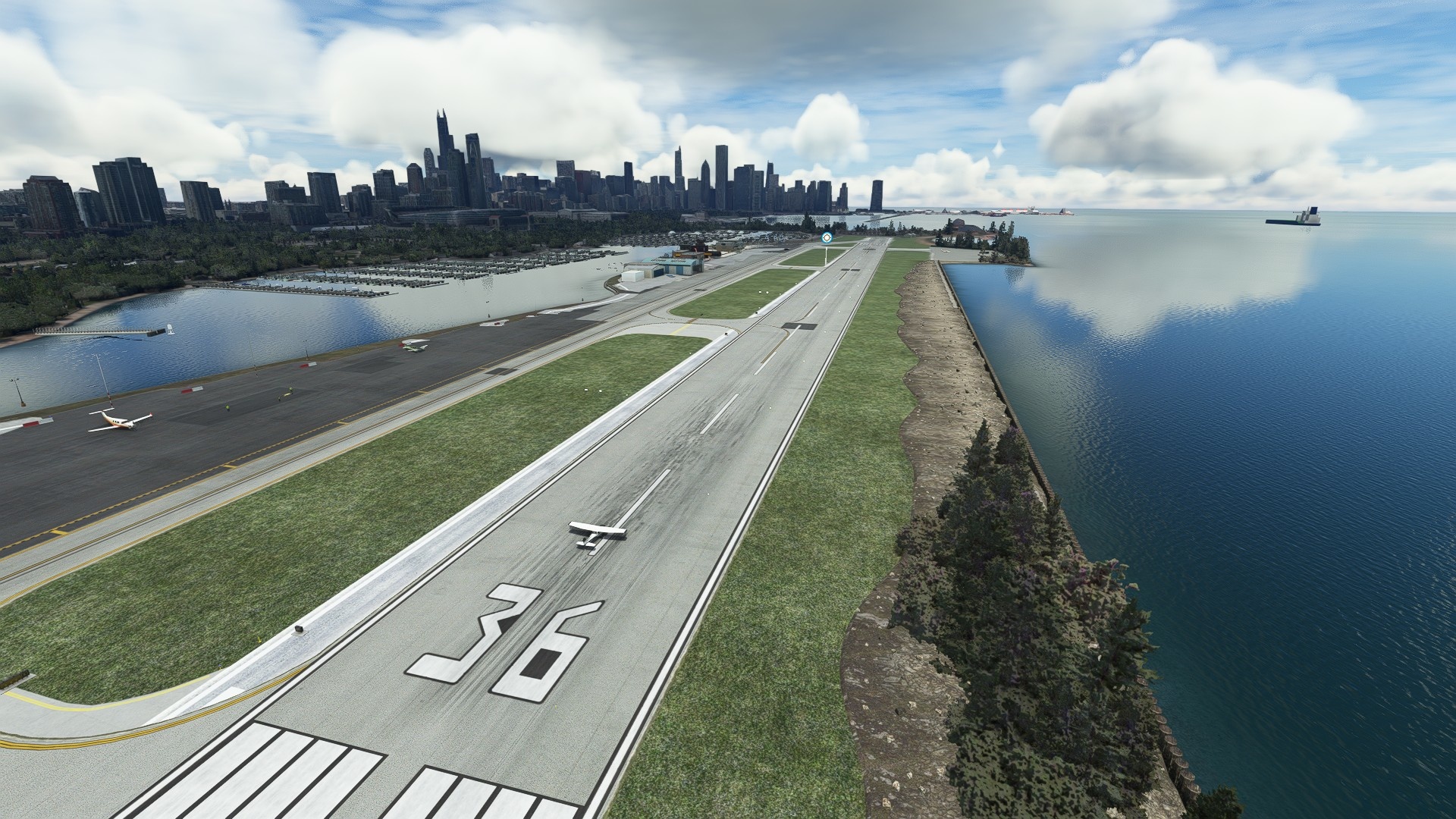
From my own experience I know how difficult it is to get from a real aircraft to a believable simulation – that you have to do hours of test flights, that you have to reconcile manual values with the feeling of flight, and that compromises are inevitable. Against this background, when I ask Jörg how elaborate the development of the G2 was, he elaborates a bit:
“Sebastian, our engineer in charge of the flight model and physics simulation, went over to the test pilots and started taking flying lessons. So he started flying around in the real Guimbal.” Real flying lessons? In a helicopter? Joerg confirms, “You can only get so far with books. You can read all the books, you can read the POH [the flight manual, editor’s note] with all the performance tables, you can look at all that, but you have to feel how it feels, otherwise you won’t get it right. “
And how long did that take? As players, we only get to see the final result and sometimes we can’t judge that at all. “I think it was about 1,000 hours of work. Think of it like this: You are completely immersed in the subject for a year, a year and a half. During the year and a half of development, we kept going back to the Guimbal pilots. We showed them our progress and of course got a lot of feedback. “
How realistic are the new helicopters?
As a helicopter layman (anything that isn’t a fixed-wing aircraft is suspect to me …), all I can say for now is that the G2 is a lot of fun at the moment. But the community’s reaction to the two helicopters is rather divided. While the experts at HeliSimmer.com have already expressed themselves quite positively, other users see a need for improvement, especially in the Bell 407, and have already published a first mod to correct this. The feedback on the modification, however, is itself divided – some commentators are enthusiastic, others note that the performance of the unmodified heli would be much more accurate. Microsoft itself is relatively relaxed about it. Jörg Neumann clarifies:
“We released the helicopters now because the test pilots told us it was ready. But you always keep learning. There are certain things in physics that we can always improve. We have our world simulation, which is already pretty darn good, but will get even better. There are a lot of things that we probably haven’t considered yet, and scenarios that we haven’t even discovered yet, I’m convinced of that. And then there are other types of helicopters. There are helicopters with three engines, there are gyrocopters; these are all things we still have to work our way through because they don’t just work right away”
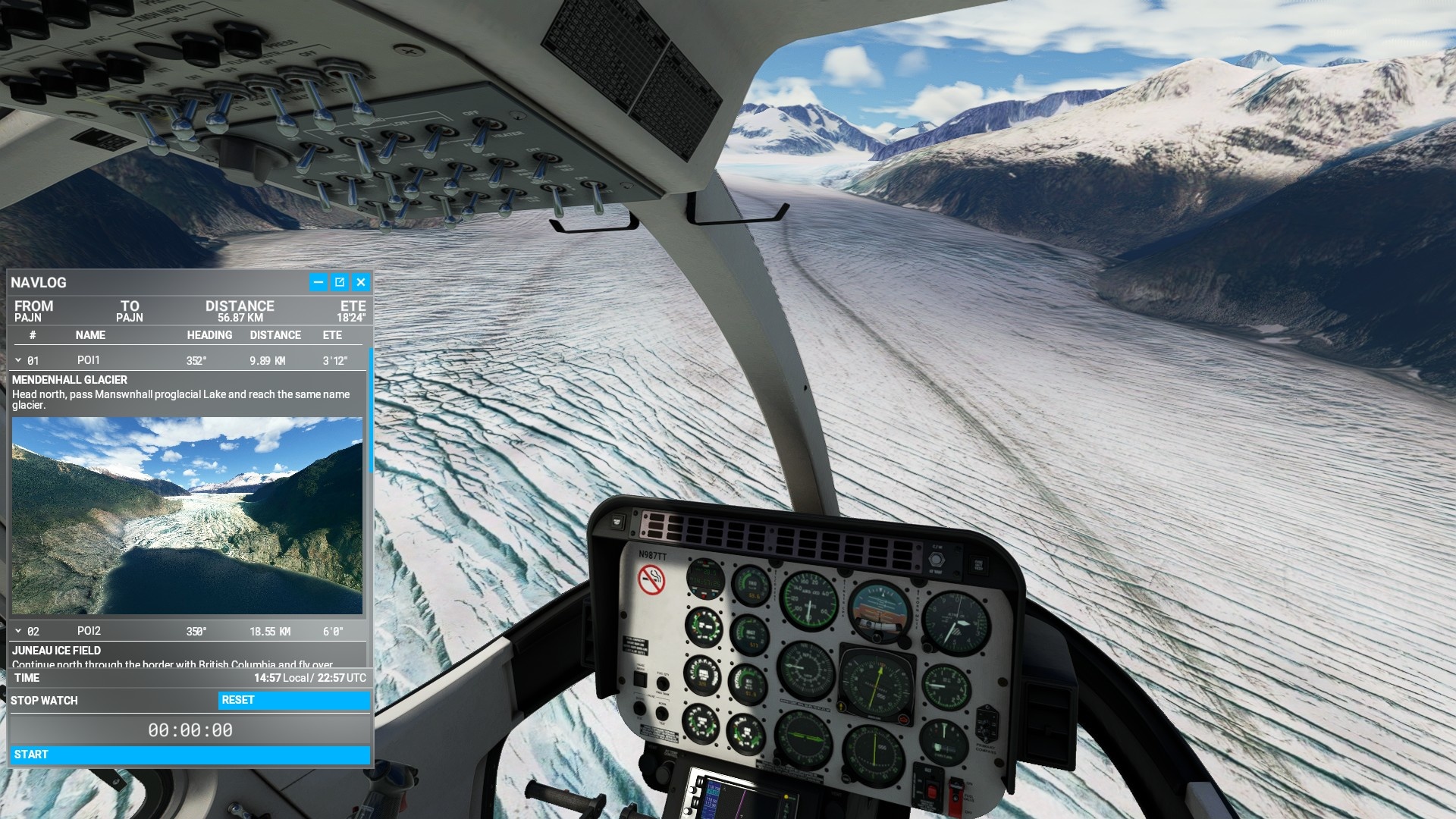
Simulation expert José Oliveira, who has been flying himself since 1980, uses all currently relevant simulators from MSFS to X-Plane to DCS and is not completely happy with any of them, is convinced that Flight Simulator as a platform still has too many construction sites after two and a half years. Mainly due to limitations in weather and aerodynamics, even the new aircraft could not develop properly.
José does think that the two helicopters are the best new aircraft in the current update, but he also writes to me: “I can at least use detailed commercial aircraft like the Fenix A320 or the PMDG B737 in MSFS as a procedural trainer and thus hide the lack of realism of other aspects. But if I take a small general aviation aircraft, a turboprop, an aerobatic aircraft or indeed one of the new helicopters (and even the Cabri G2, which is apparently the jewel in Microsoft’s CFD crown), then I know what I’m missing in MSFS from other simulators like X-Plane and DCS World.”
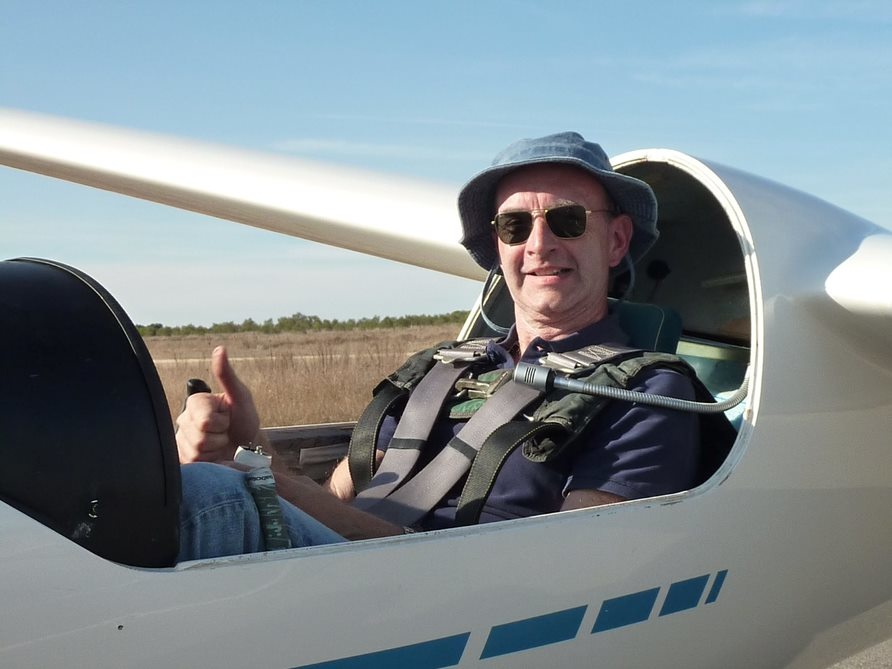
CFD Crown? CFD is the abbreviation for Computational Fluid Dynamics. Since Sim Update 9 (April 2022), a variant of CFD has been integrated into Flight Simulator 2020 and is supposed to provide much more accurate simulation of aerodynamics. I ask Jörg whether CFD can be compared with Blade Element Theory (BET), which X-Plane fans in particular like to present as the ultimate. Jörg does not elaborate on the other simulator, but sums it up as follows:
“When I talk to our engineer and physicist Sebastian about theory, he always chuckles a bit because in the end it’s all about physics and there are two things: the control surfaces [airfoils, rudders, etc., the ed.] and the air masses, and these two things interact with each other.”
In other words: Ultimately, every simulator must manage to simulate the airflow on the aircraft in such a way that credible effects are created. There are different approaches to this, but in the end it is the overall impression that is important. Jörg explains this to me in more detail by comparing the new helicopters with the old FSX:
“We already had helicopters in 2006. But with those, there was only one control point where all the physics was calculated, which was ridiculously simplified. At that time, it was basically a flying box that was only animated to look like a helicopter. When Sebastian looked into it, he realised what we needed to improve“Jörg goes into depth :
“First of all, we had to simulate the rotor blades much more precisely than we first thought. Rotor blades bend a lot. They make a lot of movements that people who don’t deal with helicopters don’t even know about. To get that into the flight simulator, we had to develop a rotor blade simulation that has hundreds of control surfaces
Secondly, the ‘flapping’ of the rotor blades, which means that the rotor blades move up and down in the right way. This is important because the air behaves differently on two different sides of a helicopter. We had to develop that from scratch.
And thirdly, the airflow: we have already implemented the simulation of the [game] world using computational fluid dynamics. In principle, you see the air masses arriving. There is a vector field in the air and the vectors [representing the airflow] go up the mountains. When they come down the other side of the mountain, the air warms up [because the air pressure increases downwards and heat is generated by the compressed air]. This creates turbulence, among other things. All this was already correctly simulated. But for helicopters it was not sufficient because the main rotor of a helicopter pushes a lot of air against the fuselage. In addition, there is the tail rotor, which is used for steering “
Learning by sight
So there are a lot of things going on in the simulation that we as users don’t even notice – we just want it to feel believable. With Sim Update 11, however, you can display a visualisation of the air currents on the aircraft and in the landscape in the assistance options.
In addition, there is the option in the developer mode to show the forces acting on the aircraft (such as the lift on the wings or the rotors). Both together give quite a good picture of what the simulator actually does when you make a control input or when the thermals change due to landscape conditions. Surely something like that can be used for learning, can’t it? To which museum director Tyson Weinert replies:
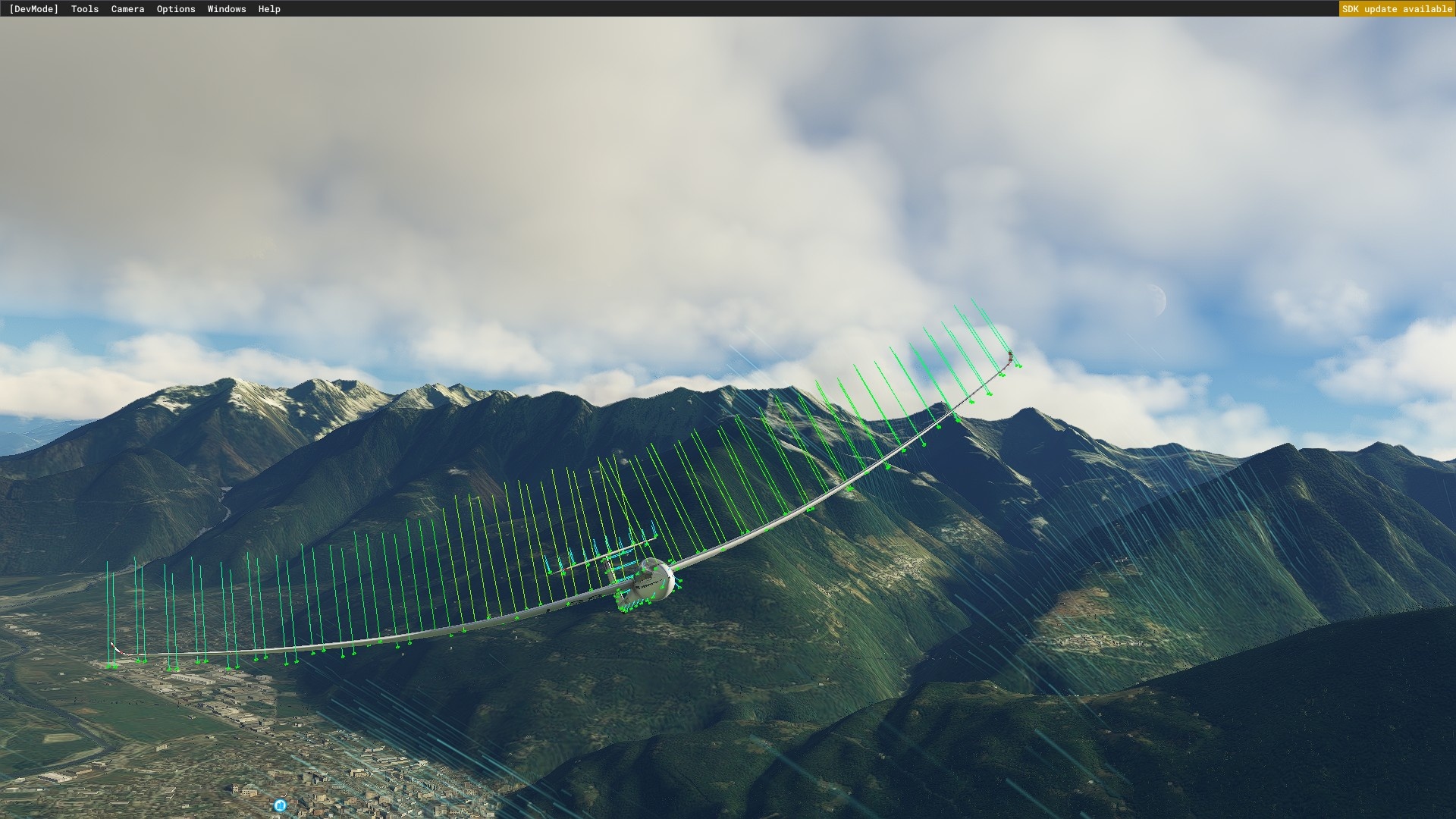
“I was a helicopter pilot in the U.S. Coast Guard for several years, I have over 3,000 hours of flying time. And I was very impressed with the degree to which the behaviour of the airflow is reproduced and represented in the Flight Simulator. I joked with Jörg that I wondered what a much better pilot I could have become if I had had such opportunities to understand airflow in this way during my time at flight school.”
Would it be conceivable, then, that – similar to FSX back in the day – a professional version of MSFS 2020 would be released that could possibly be certified for training purposes? After all, X-Plane likes to advertise it, and AeroflyFS is also partly already used in an official capacity. I can see from Jörg that I am certainly not the first person to ask him this question – on the contrary.
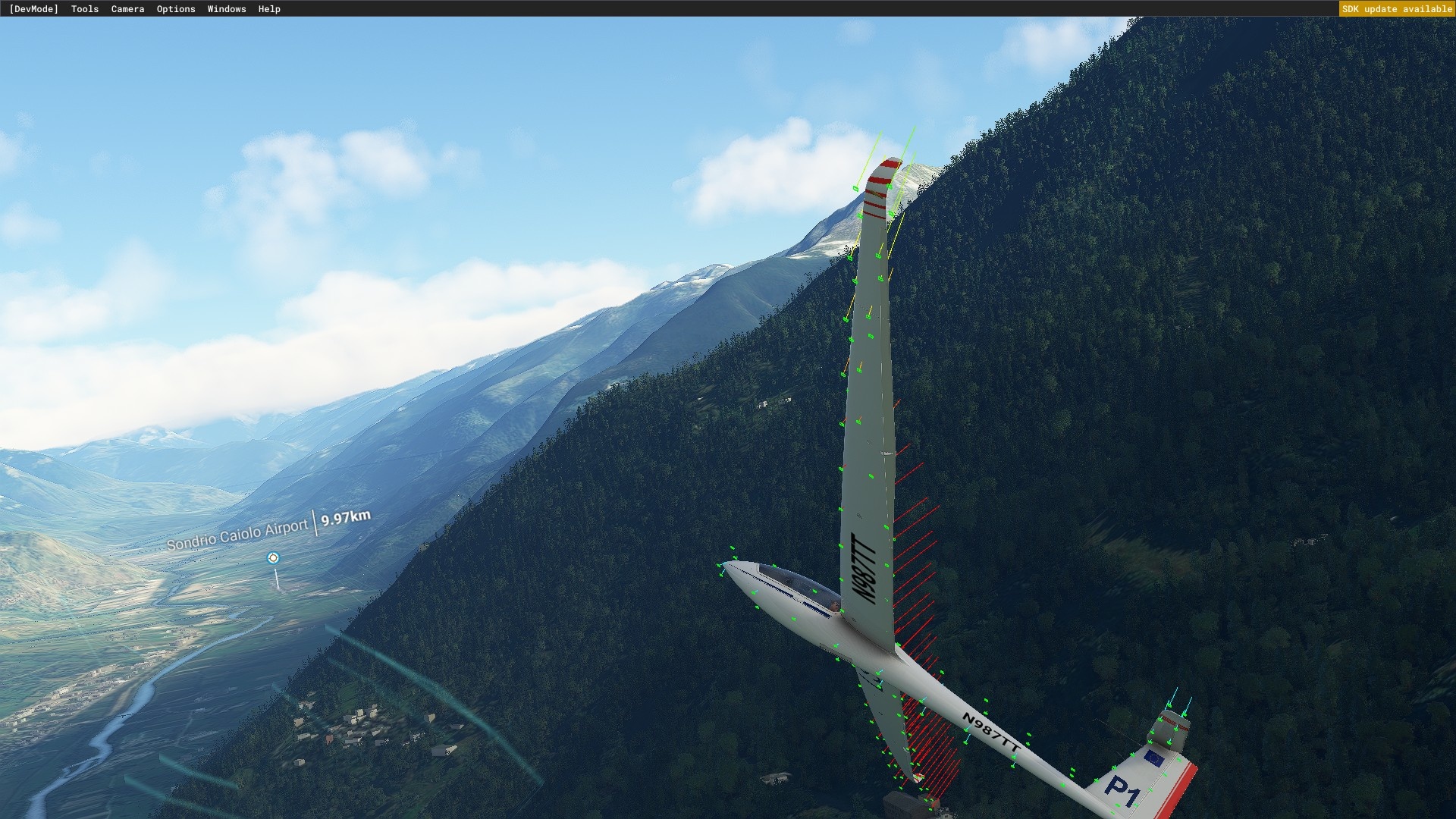
“I’ll try to give a nuanced answer to that,” he says. “It’s interesting how many days – almost daily – someone sends me a picture where Microsoft Flight Simulator is being used in some flight school. It’s not a Level D simulator, of course, but still. I always thank them for sending it to me. Our EULA doesn’t actually allow that. But not because we don’t want to, but because we have to sign licences ourselves to create aircraft. As a developer, you have to sign a contract that allows you to do some things and prohibits you from doing other things. Big aircraft manufacturers have their own training programmes and their own software that they use.”
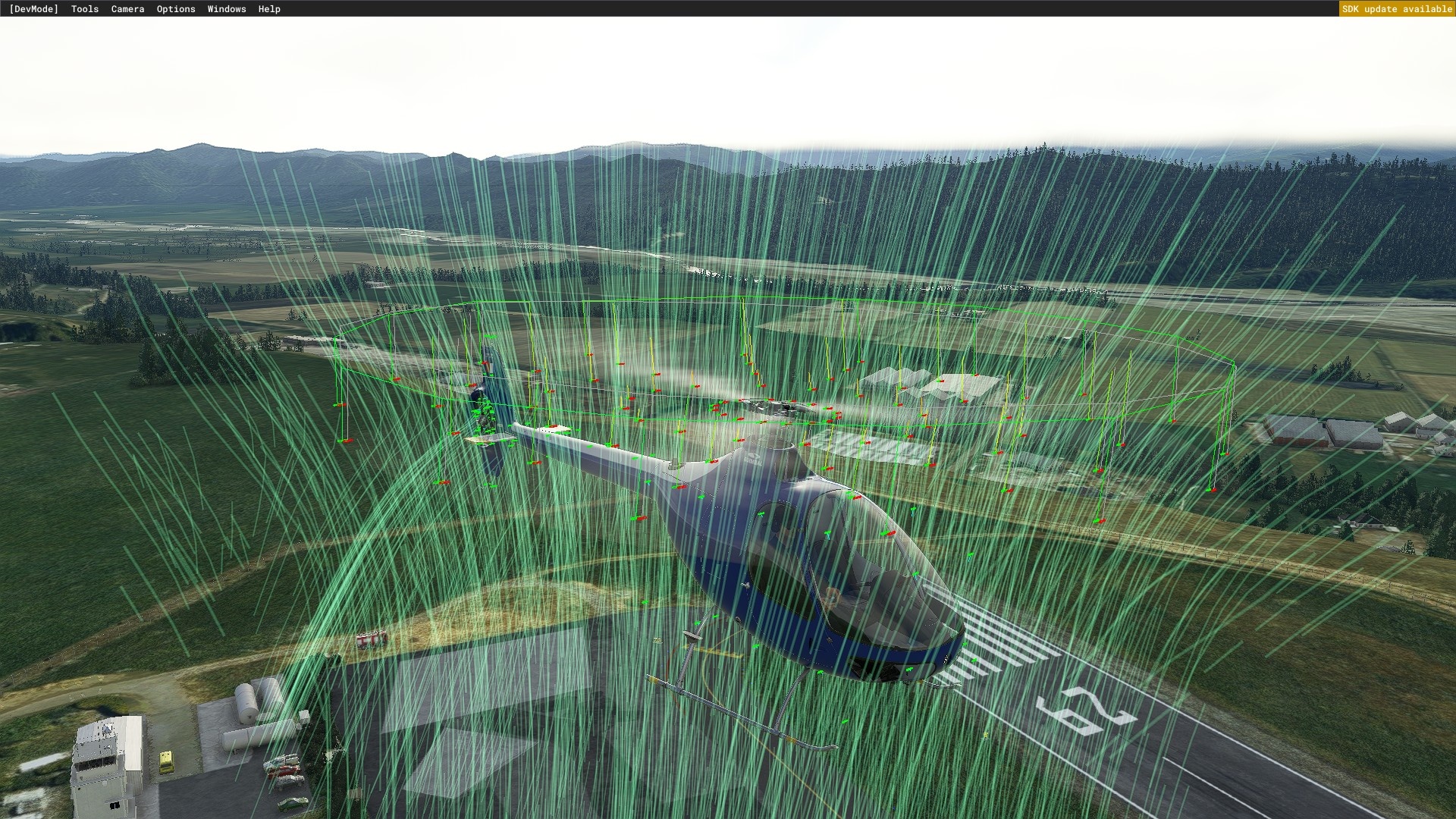
Tyson recalls his own flight training in this context: “When I was a professional student pilot, we used to challenge each other with video games. We just played normal games but had our emergency helicopter checklists with us. We were trying out if we could replay the checklists from memory while we were busy with another task and suddenly someone interrupts and says there’s an emergency.”
“The nature of the games was not important at all at that time. I think every student pilot is innovative there [when it comes to learning]. If today’s student pilots take advantage of what Flight Simulator has to offer as it turns 40, they’ll be much, much better off than we were with our ideas back then”
On that point, simulation expert José Oliveira also agrees: “Microsoft Flight Simulator 2020 is incomparably superior to X-Plane when it comes to scenery and some aspects of weather representation. This alone is a reason why it can be successfully used for training certain gliding tasks or for post-flight debriefing. In real life, I fly from a small airfield in southern Portugal (Montemor O Novo; ICAO acronym LPMN) and even the standard display is so close to the real airfield, and so is the environment around my flying club, that Flight Simulator can be used for training and familiarising new pilots with the area. “
Quietly: Gliding at last!
As a glider pilot, José naturally has one opinion in particular about the gliders added in Sim Update 11. As with the helicopters, gliders were already available as add-ons before, but now they are officially supported – what Jörg told me about air currents plays a special role here, because gliding is done with the help of thermals.
For the time being, however, José’s verdict on this is sobering: “That realism I mentioned and the Wow! effect unfortunately end the moment you start flying.” Can José elaborate on this for me from his forty years of gliding experience? He tries a comparison:
“The Microsoft Flight Simulator is like going to the Louvre or the Musée d’Orsay in Paris, but all the paintings by the Impressionists would be replaced by drawings by people like me. The ambience would still be great, but when you looked at the exhibition you would shout, ‘What is this?’ I would say the MSFS offers us sketches of what it means to model something correctly “
This is a subtle comparison, but it contains a drastic judgement. For someone who, as a glider pilot, really has a lot of experience in feeling the behaviour of an aircraft in the air masses, is the flight simulator then just eye candy, but nothing more? I guess it’s a question of aspiration. José briefly explains his flying and simulator background to me:
“In real life I have been flying gliders since October 1980. I have also been lucky enough to try out various general aviation aircraft, as well as some military trainers when I was serving in the Portuguese Air Force. I was also once in a Level D simulator of an A320, and because I work for a weather service, I have also had the privilege of flying in the jumpseat of passenger aircraft a few times. So I have a great passion for aviation and for flight simulation “
Based on this perspective, José assesses flight simulators – all of them, in fact, and with all of them you have to live with more or less major compromises. Regarding Flight Simulator, José writes to me: “The two gliders in Sim Update 12 are similar to many models I have flown in real life. That’s why it’s relatively easy to do certain tests and see how they are modelled. On the positive side, the two gliders show negative turn moment [the tendency of a glider to yaw in the direction opposite to roll, which you compensate for by coordinating aileron and rudder], although the implementation is strange.”
“In other respects, the gliders feel detached from reality when it comes to, for example, their response to control inputs, their inertia, their response to airbrake extension, their stall behaviour, and so on. I suspect I would also find limitations in terms of flaps if these models had them.”
It’s a similar story for José when it comes to weather: “Gliding weather and what they call convection is modelled and has a lot of potential – like pretty much everything we always see in these beautiful streams from Asobo, Microsoft and third parties. But it’s inconsistently implemented.”
José comes across to me as genuinely sorry to give me such negative judgements, given his high regard for other aspects of Flight Simulator. The great scenery, which is very useful for flight planning and debriefings of real flights, as well as the procedural simulation with commercial aircraft are arguments in favour of Flight Simulator in José’s eyes. The core aspects of the simulation also show a lot of potential, but simply need more updates in the eyes of the glider pilot to be really satisfactory from an expert’s point of view.
Agile development and error triage
But: Frequent updates can also bring problems. A criticism and indeed a concern of many users is that each time a new update is released, previously working parts of the programme or third-party products become unusable, requiring further patches – for which one must first wait. A fast development method with frequent changes is therefore not everyone’s cup of tea.
Currently, this applies to AI flight traffic with external traffic tools such as FSLTL, which no longer works properly since Sim Update 11. The simulator’s own AI traffic can now use – in a still limited way – standard approach procedures (STARs), which however undermines external traffic injectors, and a quick solution for this is not yet known.
Another problem: the bug-free nature of new features. In general, Sim Update 11 was spared major problems, but of all things there were problems with the long-awaited Airbus A310 – a very system-deep model. For some users, the frame rate dropped unusually low and speculations quickly spread that the WASM interface, which is important for external modules, could be the cause of the problems.
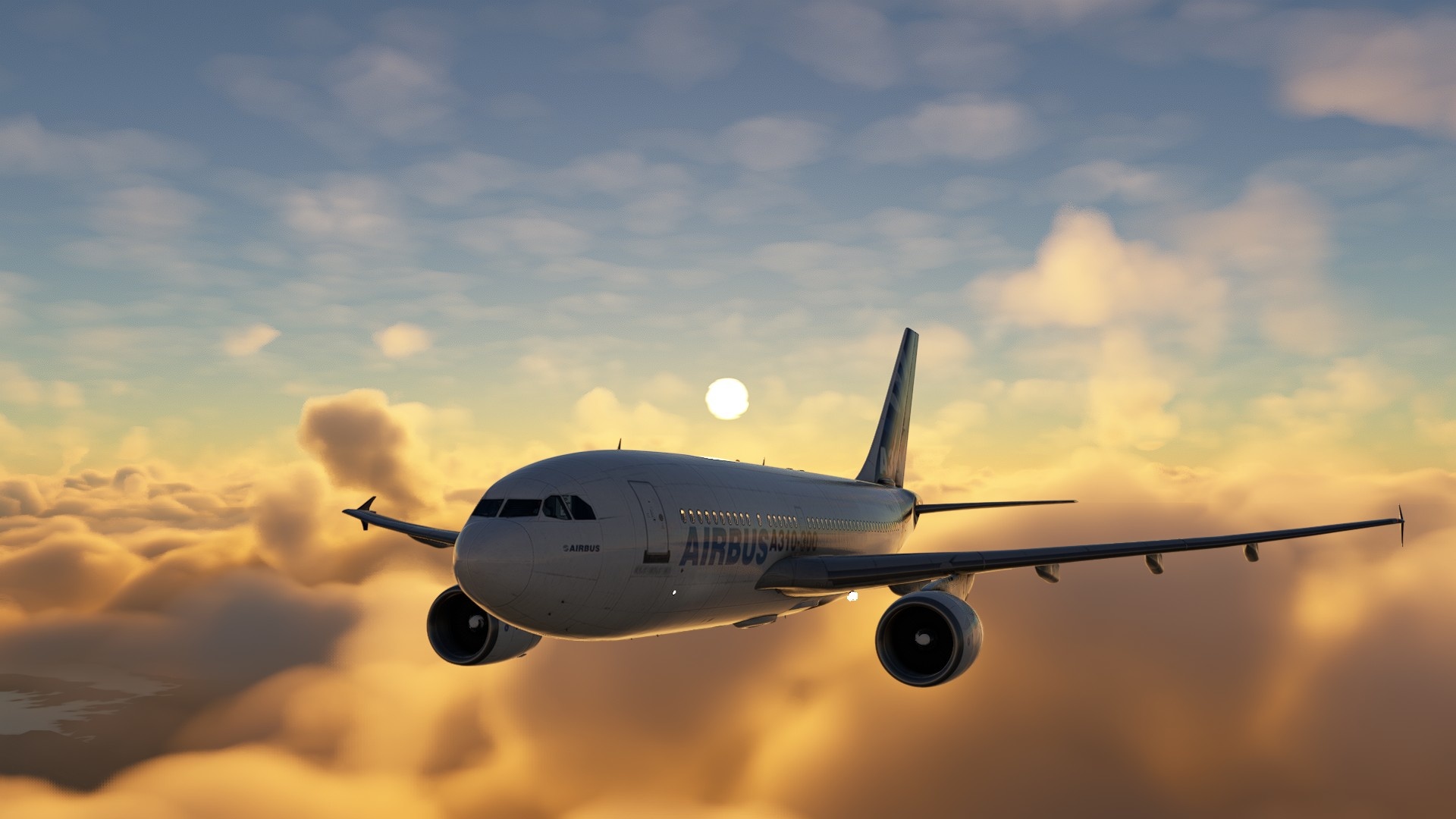
I take the A310 problem as an opportunity to ask Jörg about the process of beta tests: How is the feedback of the testers taken in, how is it weighted and prioritised? His answer: “Just because someone says something doesn’t mean it’s correct. For example, when people say that there is a connection between WASM and the A310 that affects performance, that is completely wrong. Someone is making up a possible explanation, but it’s wrong. There’s not much you can say about that either. So, on the beta question …”
I interrupt Jörg and point out that not just anyone has made this assumption, but the developer of the A310 himself. “Yes, unfortunately,” says Jörg, “but the developer is not part of the platform team, and he was indeed wrong, and we also told him he was wrong.”
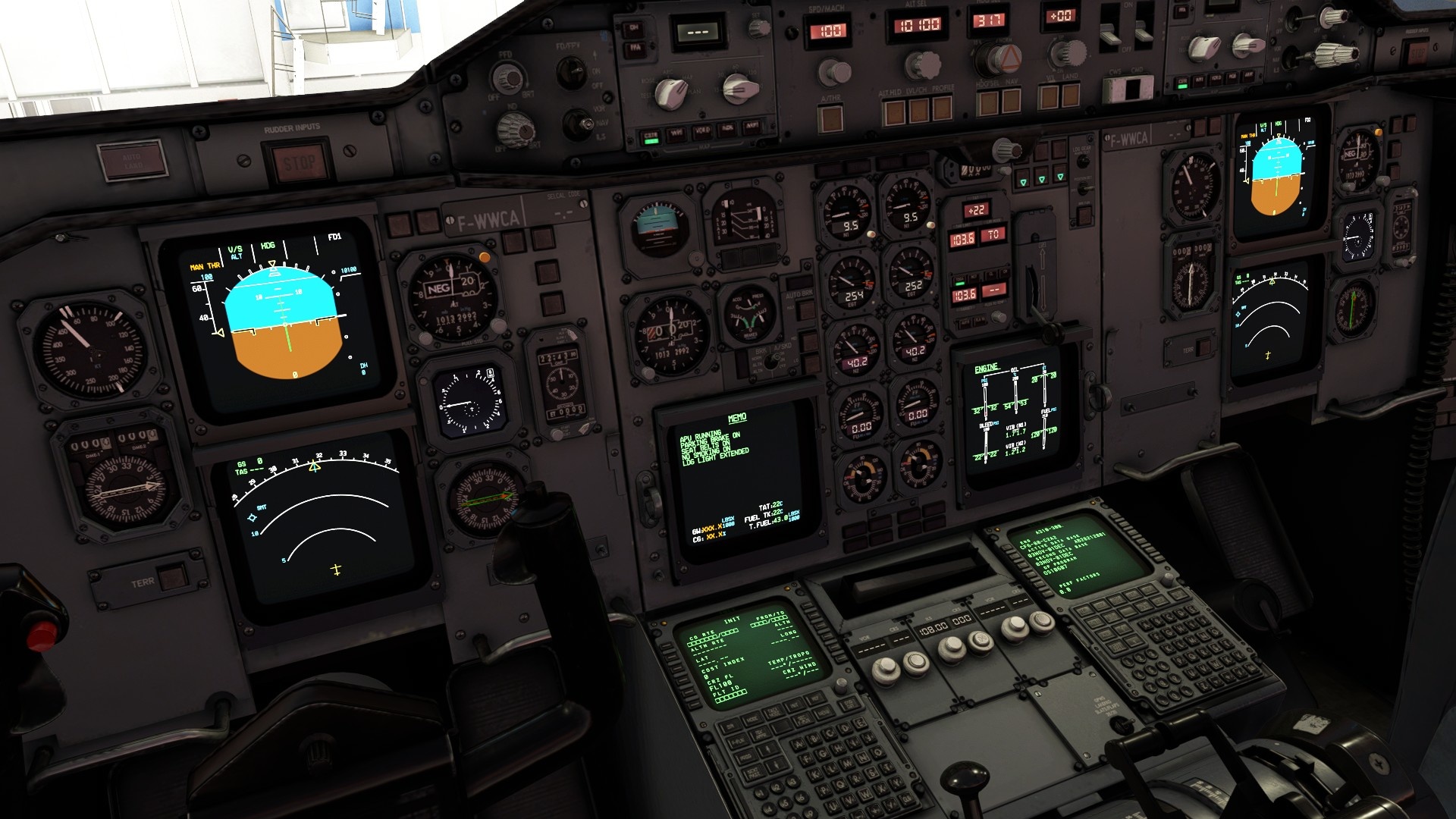
“Asobo develops the platform, and the owner of the platform knows what the platform does. We welcome the work of the community teams because we do it for the community with the community, and we bring in teams like the iniBuilds people here because they are experts at developing Airbusse. But the fact that they can do it, and that they have developed Airbuses before, does not mean that they know how the platform works.
Obviously in this case they said something; people went to the forums and reported performance problems and wanted to know the reason. But that wasn’t the reason, it was just speculation and it was wrong to say that. Unfortunately, it gave the impression that they knew what they were talking about, but that was not the case. Not in this case. They know about the plane, but they don’t know about WASM, and the real issue was something else entirely”
That’s interesting – what was the cause of the FPS problems, I ask. “There’s something called Coherent GT, which is our middleware to write HTML pages needed for glass cockpits [cockpits with computer displays]. They now had their aircraft cabin and inside that they had the seats, and each one was basically its own glass cockpit and they just forgot to turn that off.”
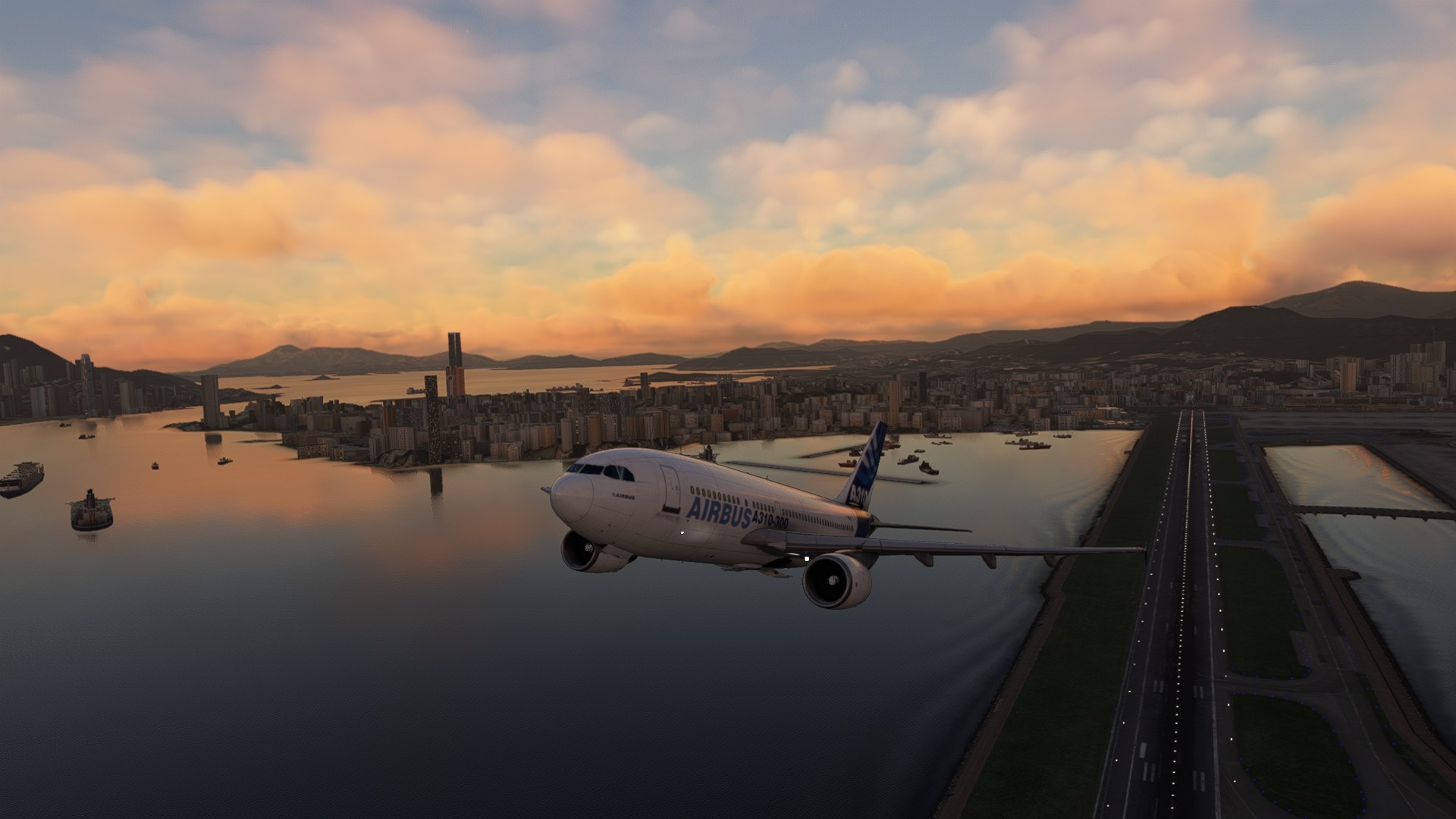
“It wasn’t even code, but that caused problems on some systems (not all). But people are starting to speculate. They’re all trying to help, but in this particular case they were moving into an area where they would have been better off saying nothing. They would have been better off saying that they are talking to the platform team about it, that would have been the better answer. We’re just finishing up a patch and then we’ll be fine.”
I notice here Jörg is very keen to highlight the differences between the simulator platform and the aircraft running on the platform: that the simulator itself is not responsible for all the problems that might occur with certain aircraft.
On the other hand, from the player’s point of view, the aircraft supplied are often simply perceived as part of the simulator, and how its developers organise themselves among themselves or how this is technically connected is interesting, but rather secondary from the customer’s point of view. This makes extensive beta tests all the more important. So let’s get back to the question of how the beta process works.
What developers learn from beta feedback
In the immediate aftermath of Microsoft Flight Simulator’s original release in 2020, when there was no beta, updates came out pretty quickly but also broke working things more often than they do now before. That improved with the introduction of beta testing. With Sim Update 10, Microsoft and Asobo took a long time, while Sim Update 11 has now come out a bit faster again.
“Yes, you’re right,” Jörg agrees. “We tried to be as active as possible at the very beginning, which means there was a lot of feedback, and we tried to respond to feedback as quickly as possible, and we released updates to a large code base once a month. But when you do something like that, you don’t have time for a beta at all, so we had tested it with our own 100 or so people.”
But that’s not enough, right? So at some point we had to say we’re going to reduce the rate of sim updates, to every few months instead of every month,” Jörg recalls. “And that allowed us to establish a beta. And depending on the beta, there are about 50,000 people who play and give us feedback, and we listen to the feedback for a couple of months, and improve, and then we release. And that’s what we’ve done for Update 10. “
“And how does that work when the developers get beta feedback?”, I want to know. “Well, the beta team reports things to us – we have dozens of people keeping an eye on the forums and looking for feedback,” Joerg explains. “We have a triage process where we consider the urgency of the feedback and the number of instances where it’s come up. Then we fix the bugs as fast as we can, and at some point we say it’s sufficient. If you fix hundreds of things, then you risk accidentally doing something you didn’t know about. But this way we are limited to a few dozen fixes.”
I ask if Microsoft and Asobo plan to release an update before Christmas. Jörg can’t promise anything about that yet, but they are working on it: “We are looking at what it looks like. We intend to release it as soon as we can, but I don’t have a fixed date for it, because it’s a dynamic process. We have an agile development approach”
“We’ll see what people have to say. Right now they’re signing up for the beta; I haven’t seen the final numbers right now, but I expect 30-, 40-, 50,000 (sometimes more) to look at it. They’ll give us feedback and then we’ll either have more bugs or not. And if not, then the update will come soon. But if it’s a few more things, then we still have to test a new version. That’s just the way it goes “
Editorial Conclusion
One thing became clear in the conversation with Jörg Neumann and Tyson Weinert: that Microsoft and Asobo are serious about constant improvement and further development. Even sceptics should now be able to see that Flight Simulator is a long-term project based on the extensions and improvements that have already been made. It is not a quick fix like the disappointing Flight from 2012. The third-party market, which is important for long-term success, is just as lively as the freeware scene, which is mainly found on flightsim.to. And the 40th Anniversary Edition is also simply a sincere declaration of love for the history of aviation and the beauty of flight.
But experienced voices from the community, such as that of José Oliveira, who is here representative of other aviation and simulator experts, also show that the journey is not over yet. The introduction of Computational Fluid Dynamic in April and now the first native helicopters and gliders based on it are not an end point, but intermediate steps and new starting points.What will be important is that, despite all agility, a compromise is found in which new features, expanded functions and bug fixes are tested promptly, but as reliably as necessary. This requires the participation of not just many, but many experienced users in the beta tests, so that even problems that are not obvious at first glance are reported in significant numbers.
Perhaps it would be good if Asobo also steered the process a little with concrete test tasks instead of just waiting for feedback. Bugs like in the Bell 407 helicopter, where the torque never goes above 85 percent, or the historically incorrectly named 1927 date in the “Spruce Goose” mission can be overlooked when just “playing” a beta – but with a few test guidelines (“What to look out for”) such things could be caught more easily. Then updates and new features would become even more rounded, so that at some point even critical customers like José would be picked up.

